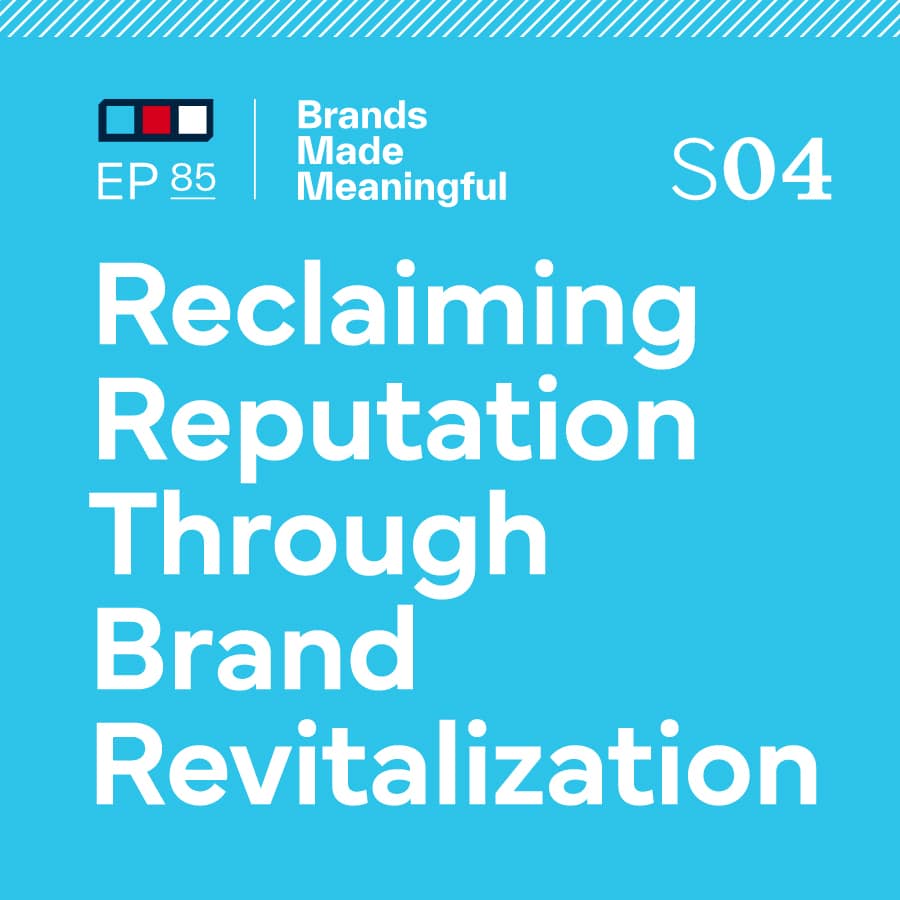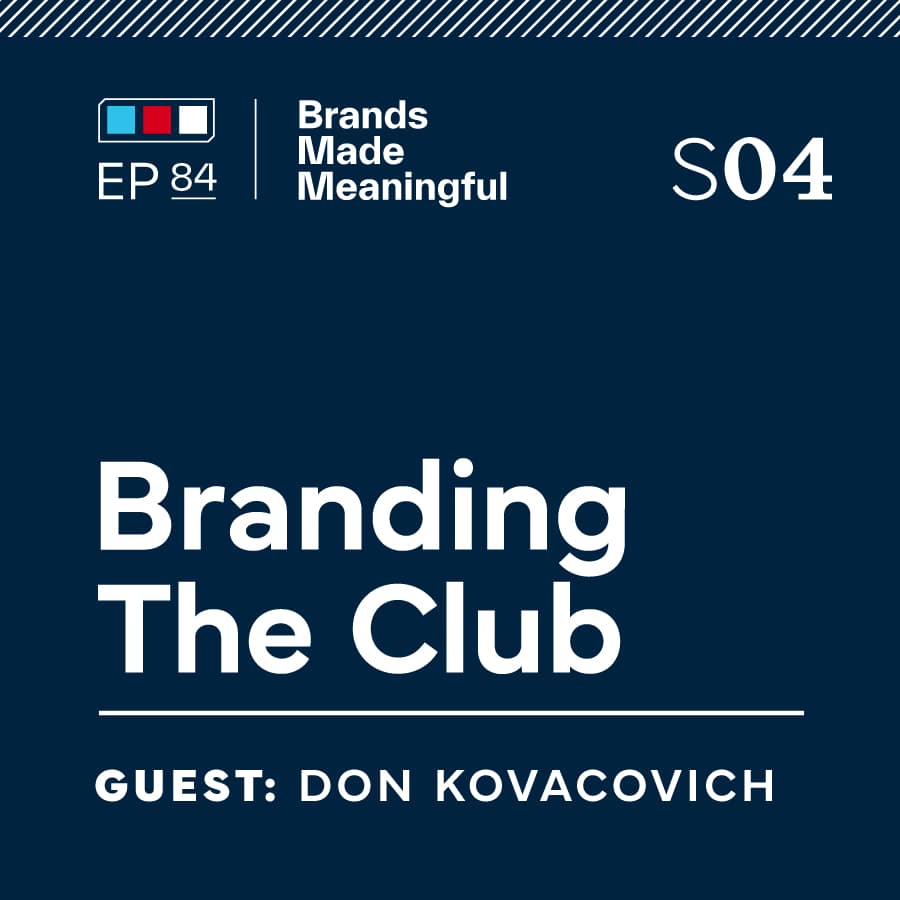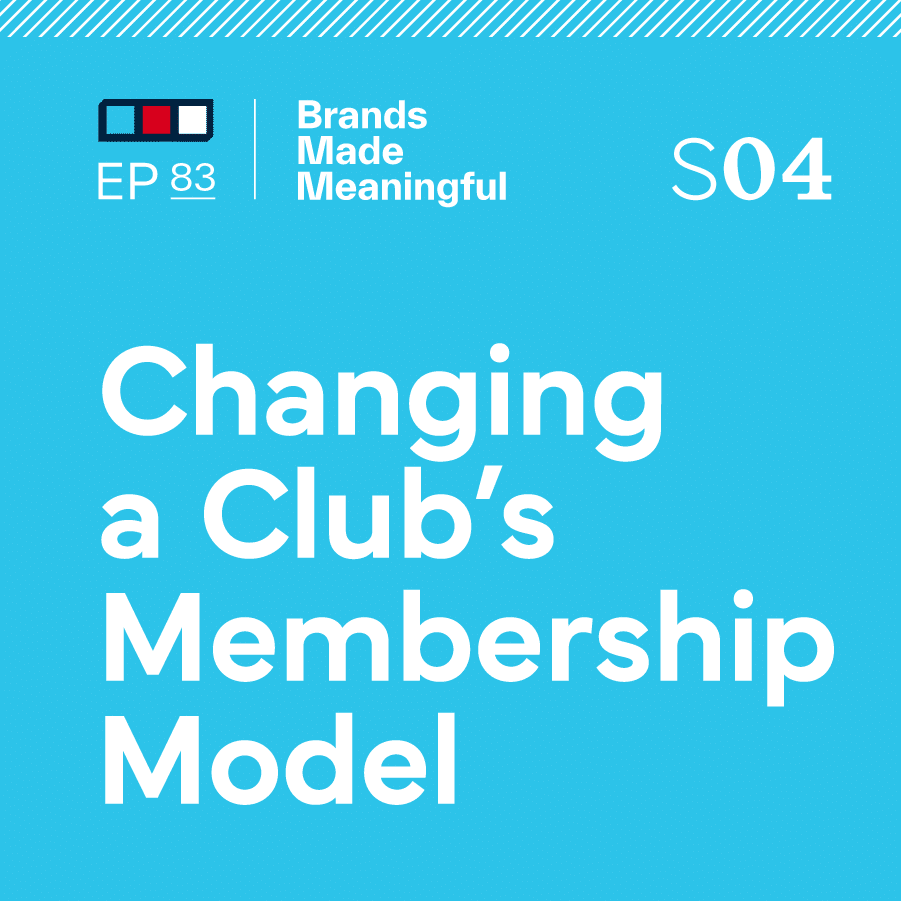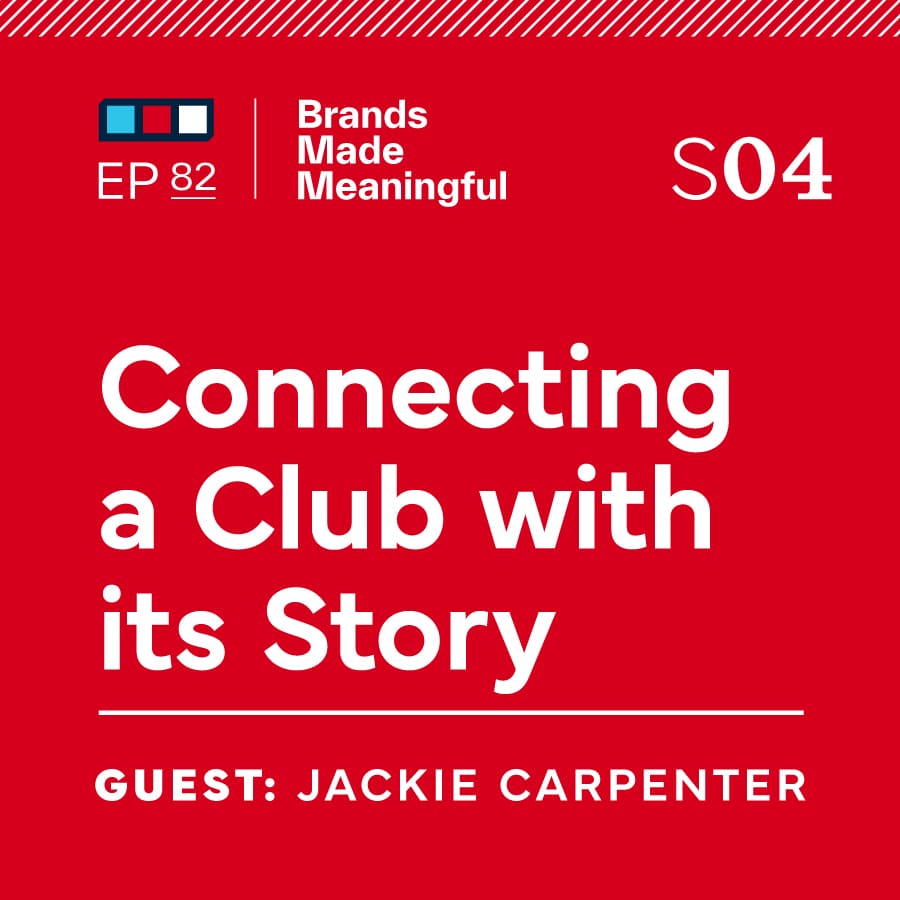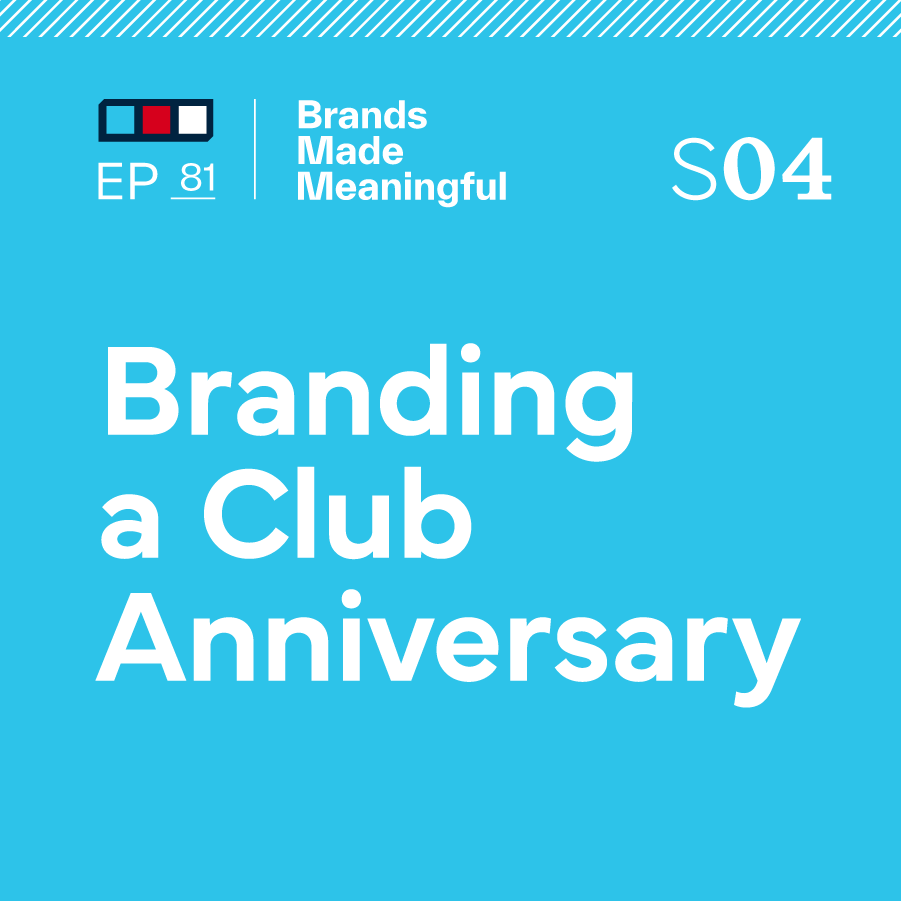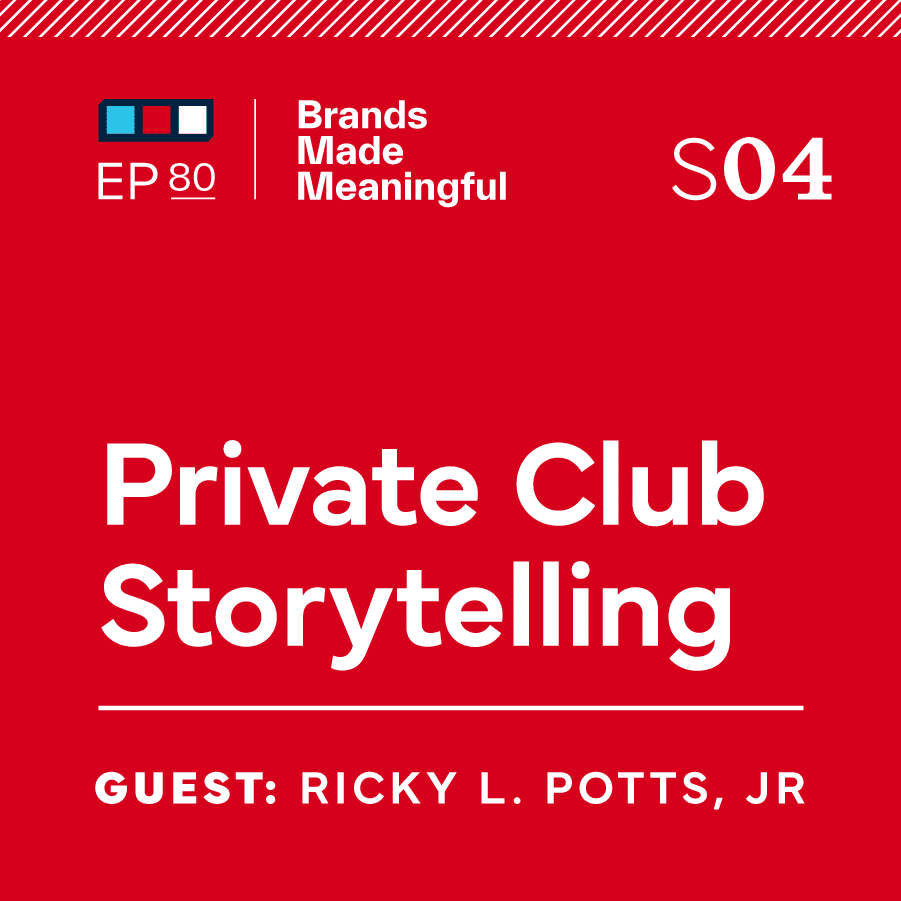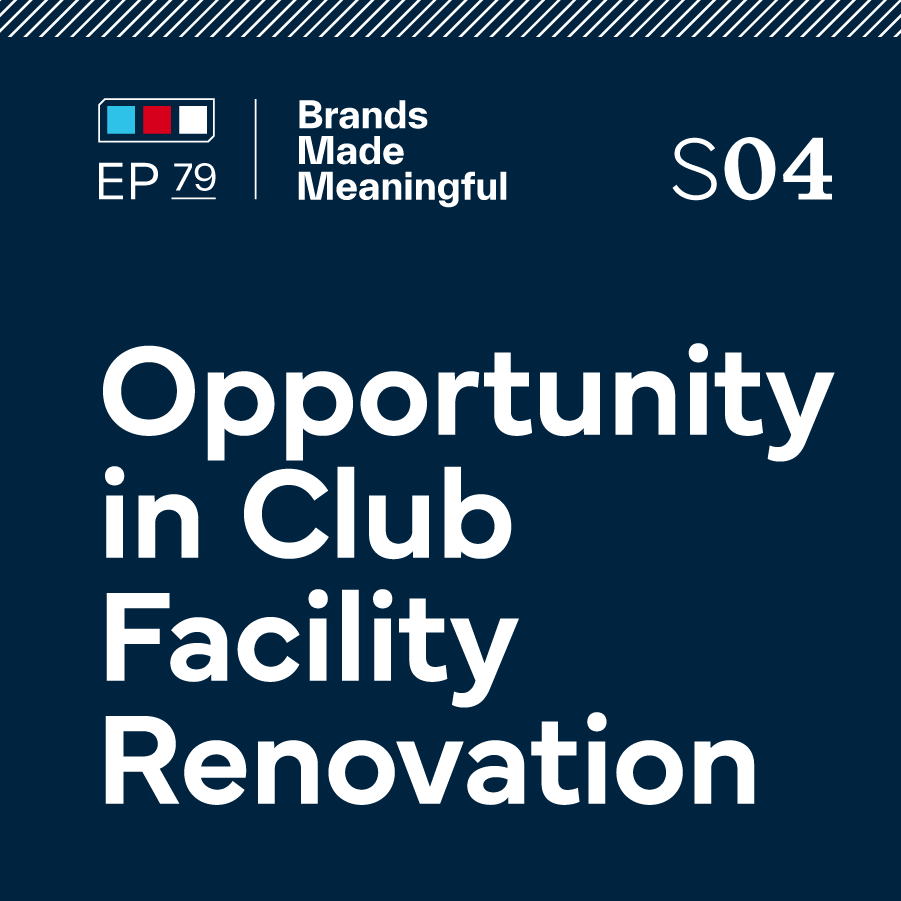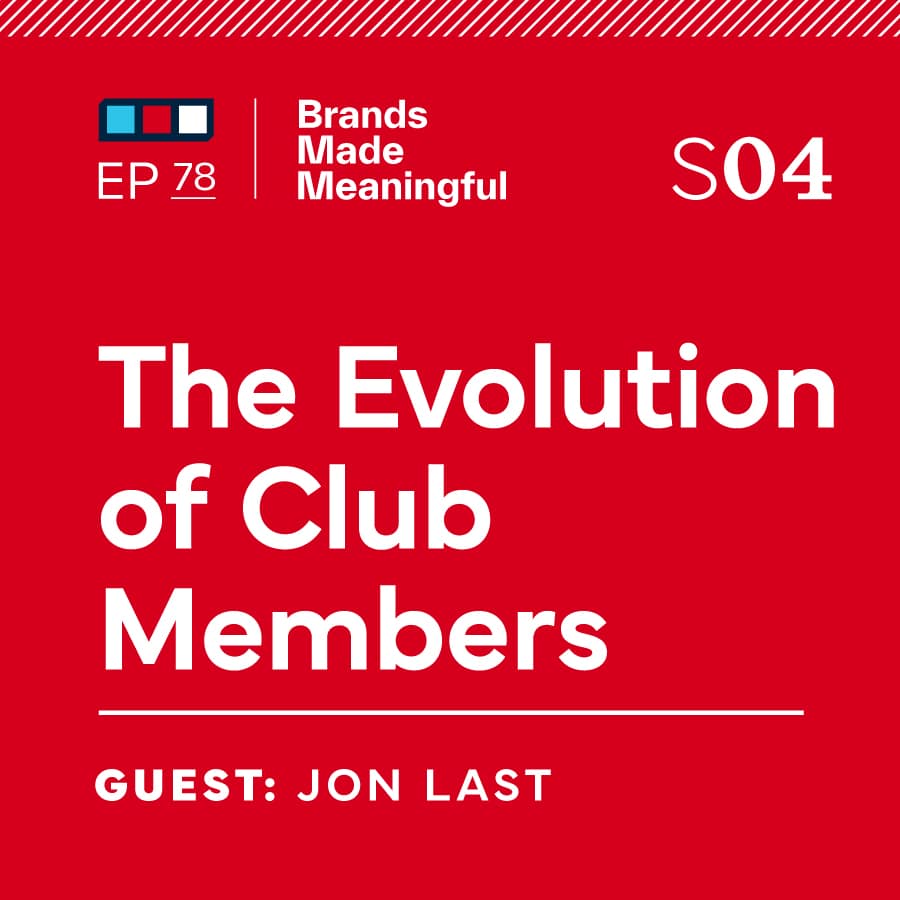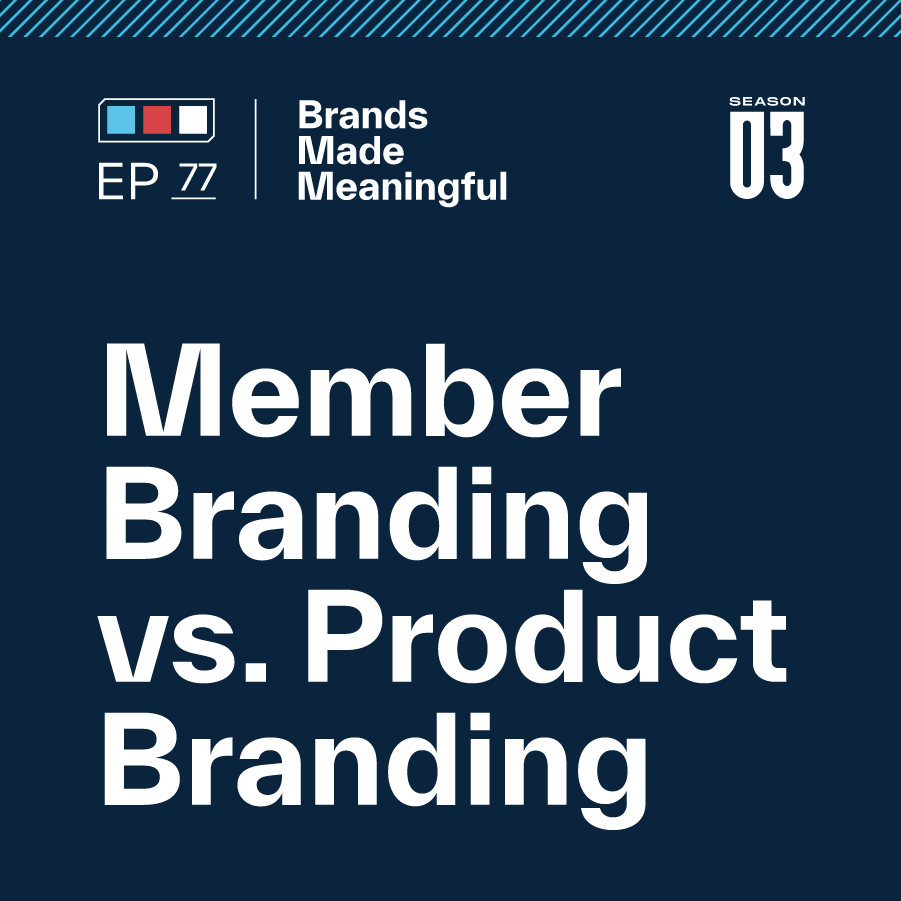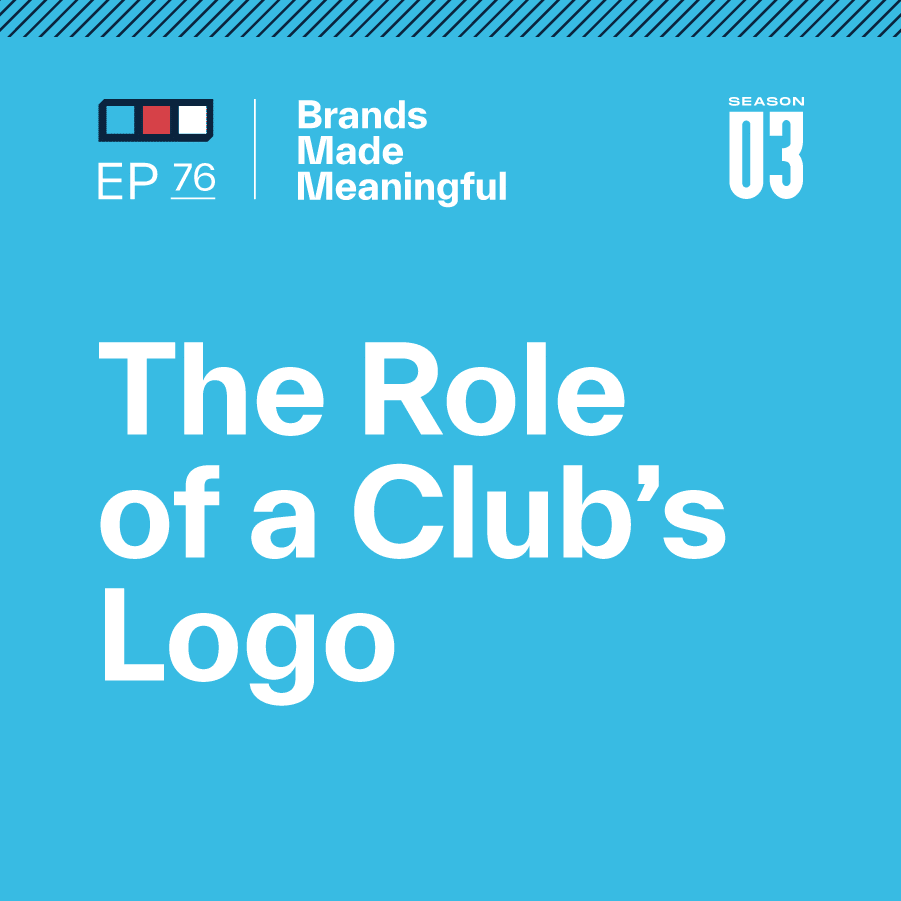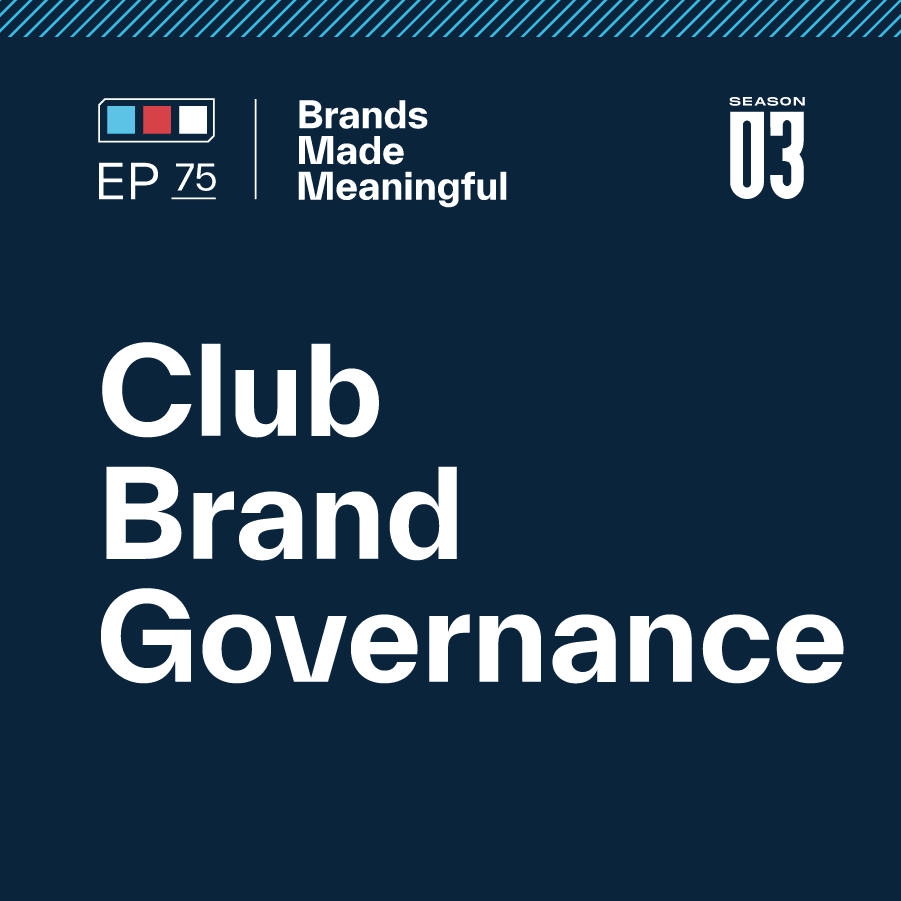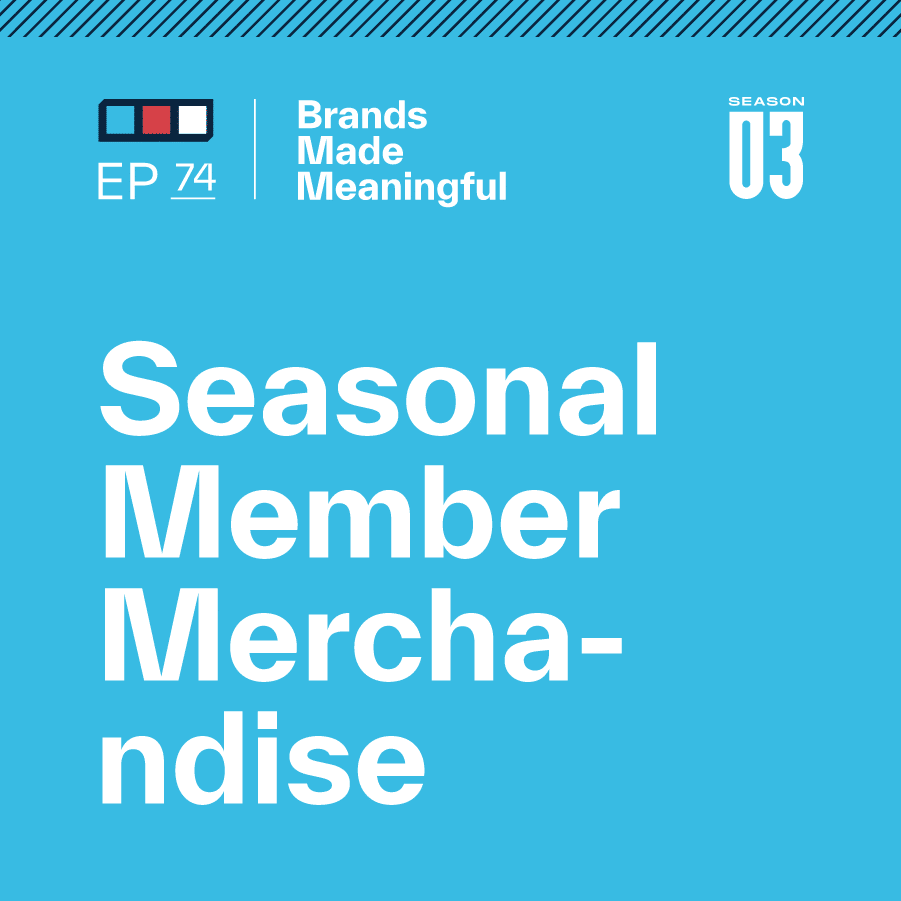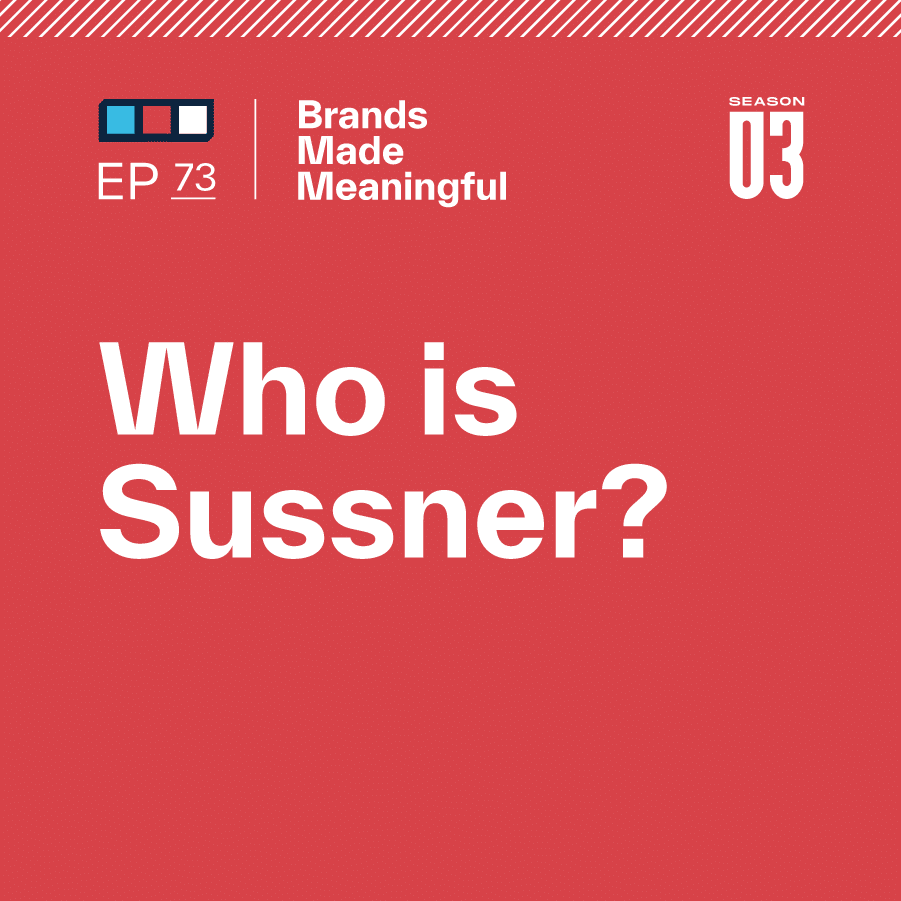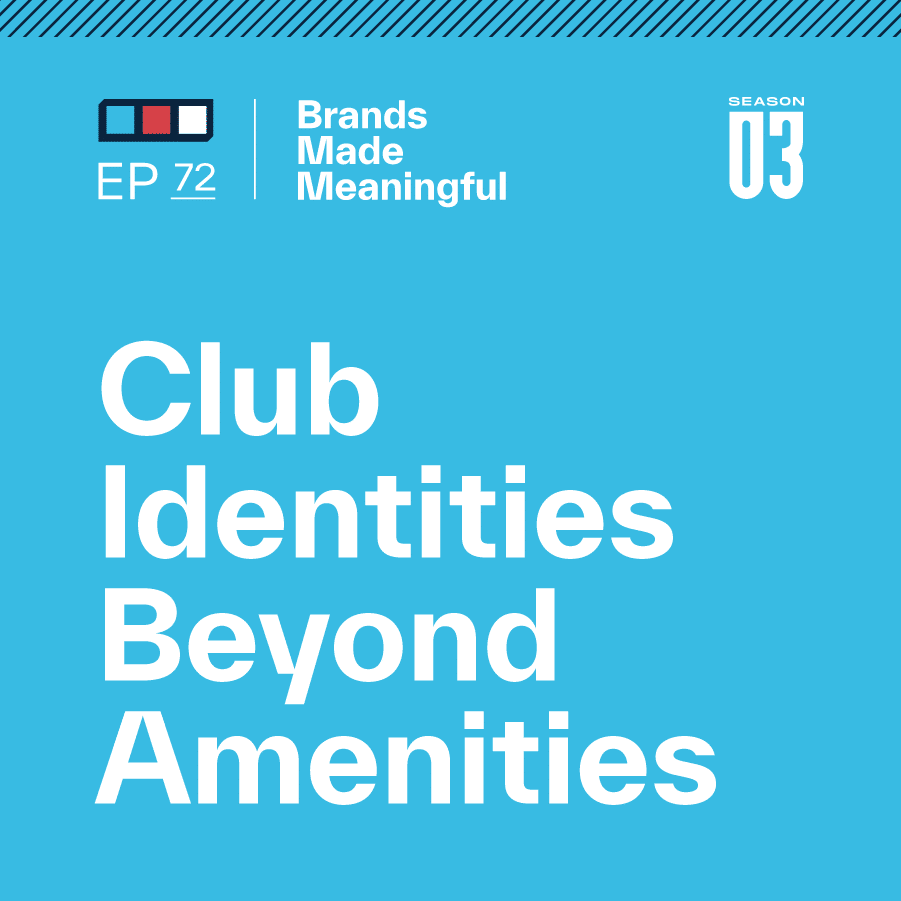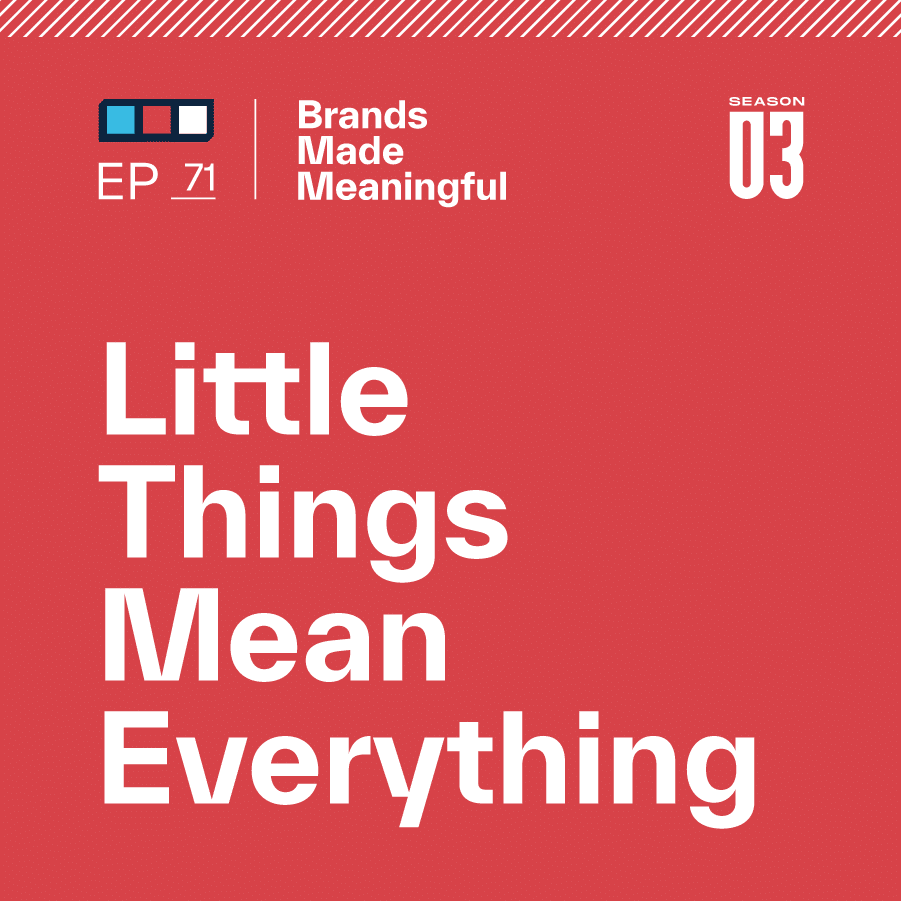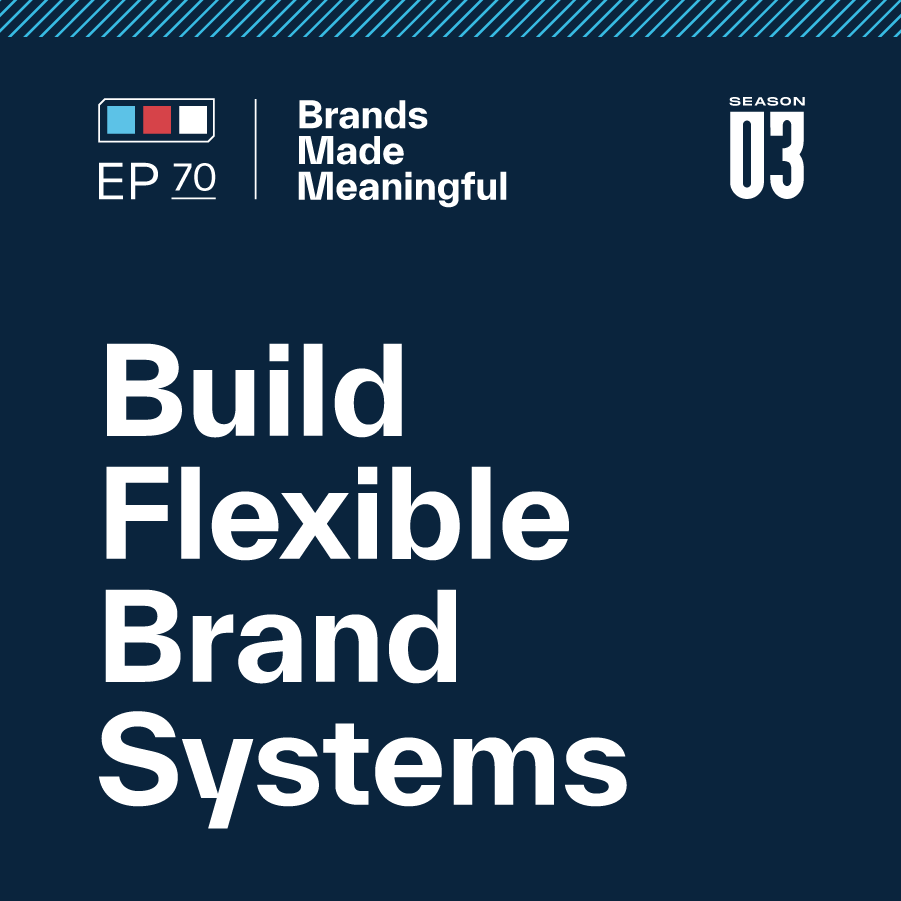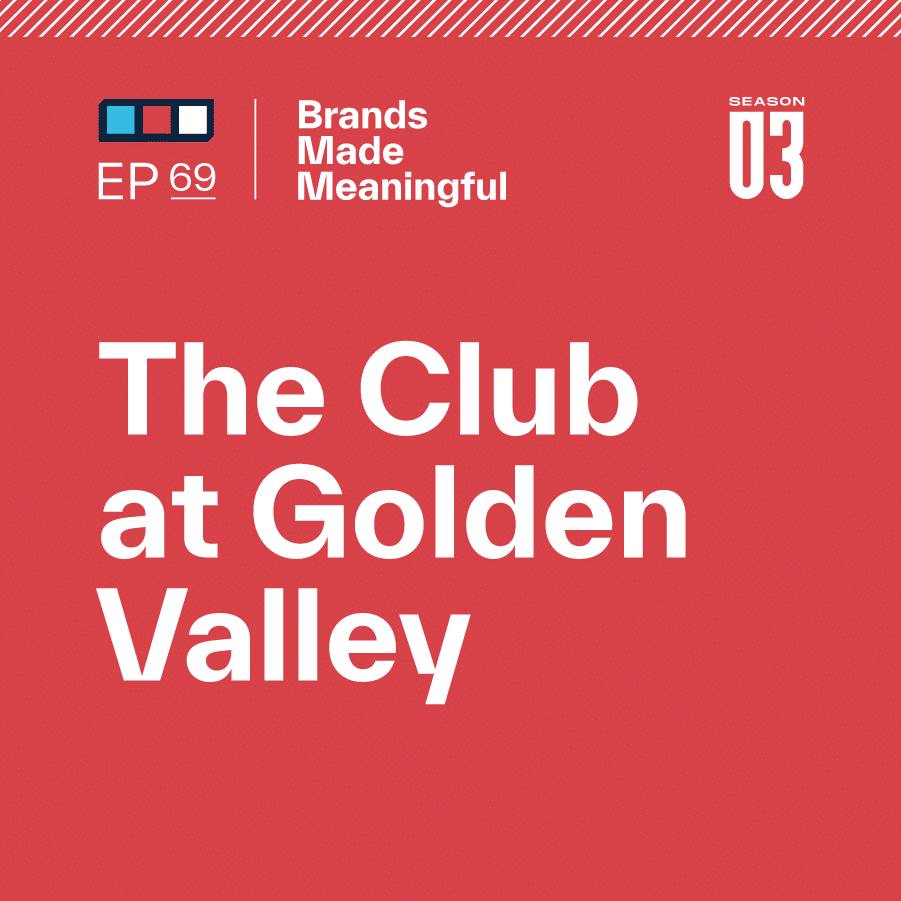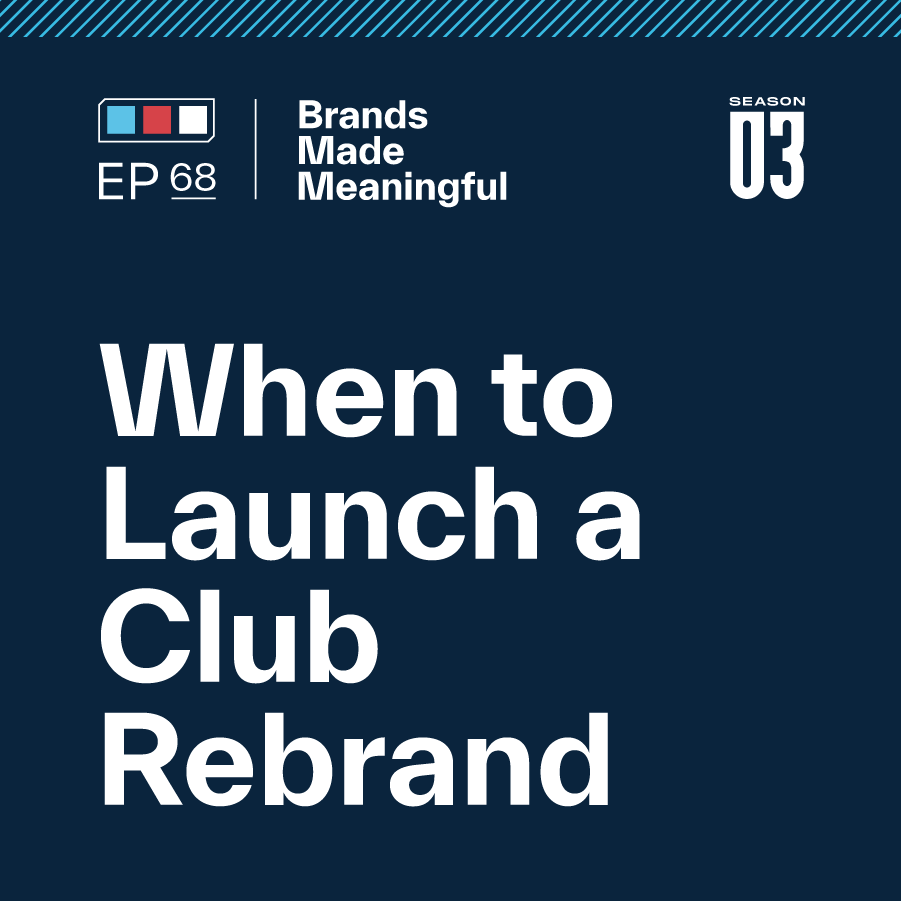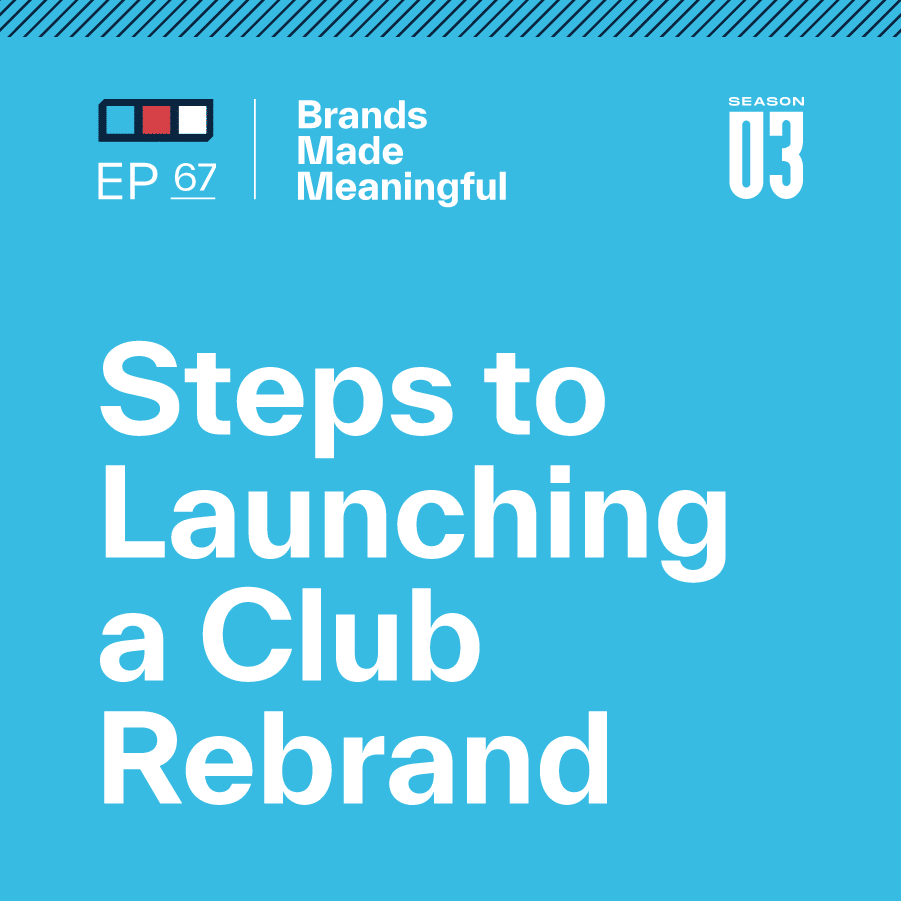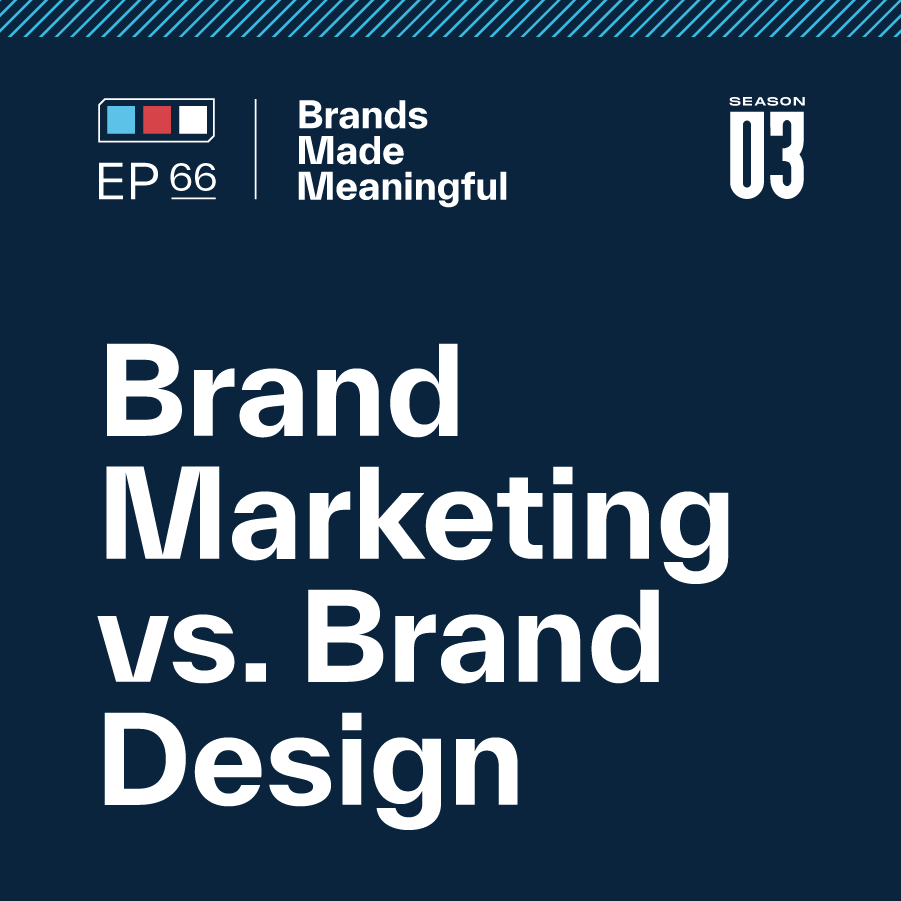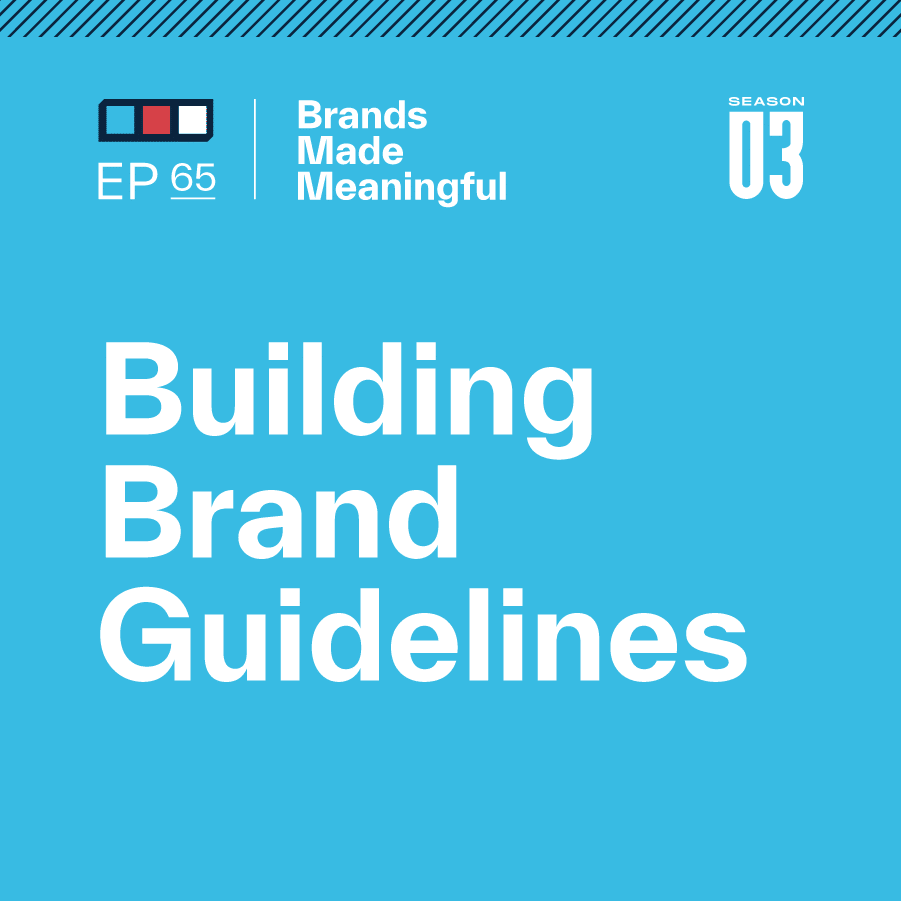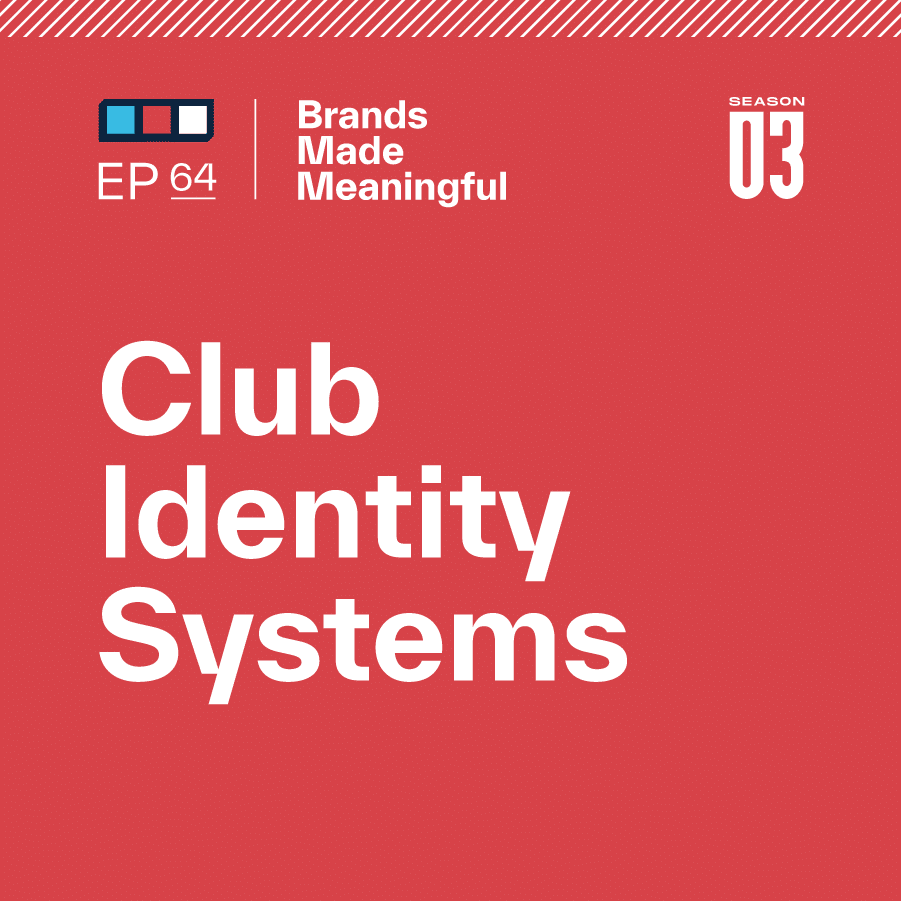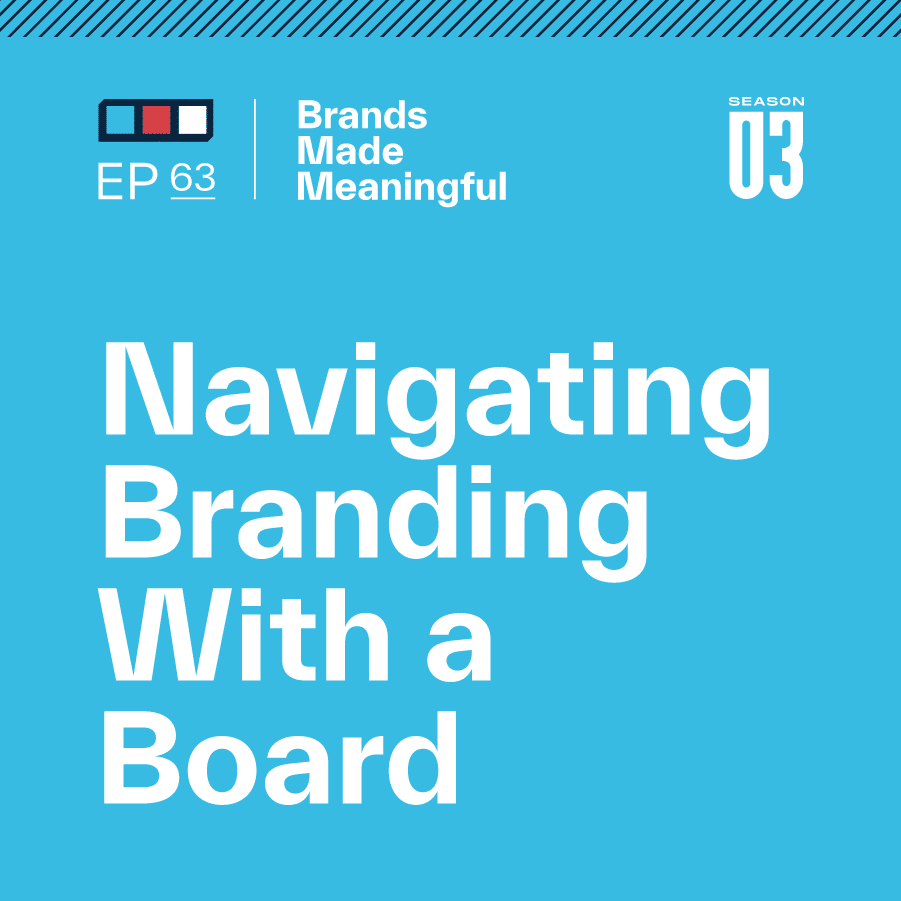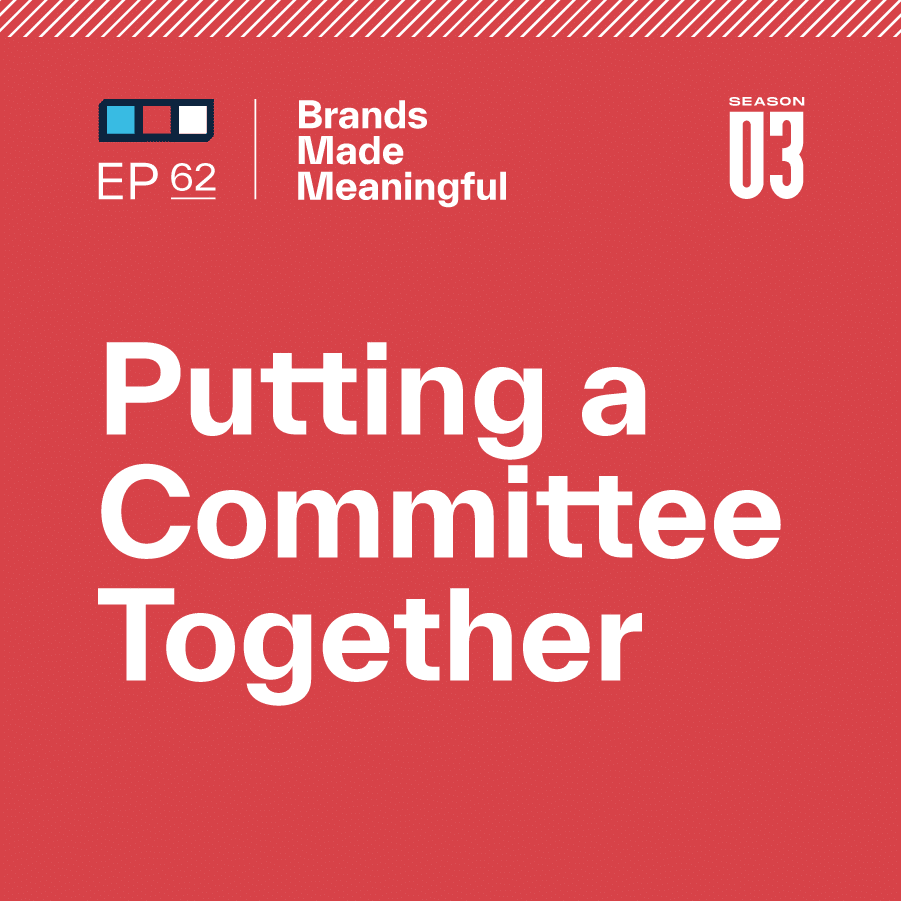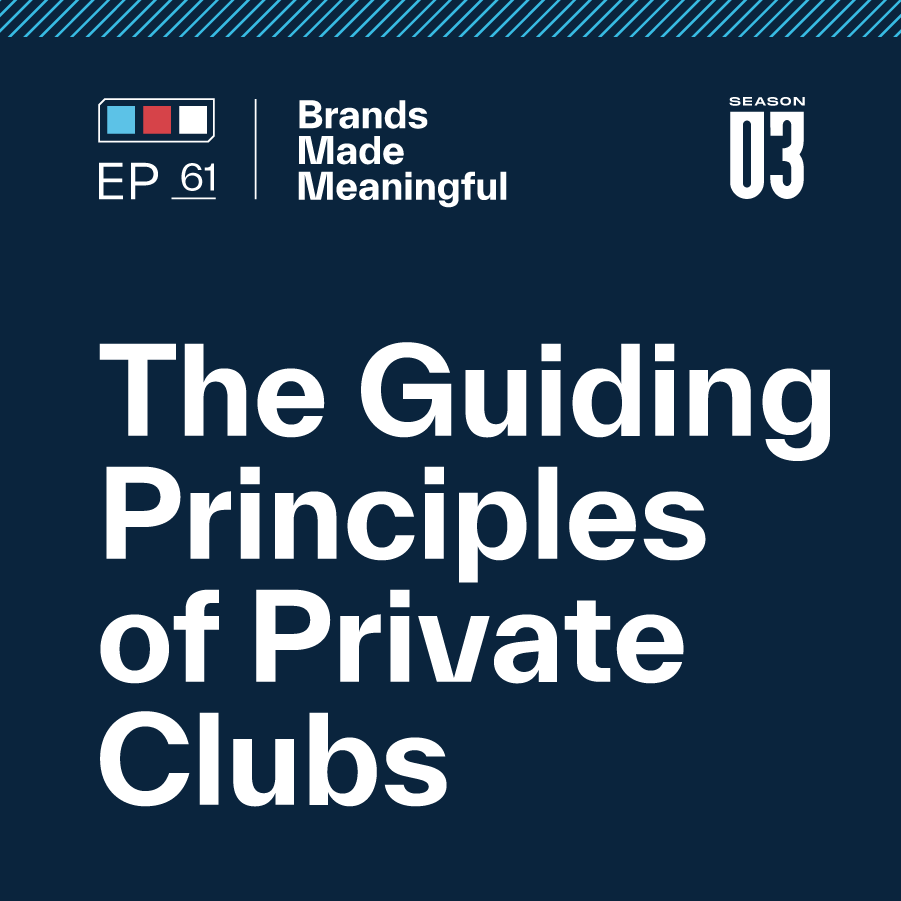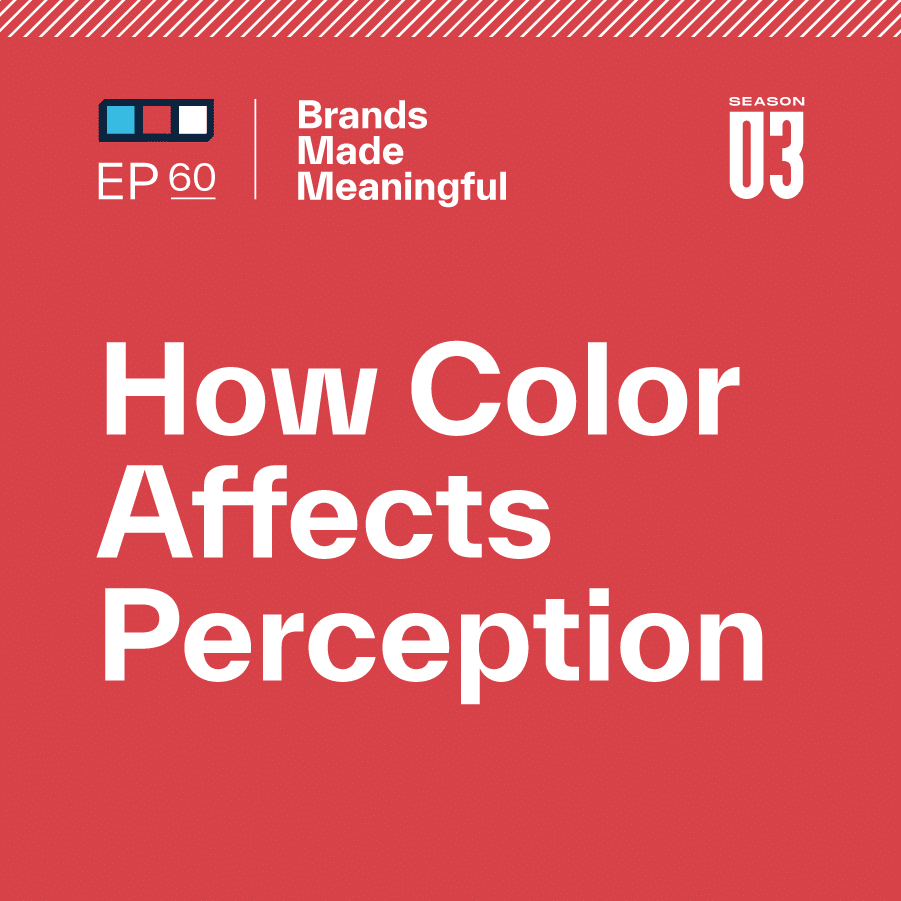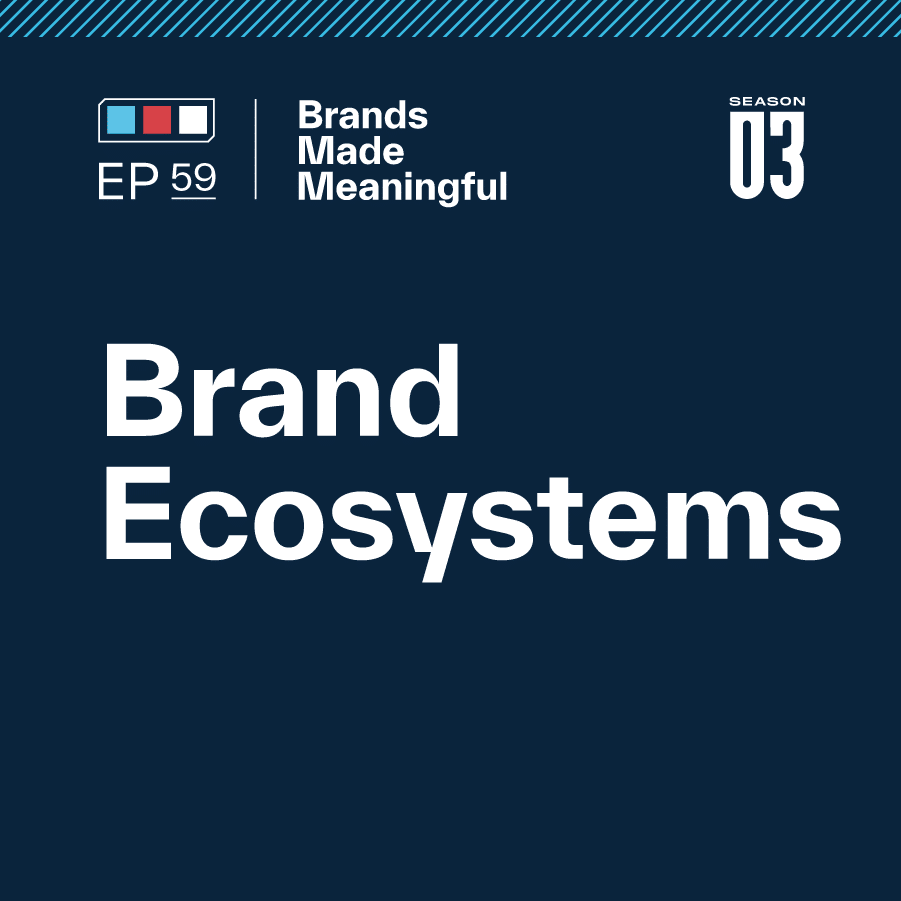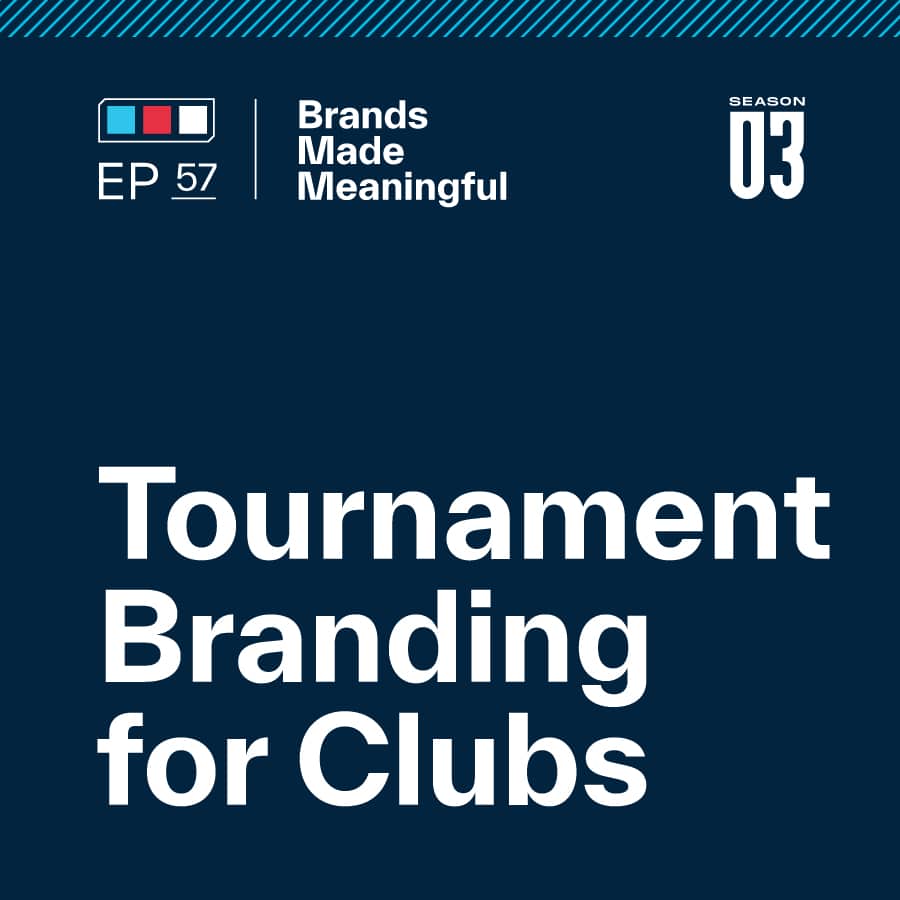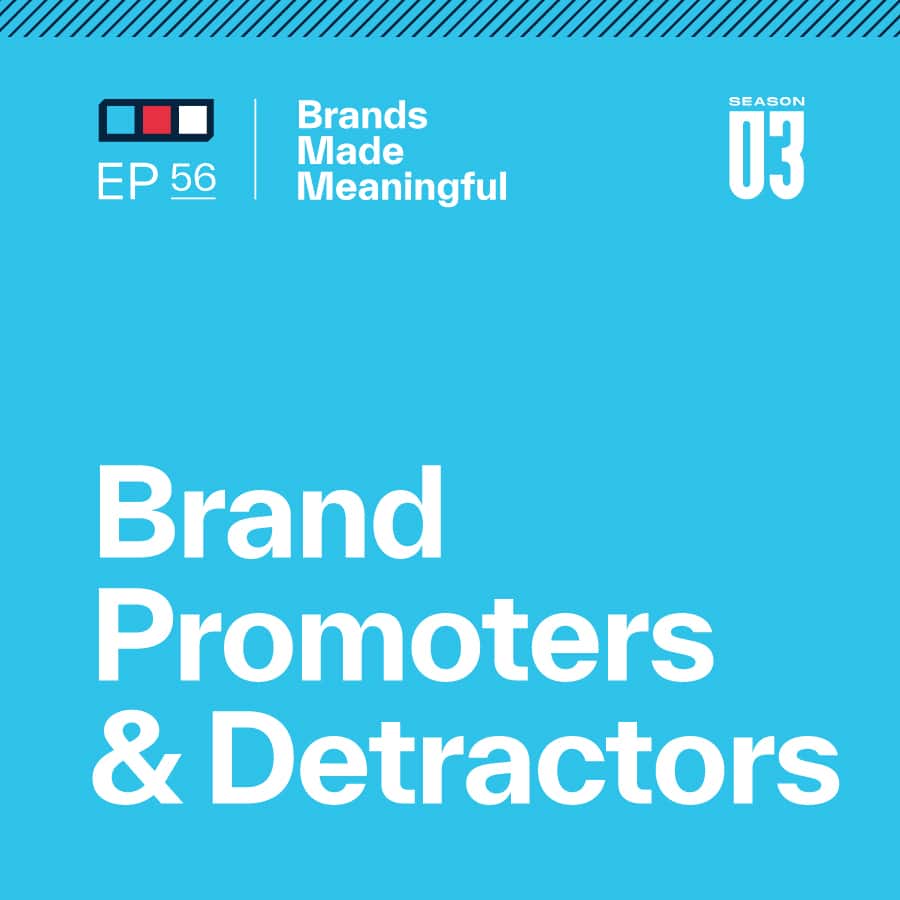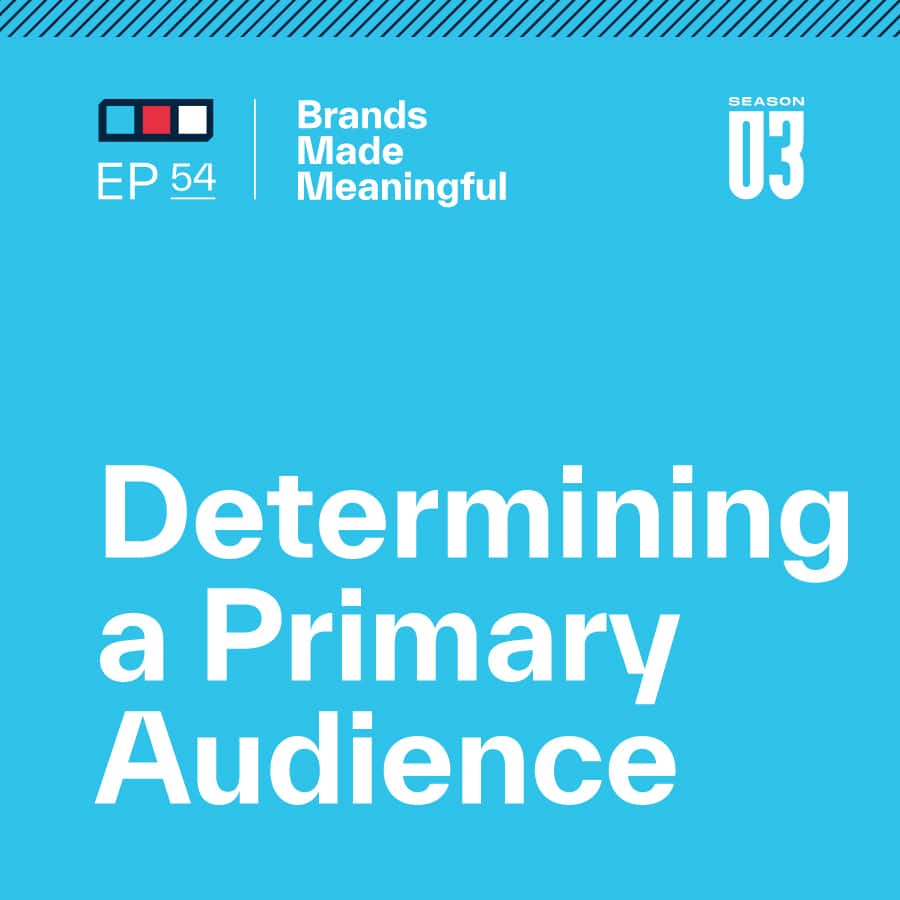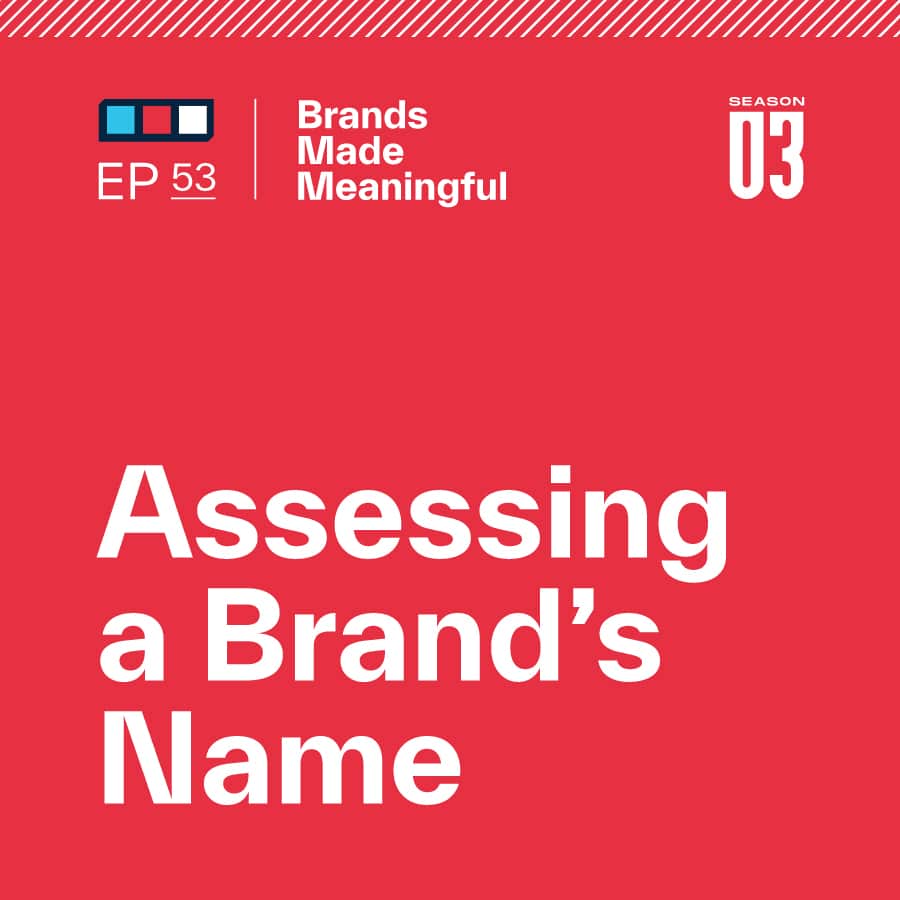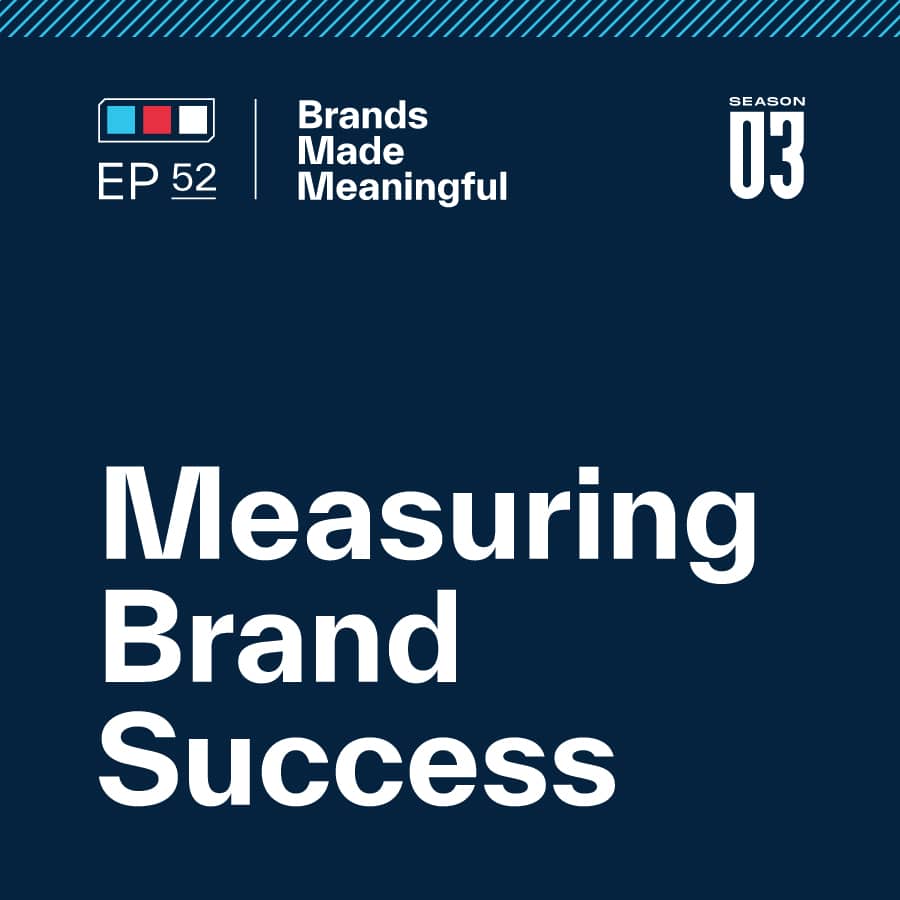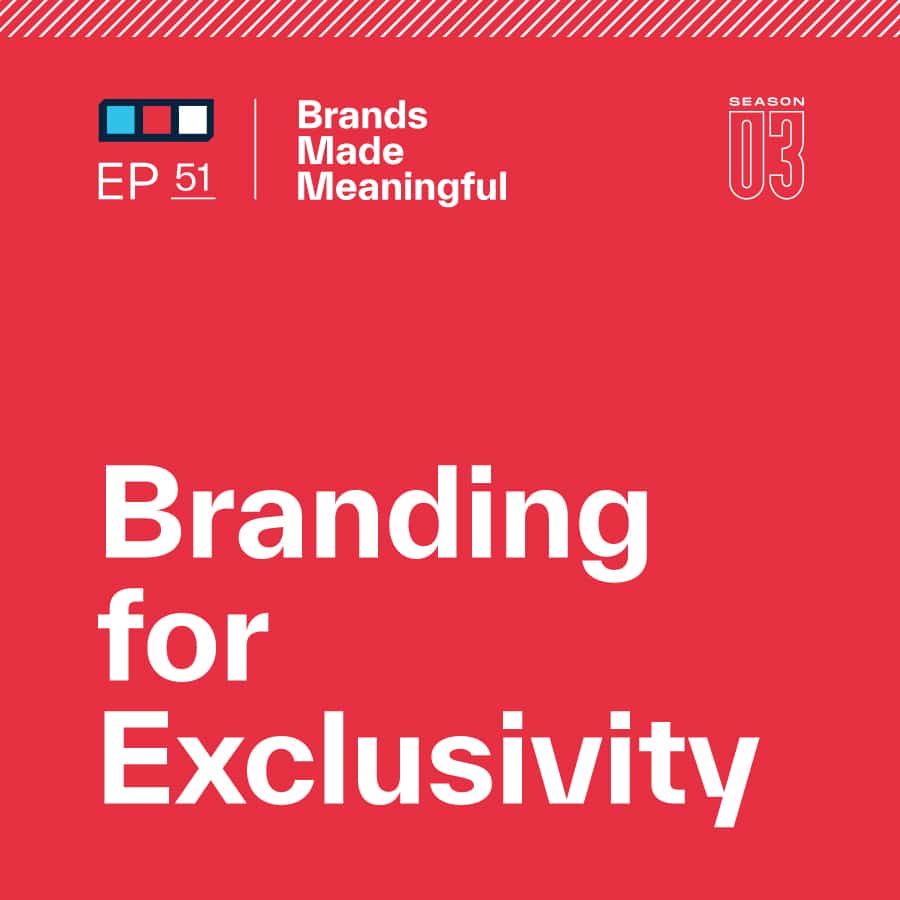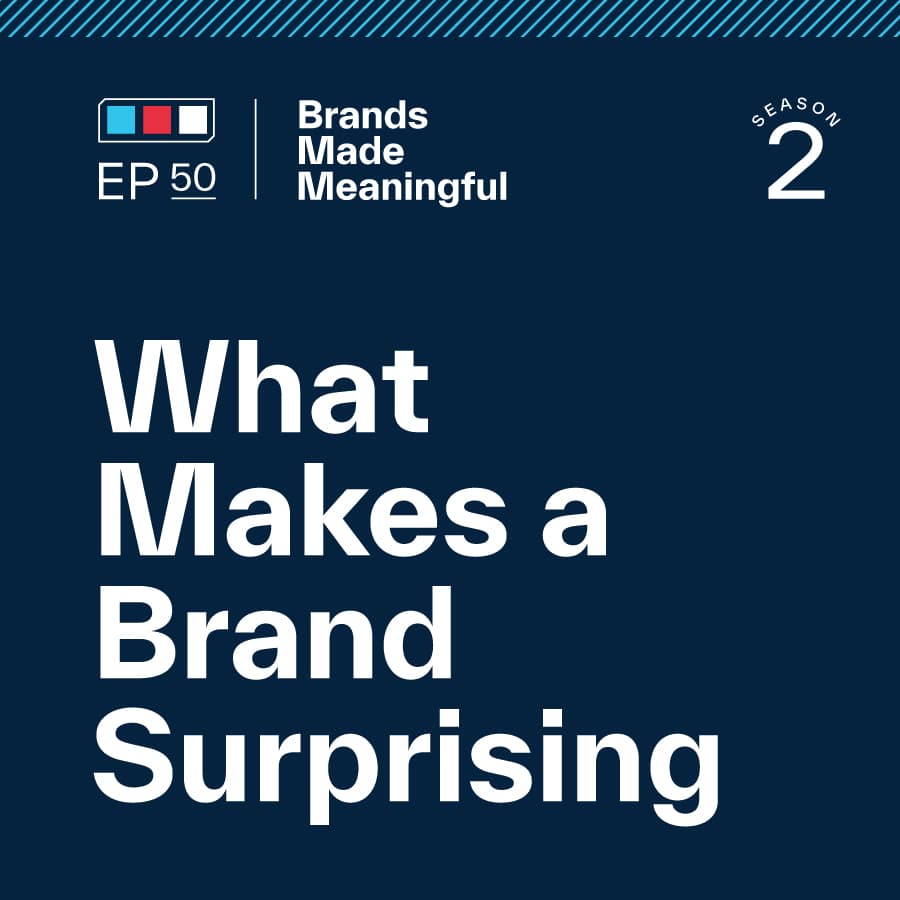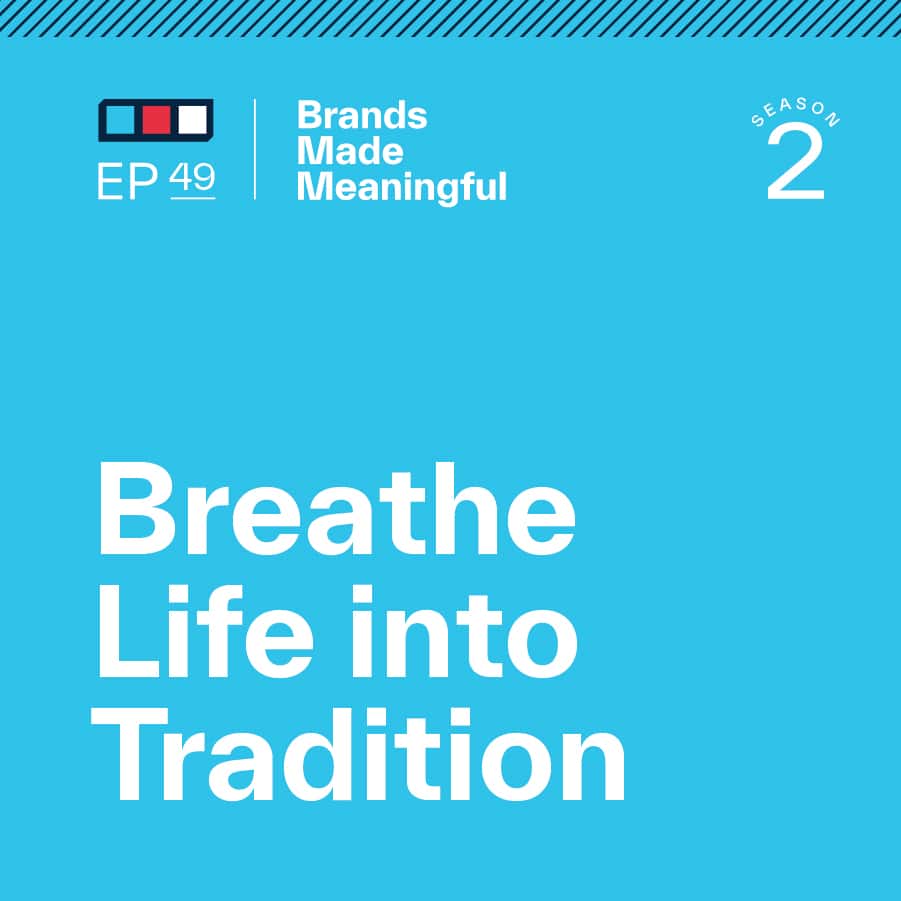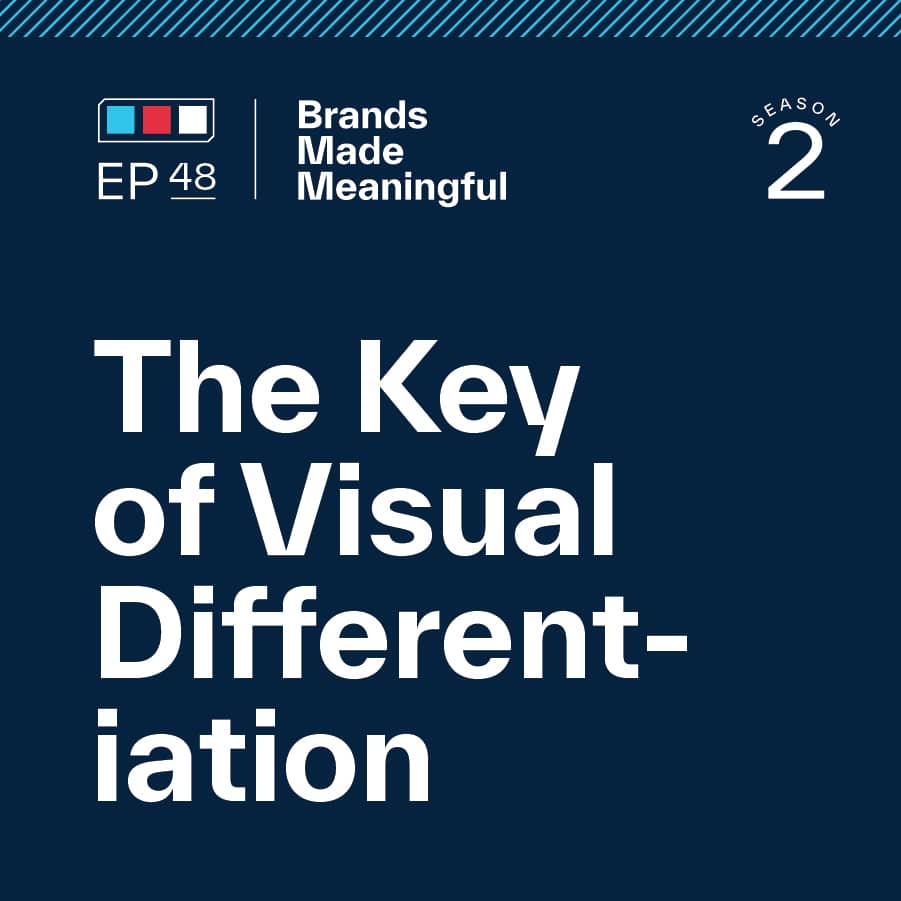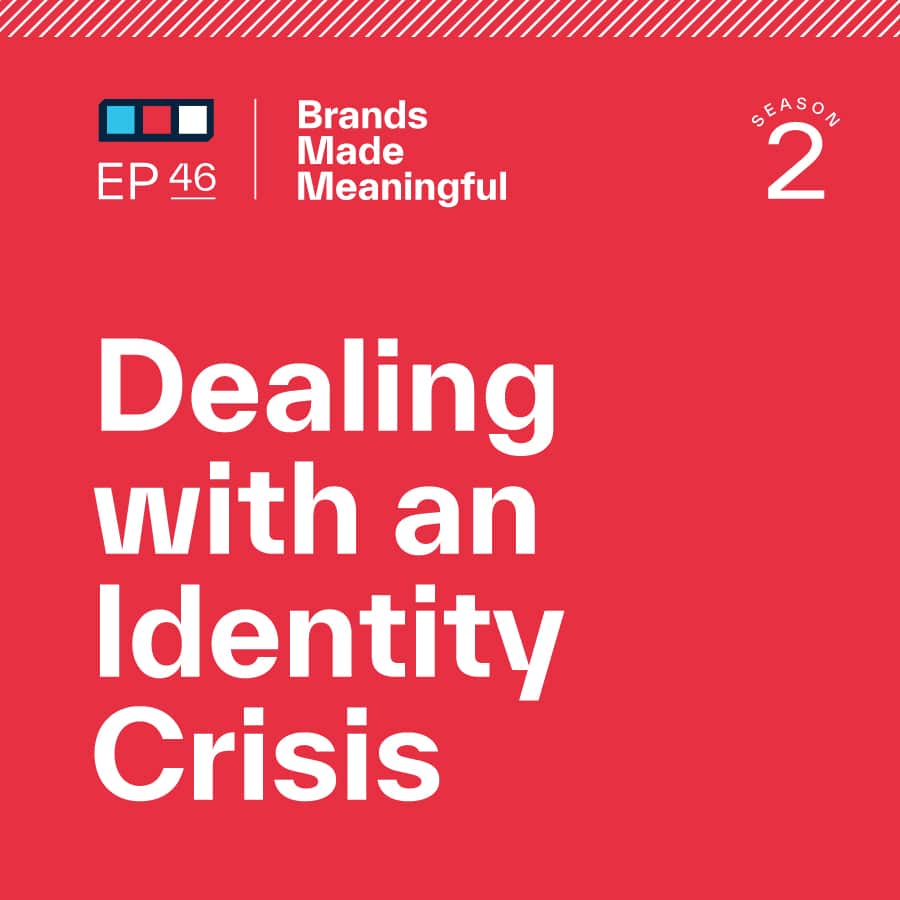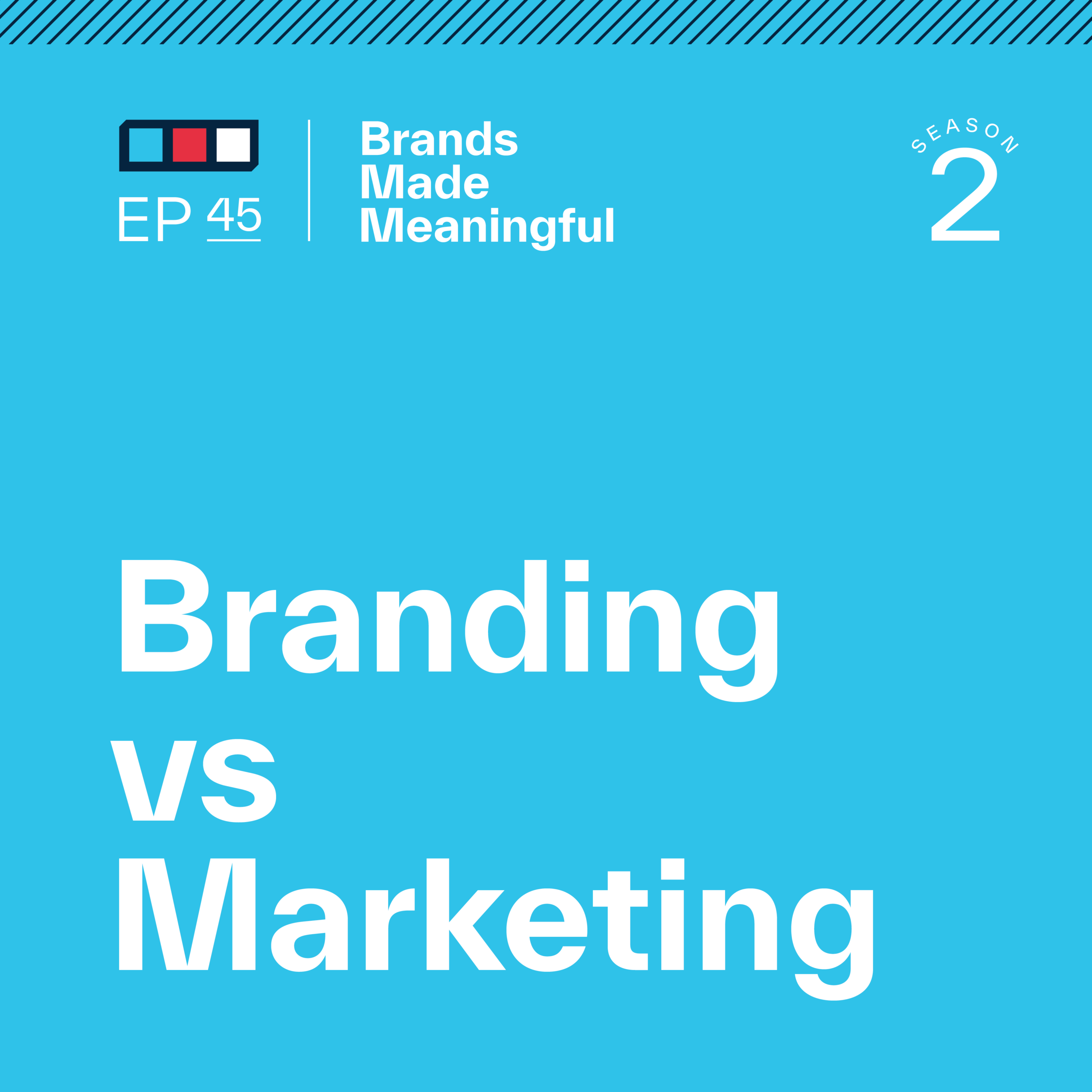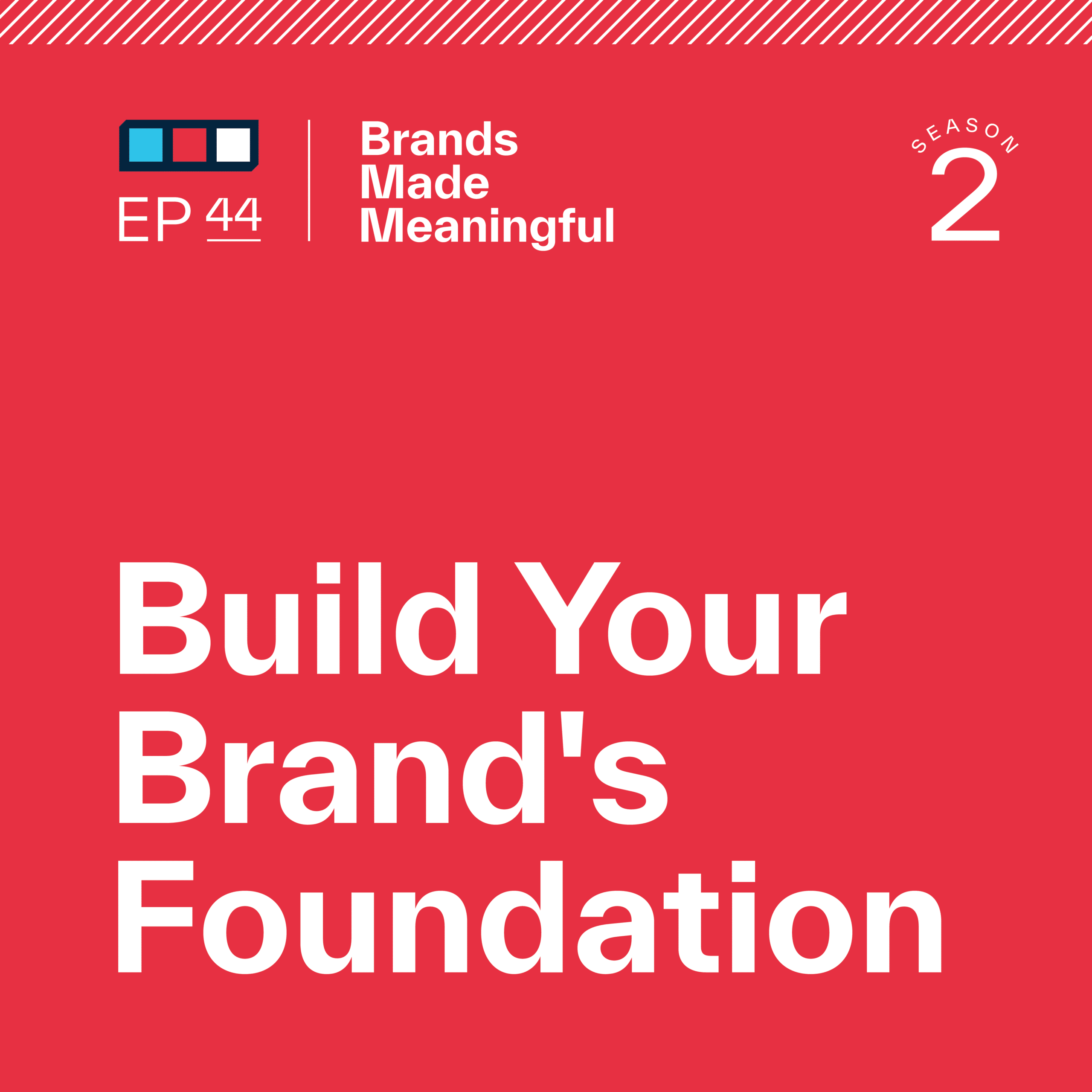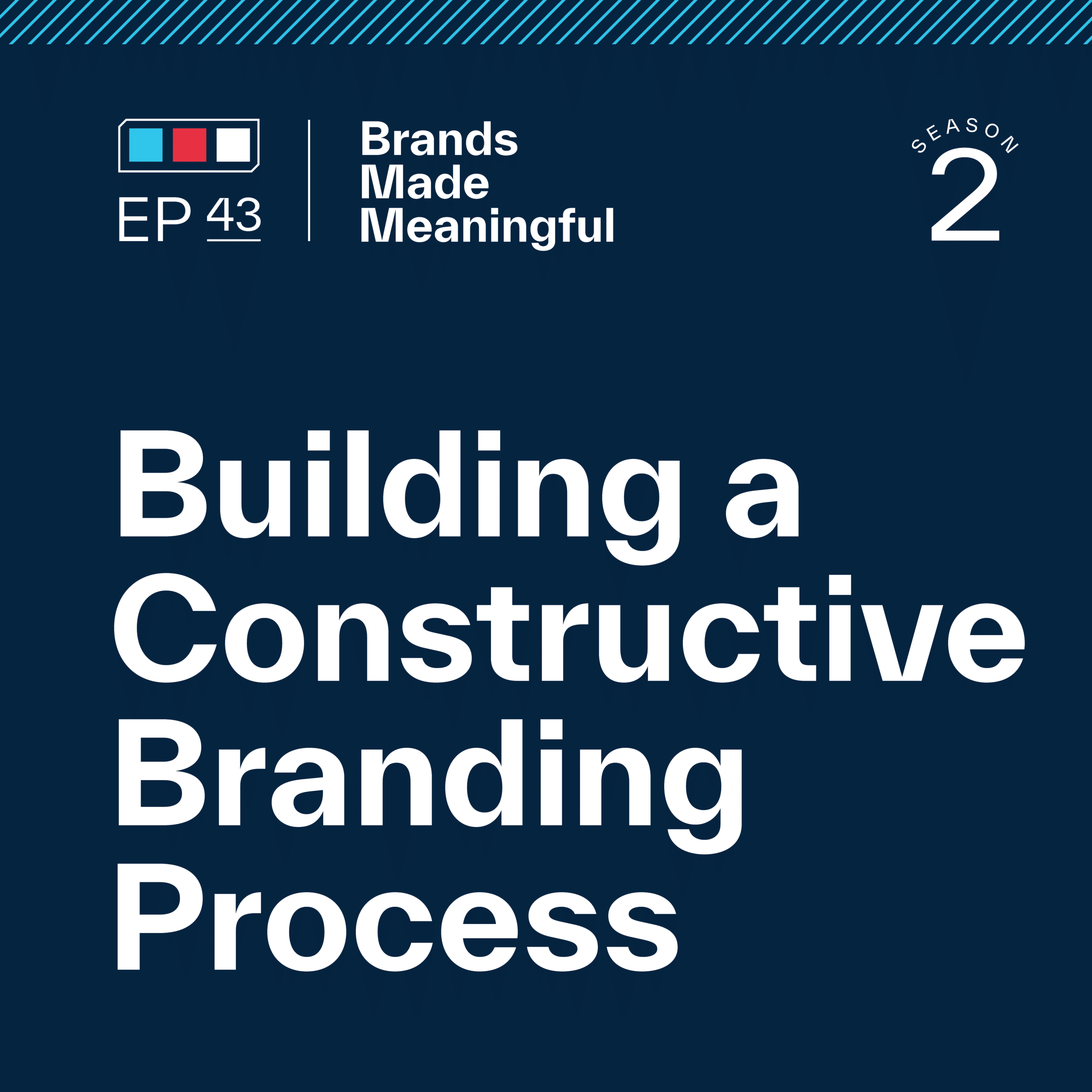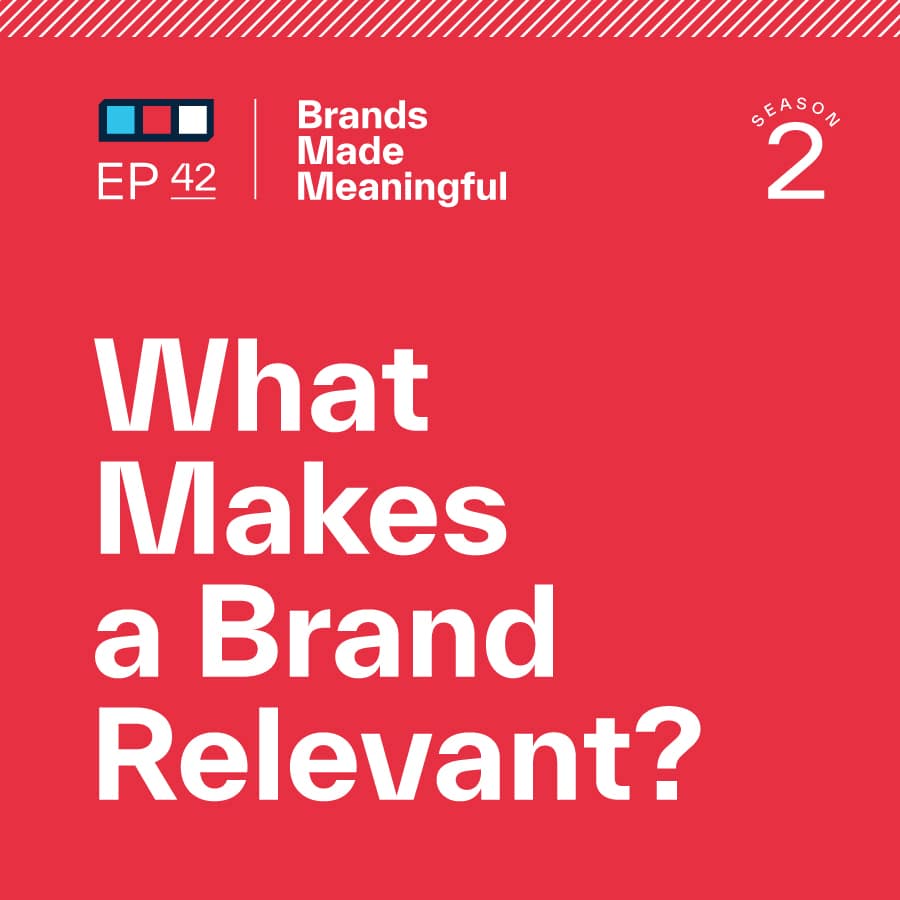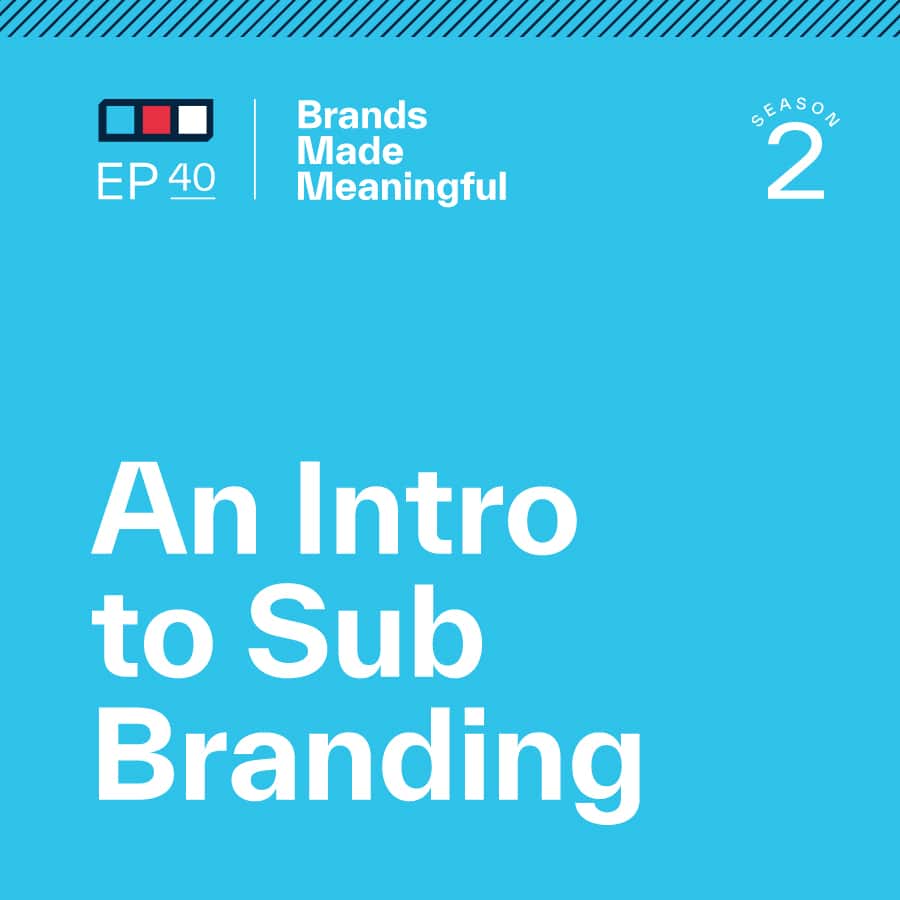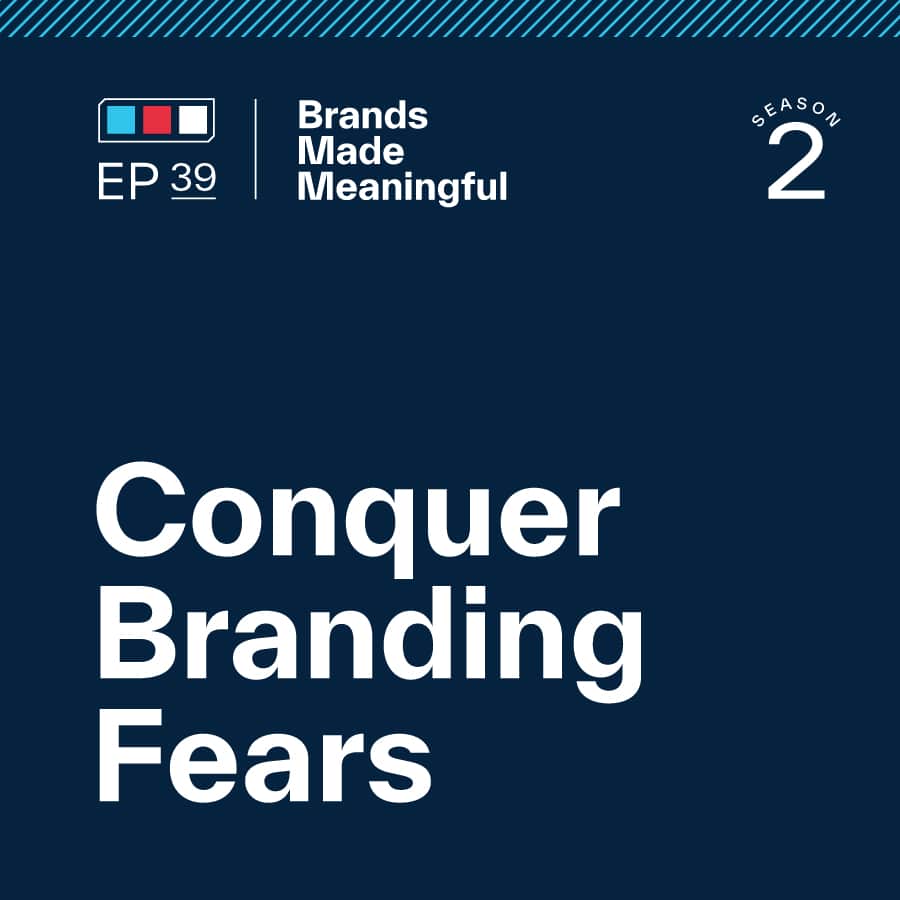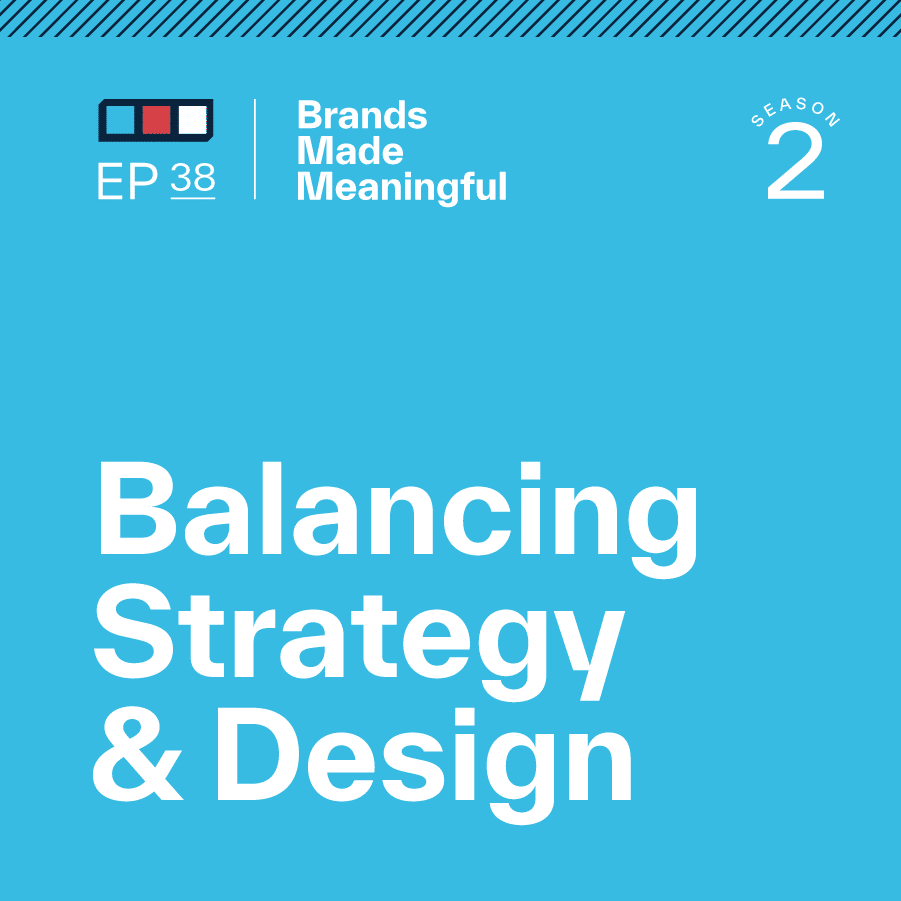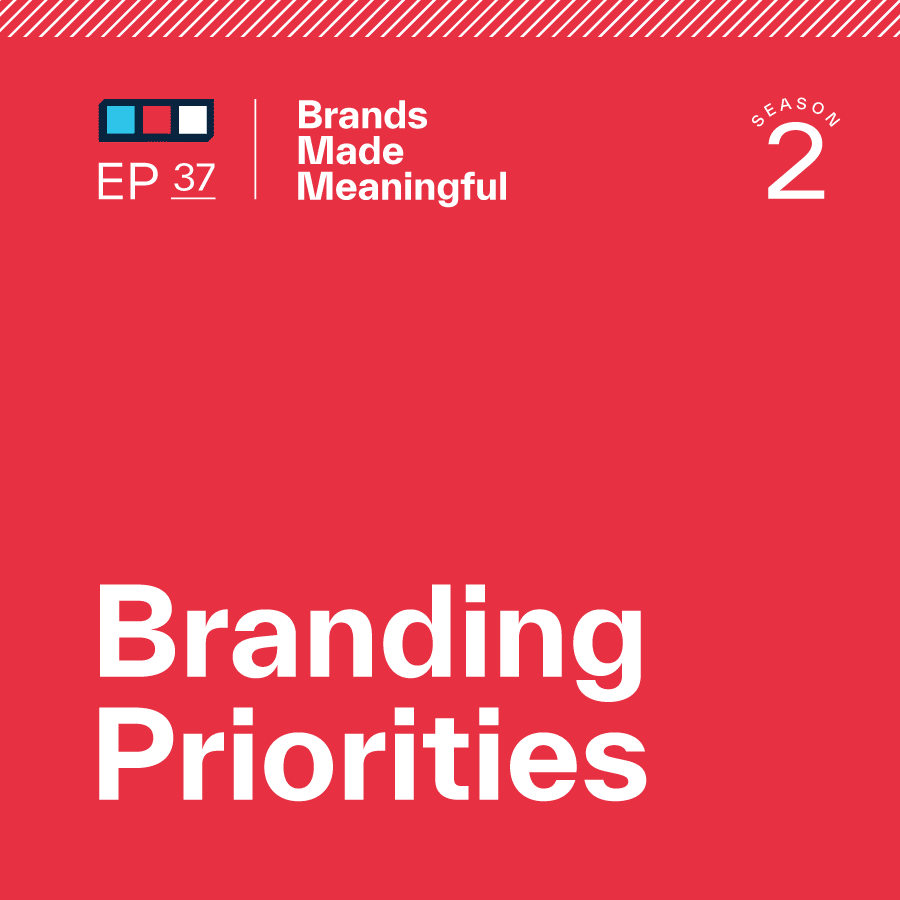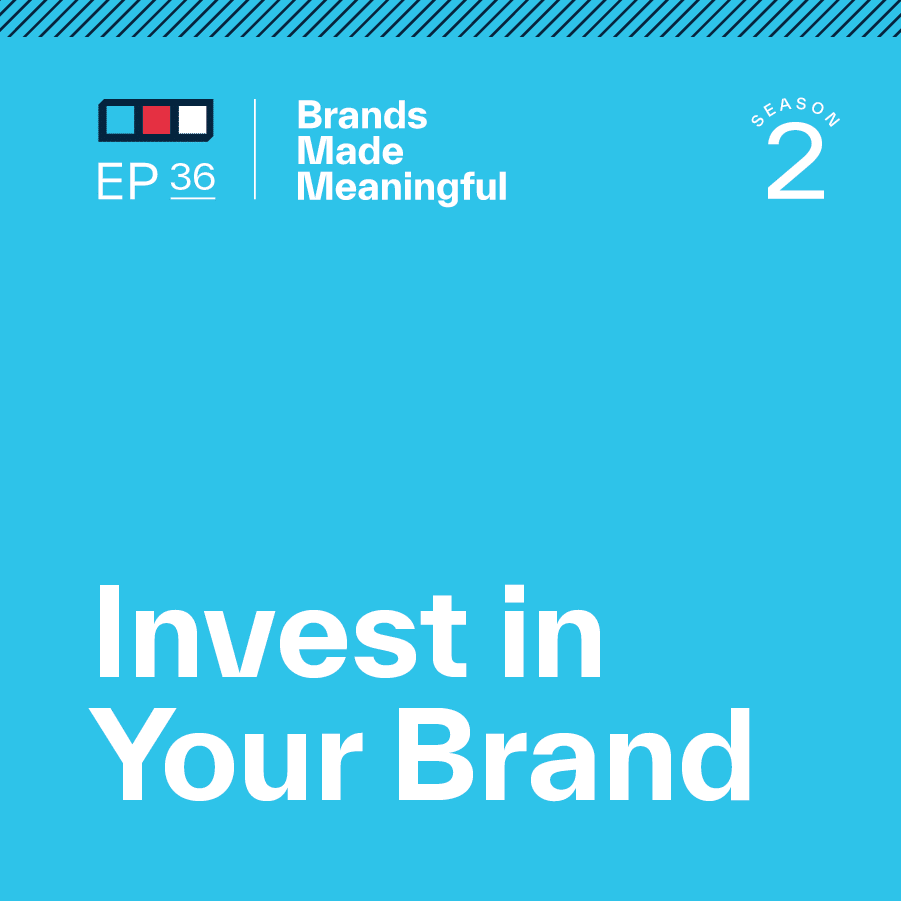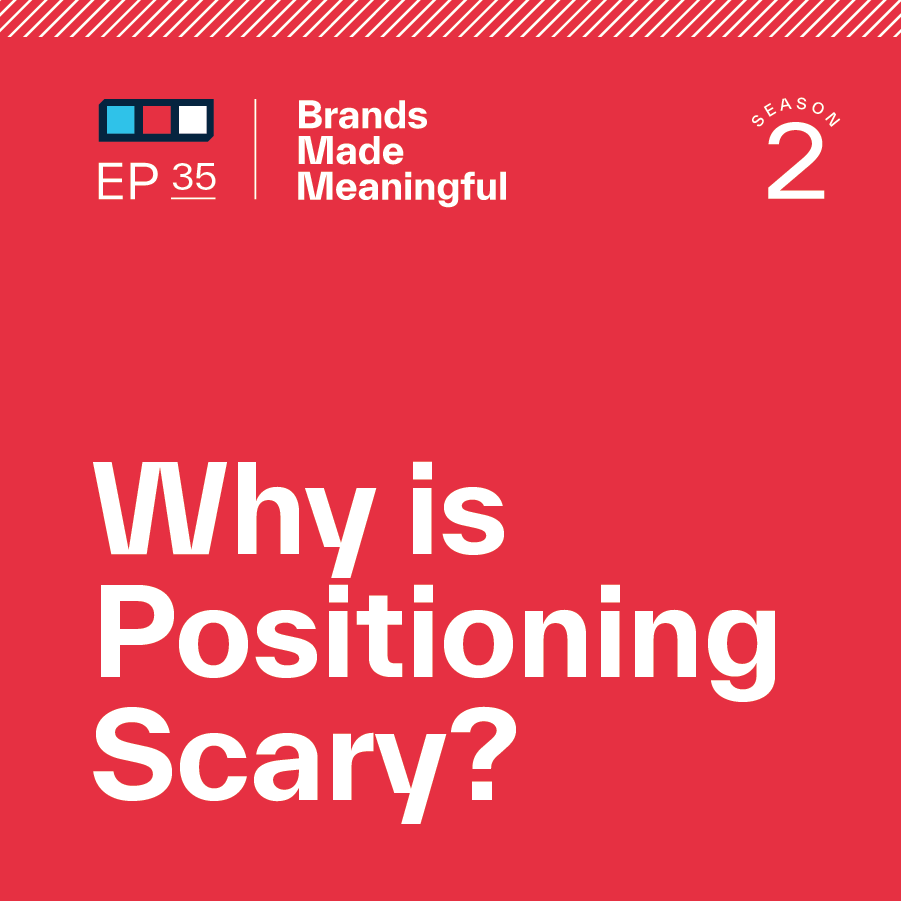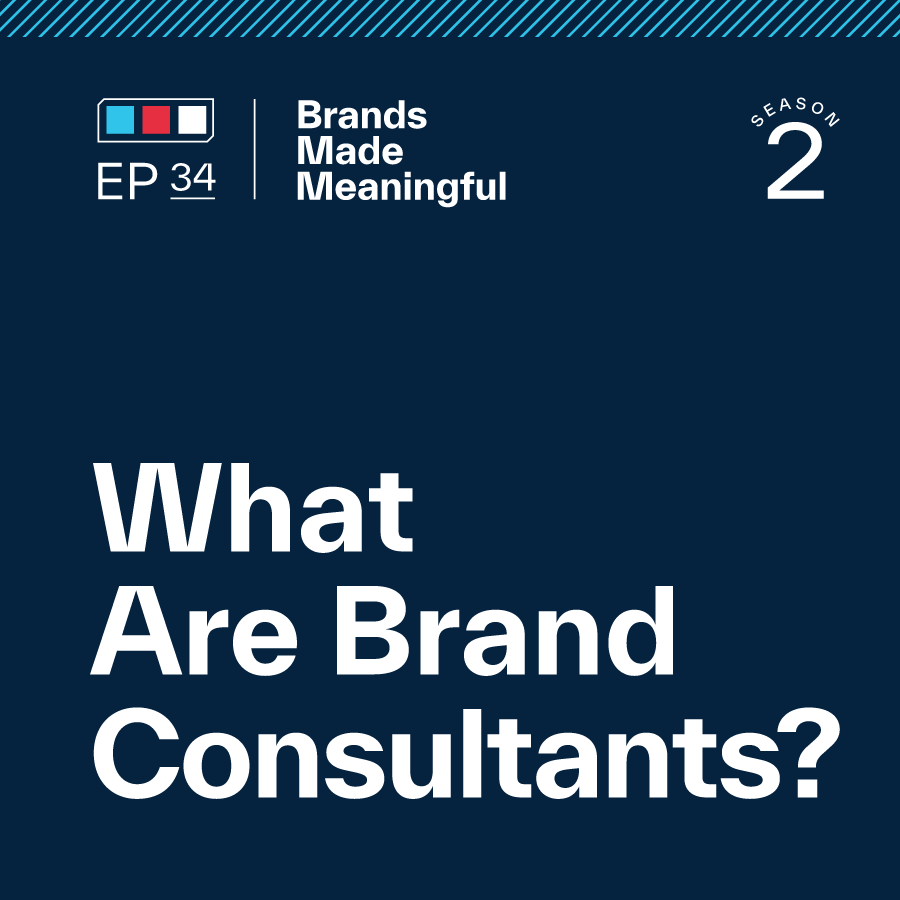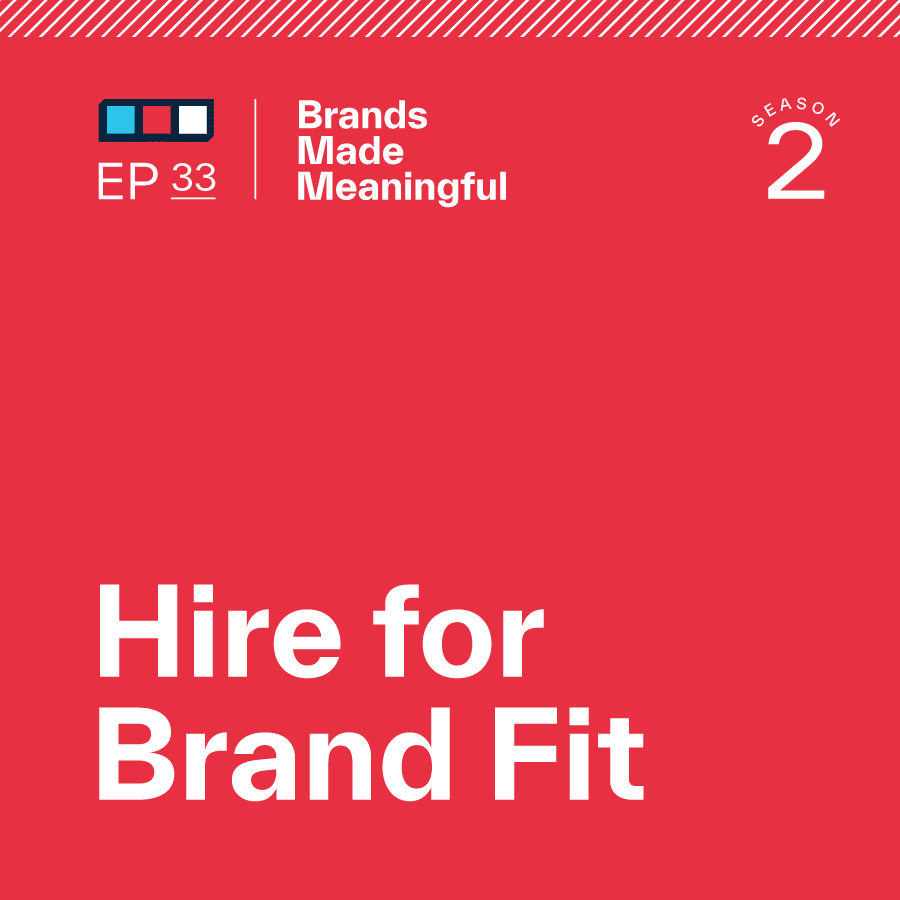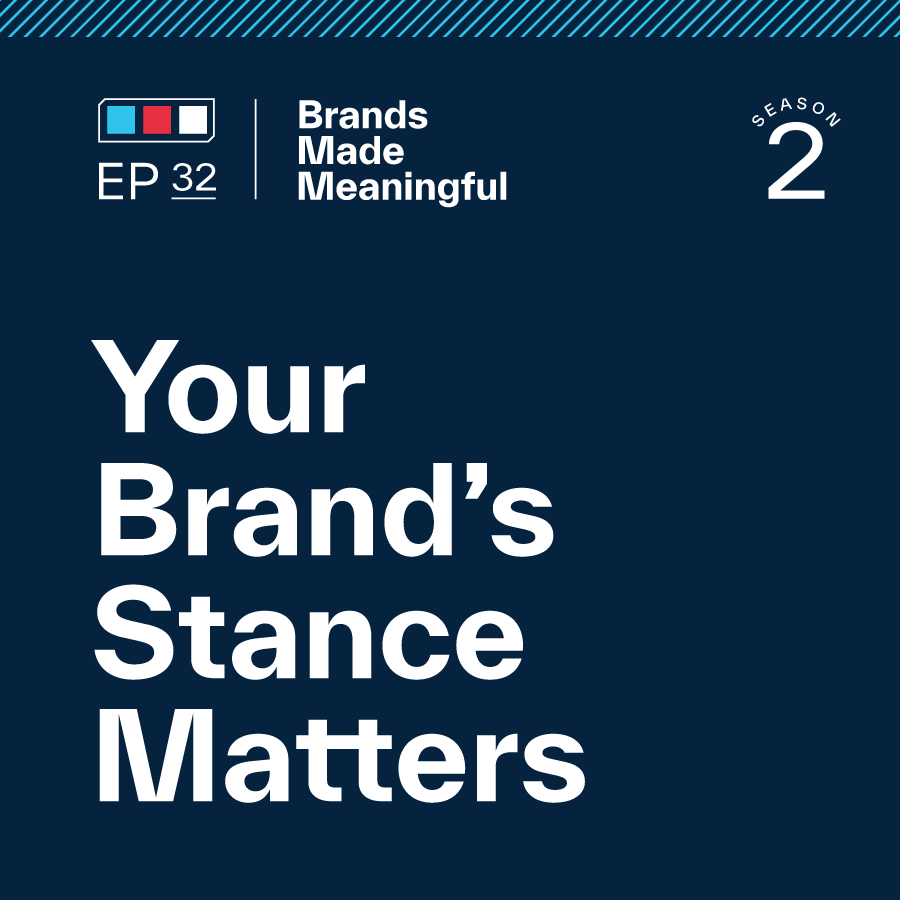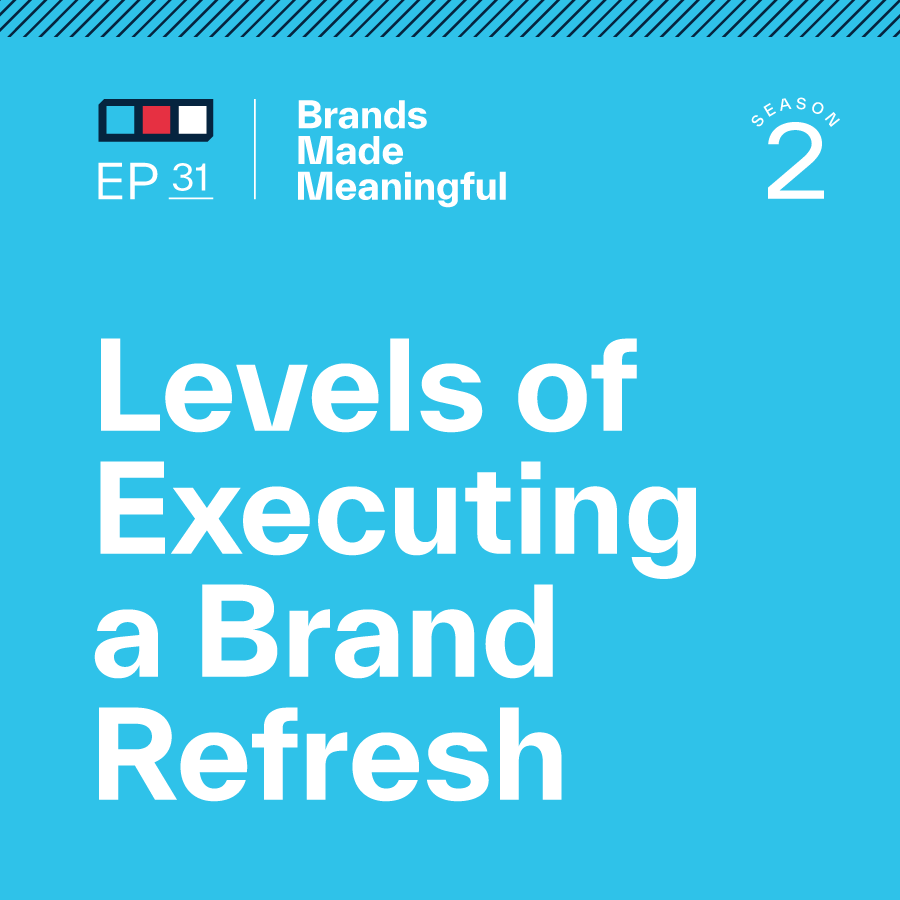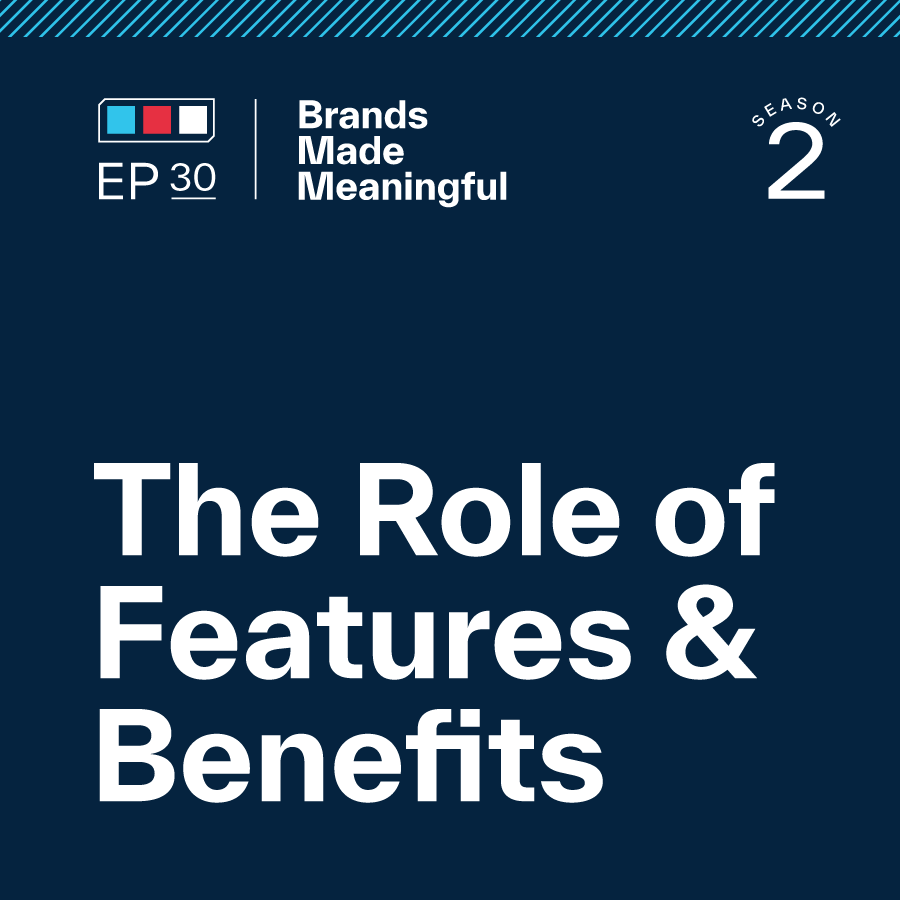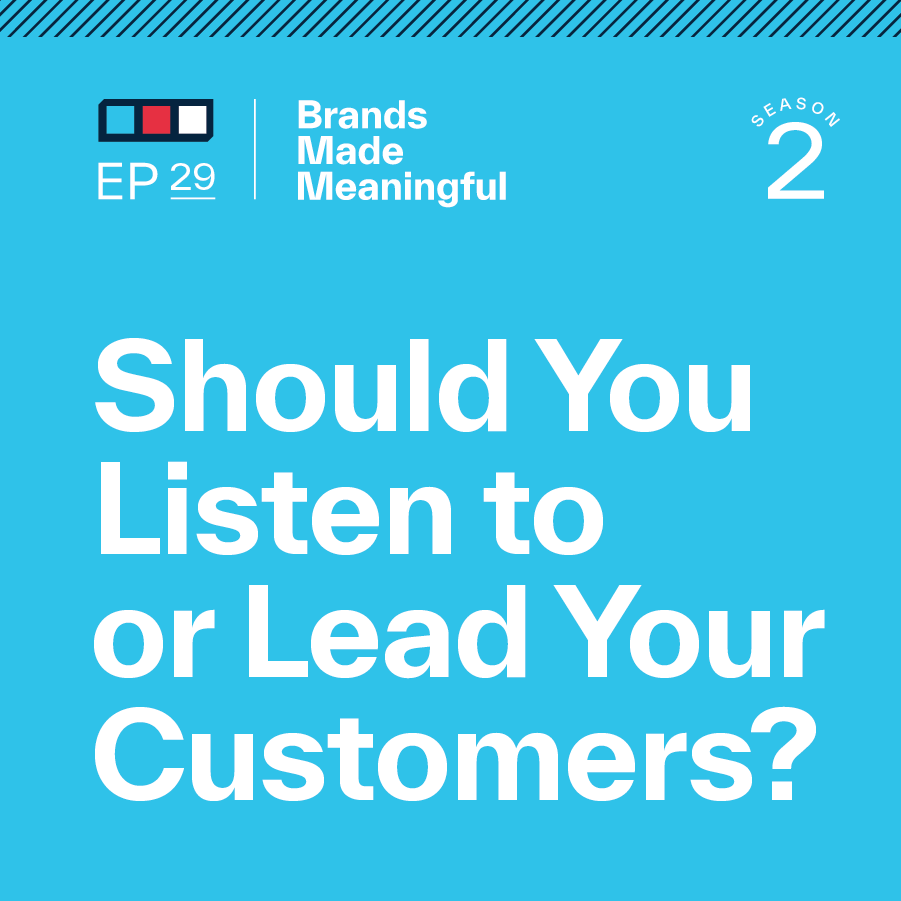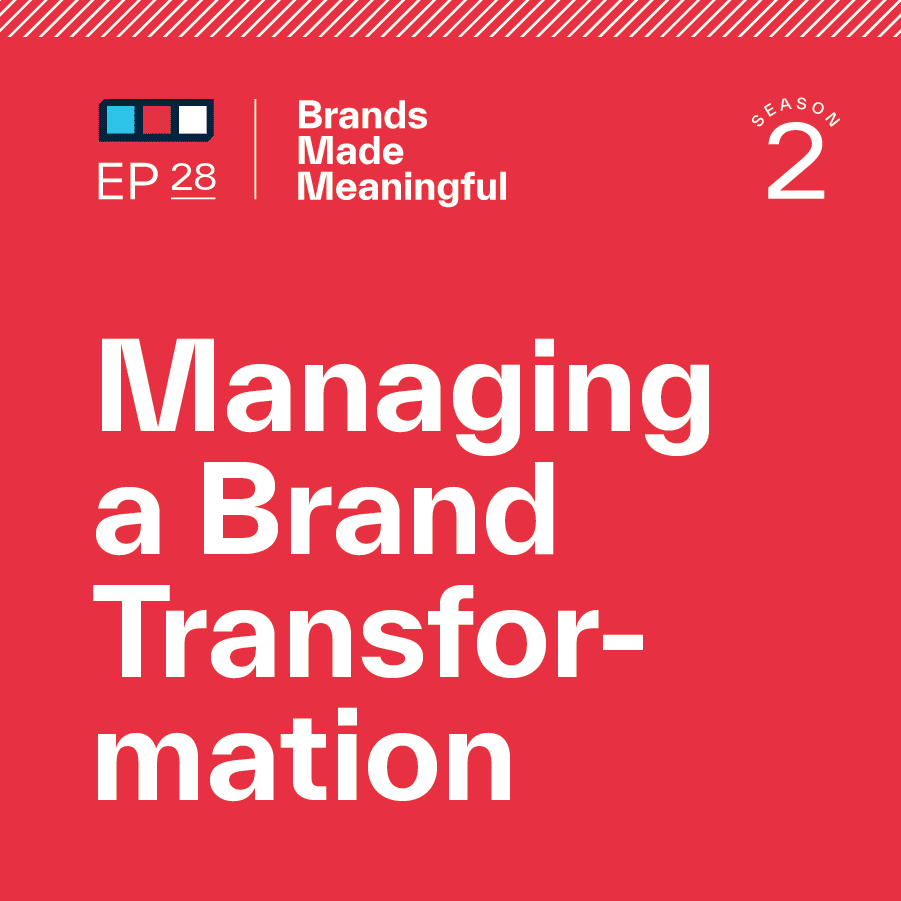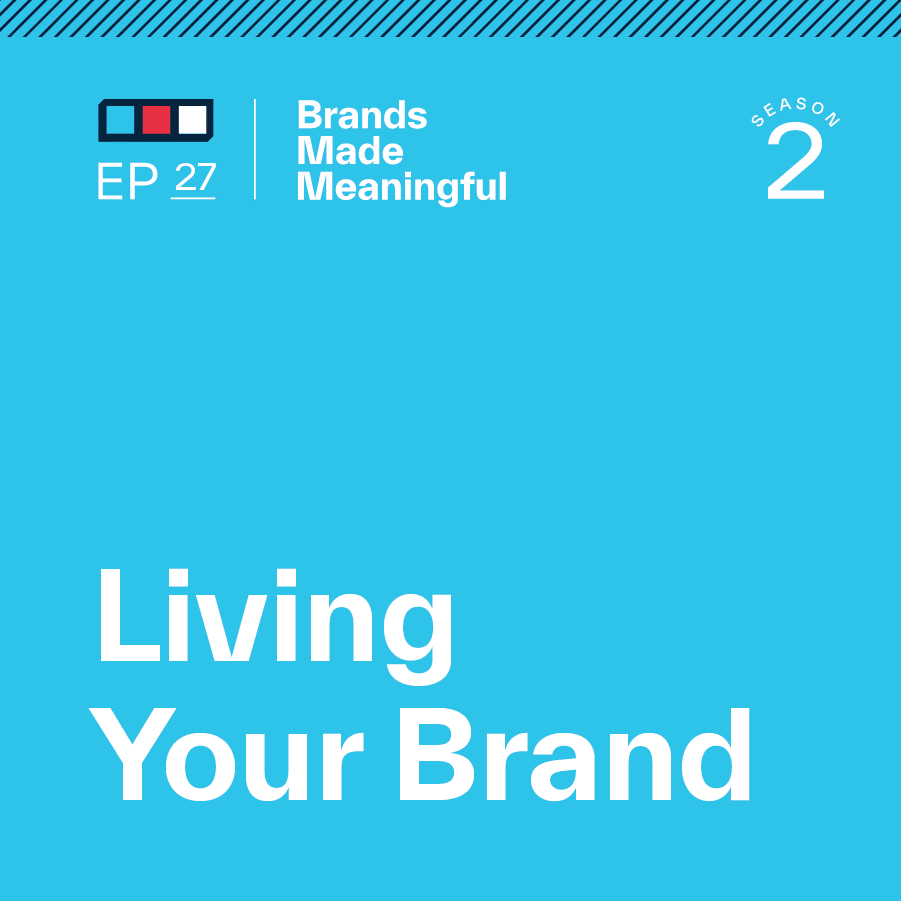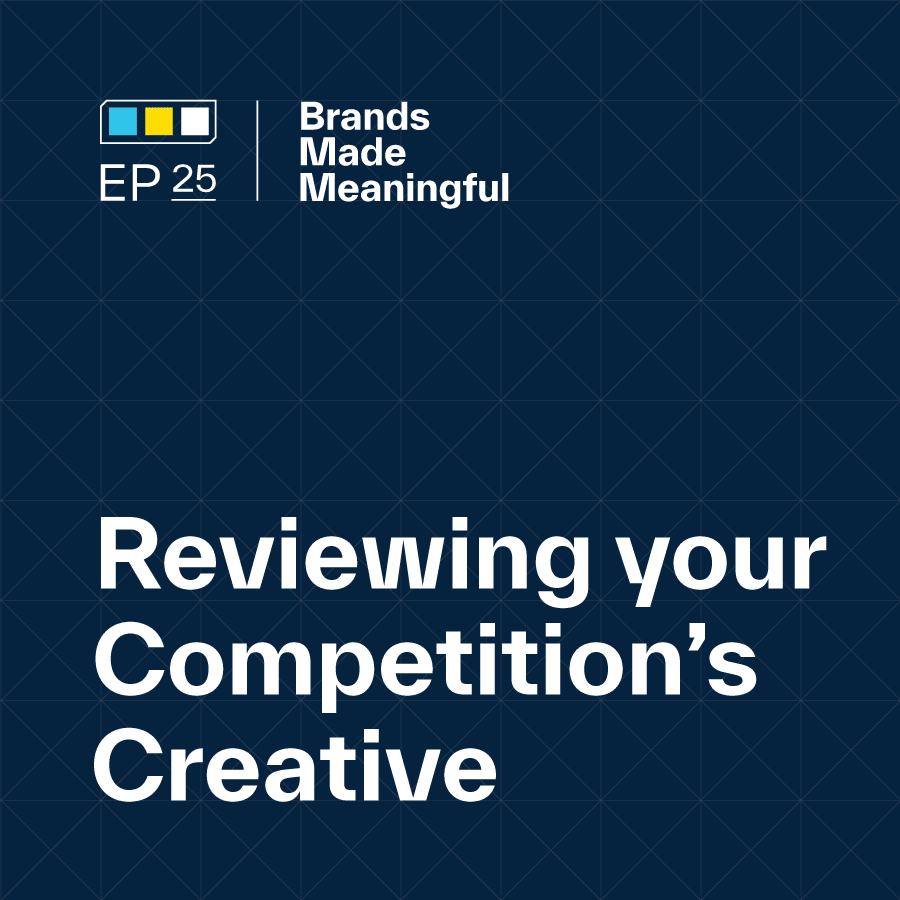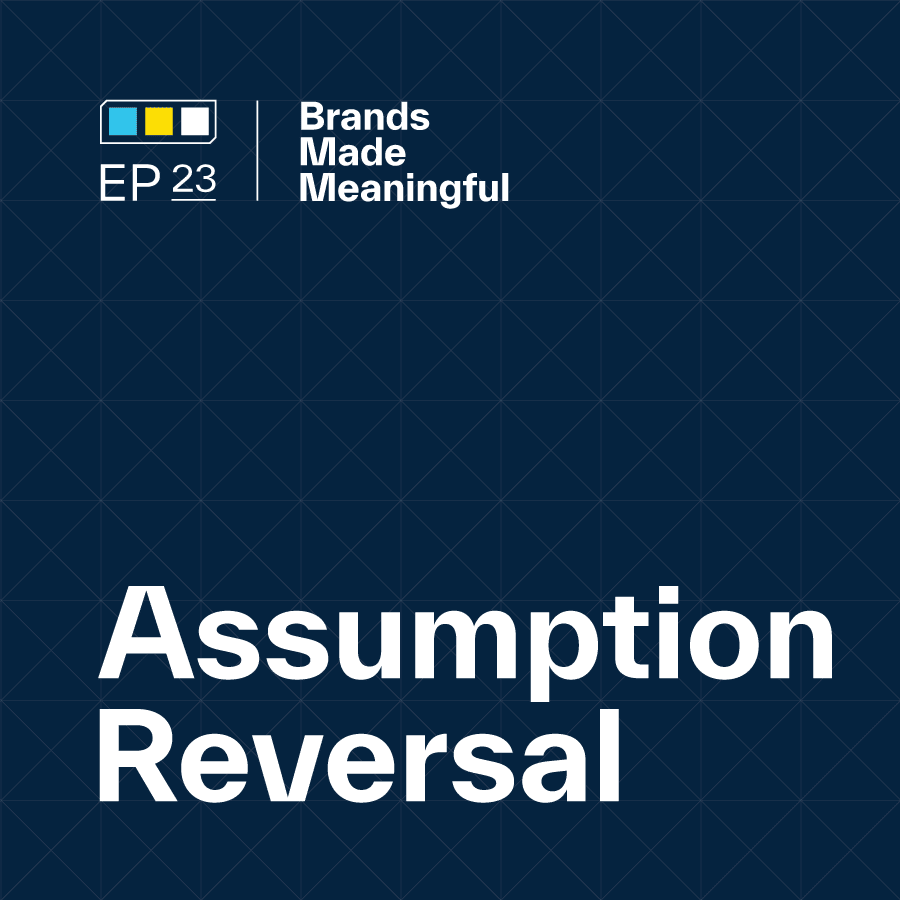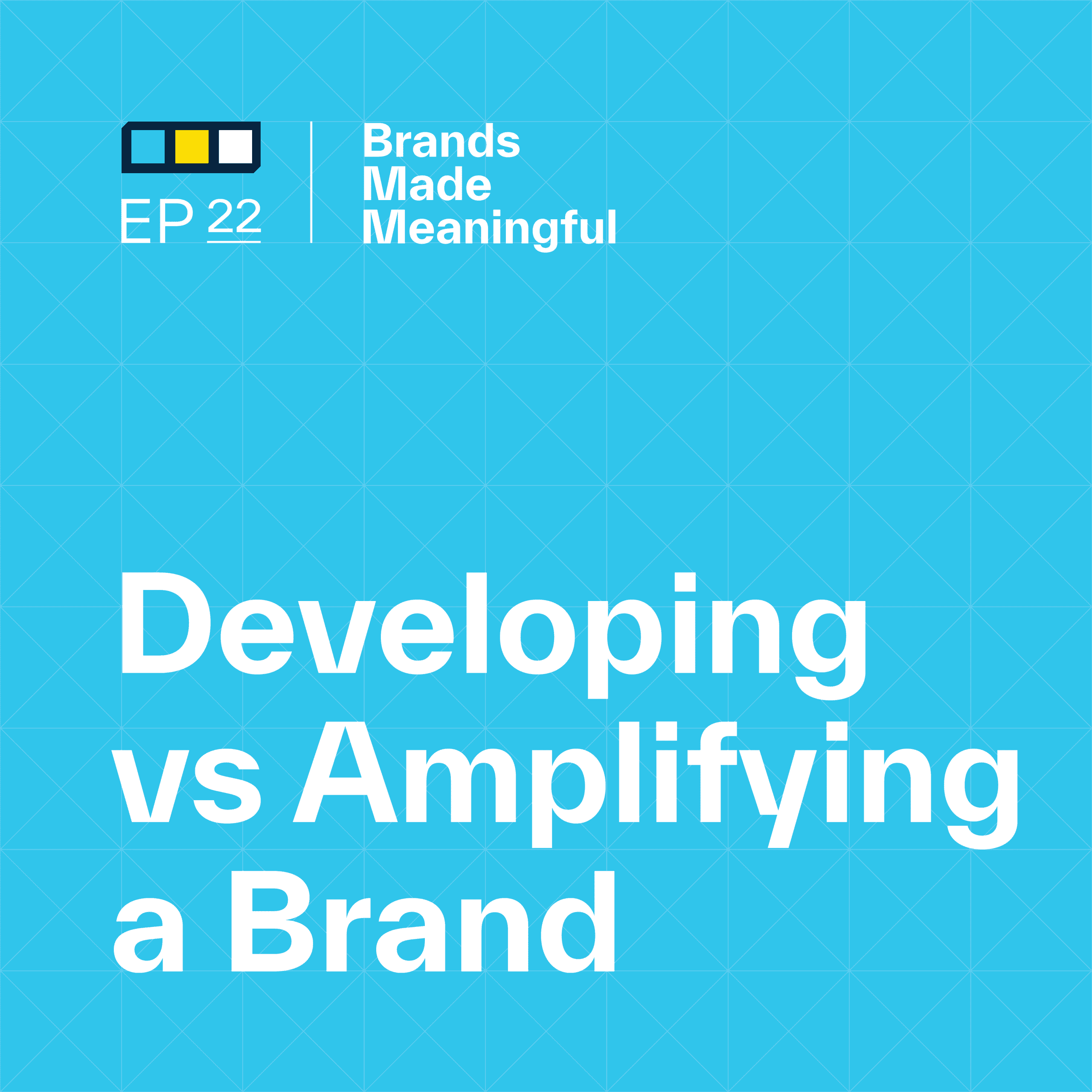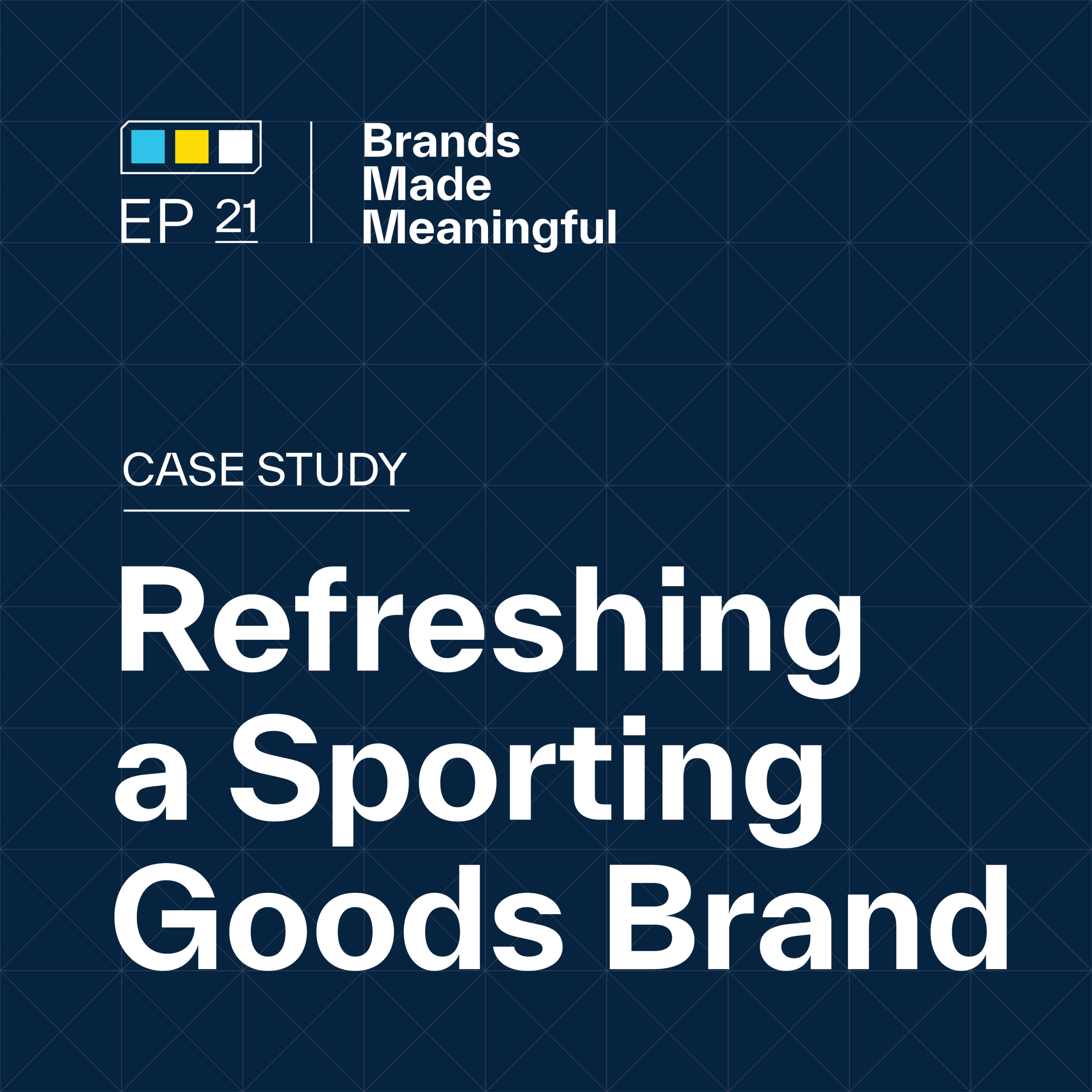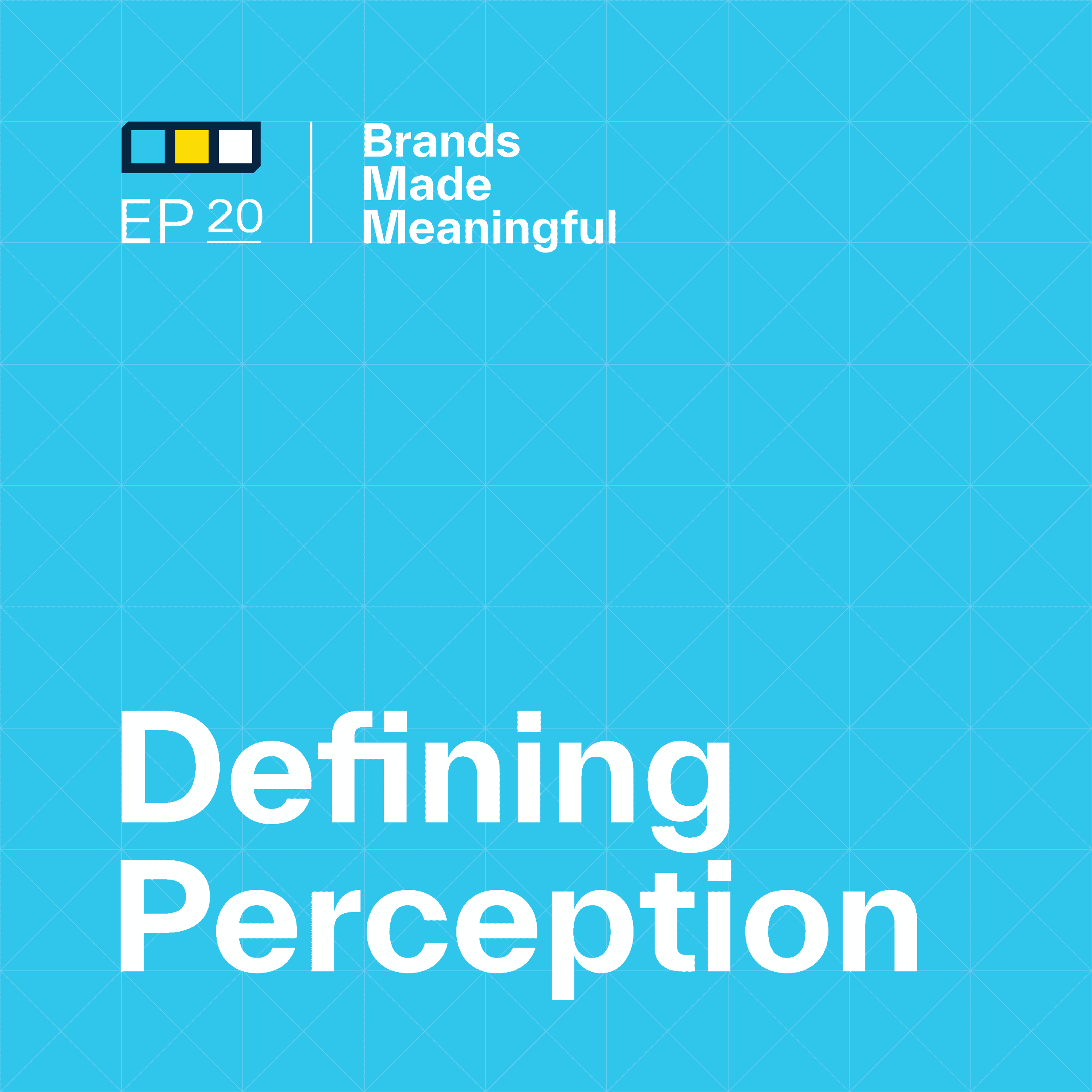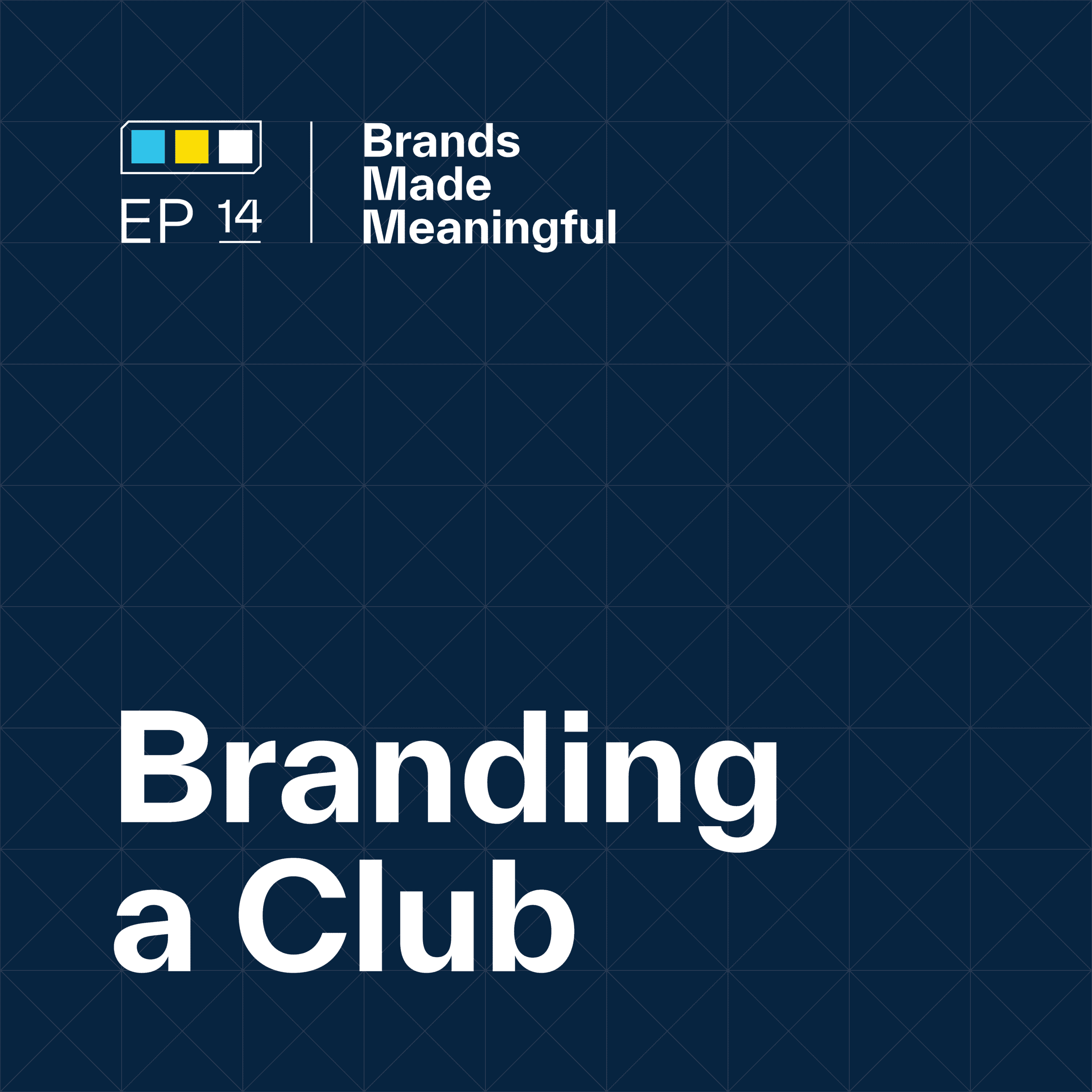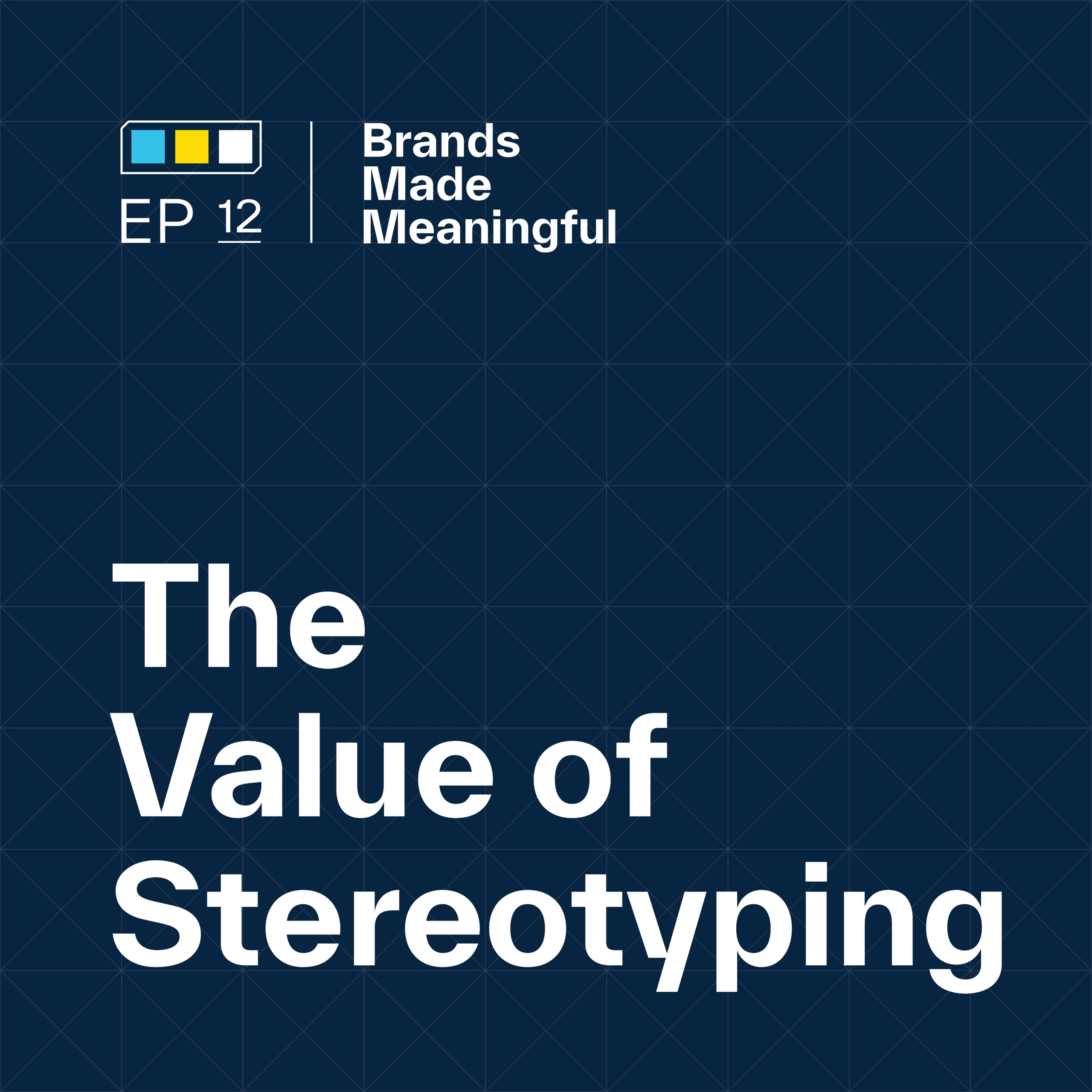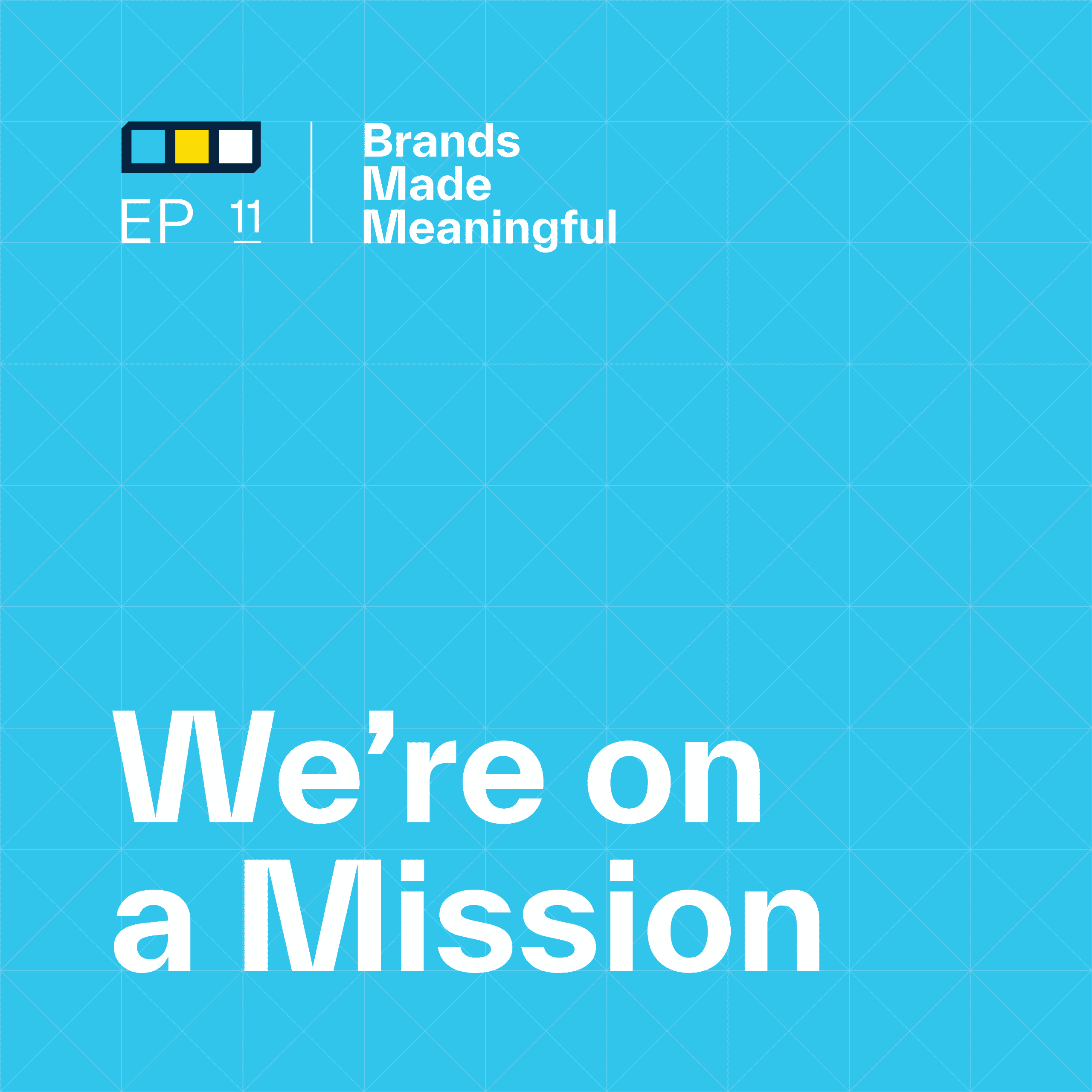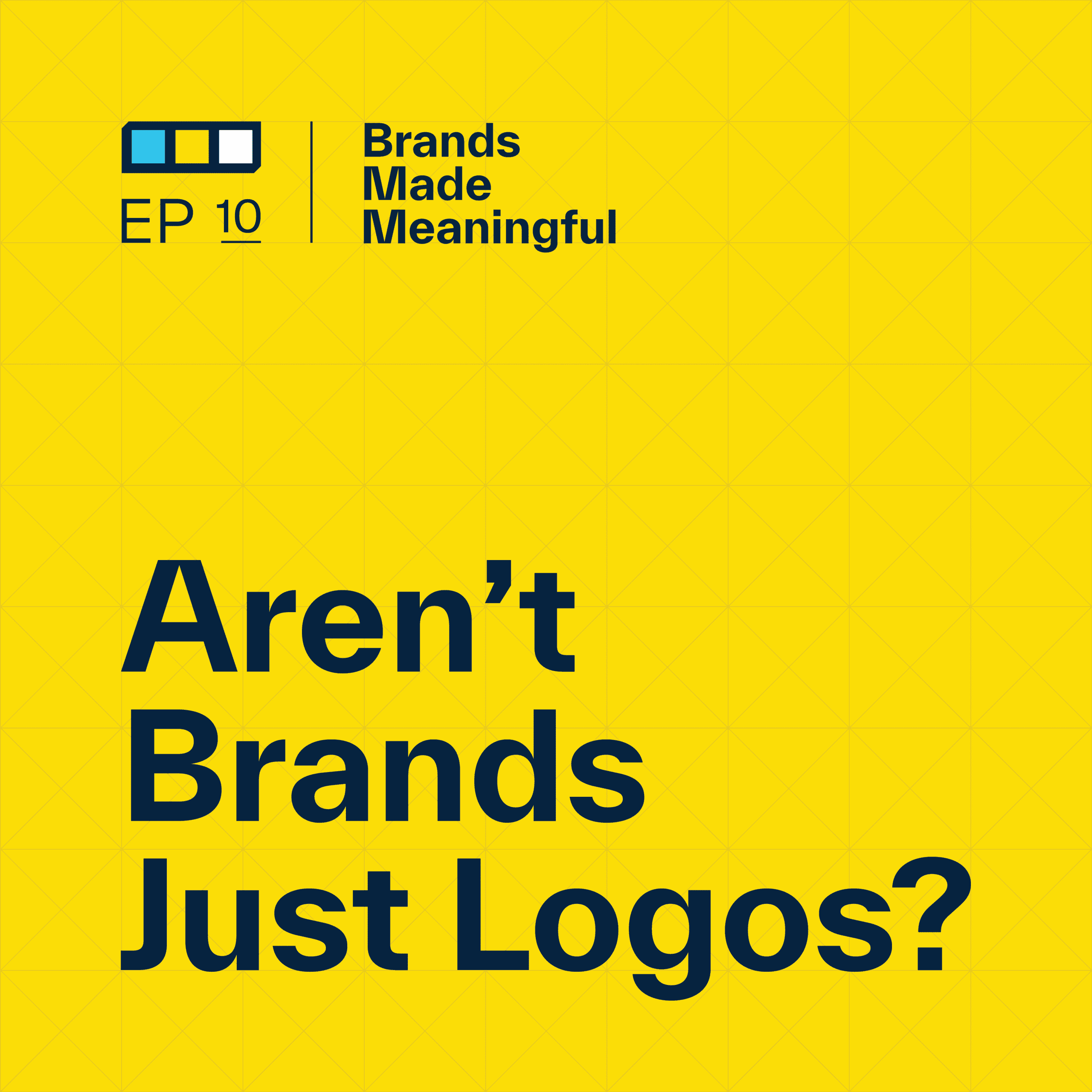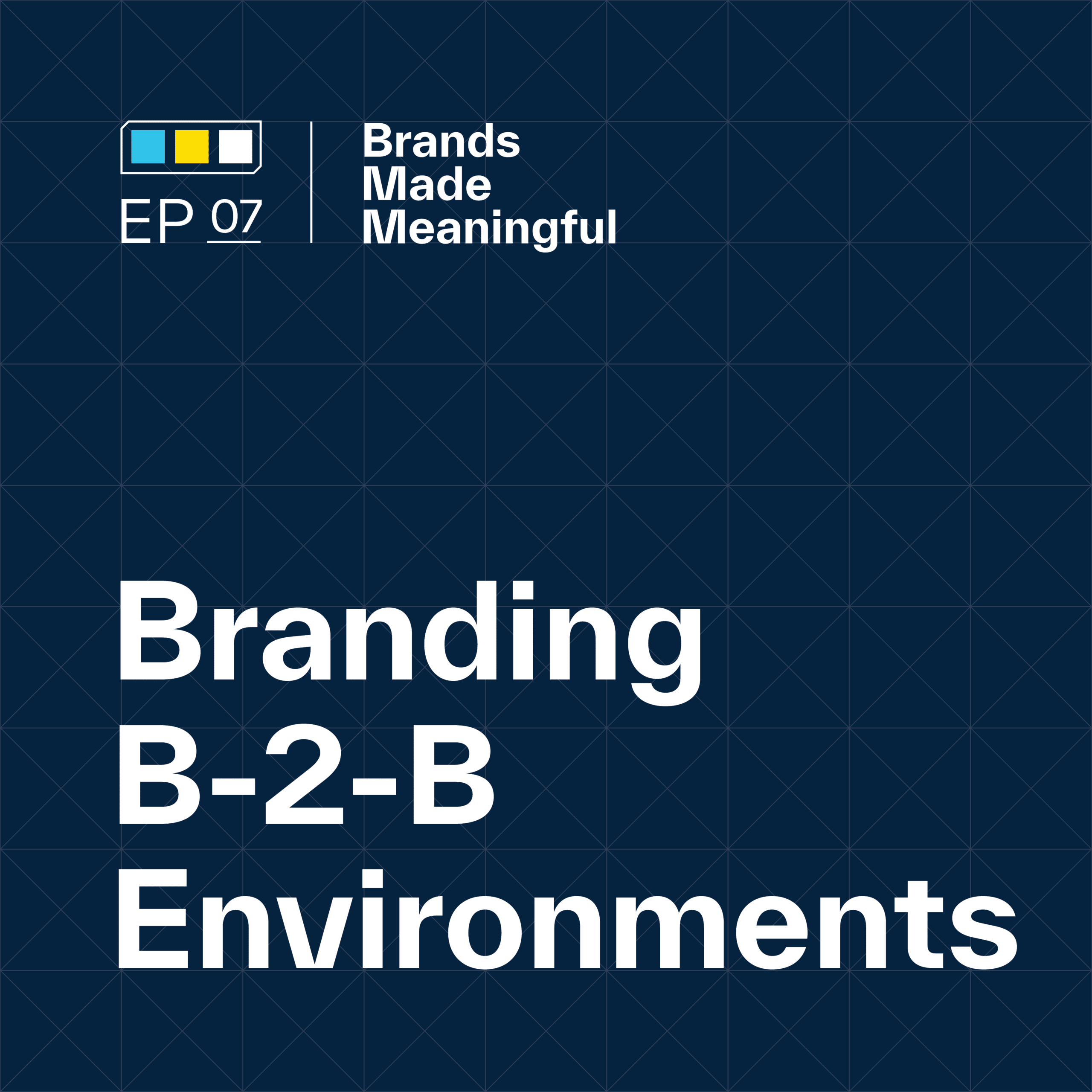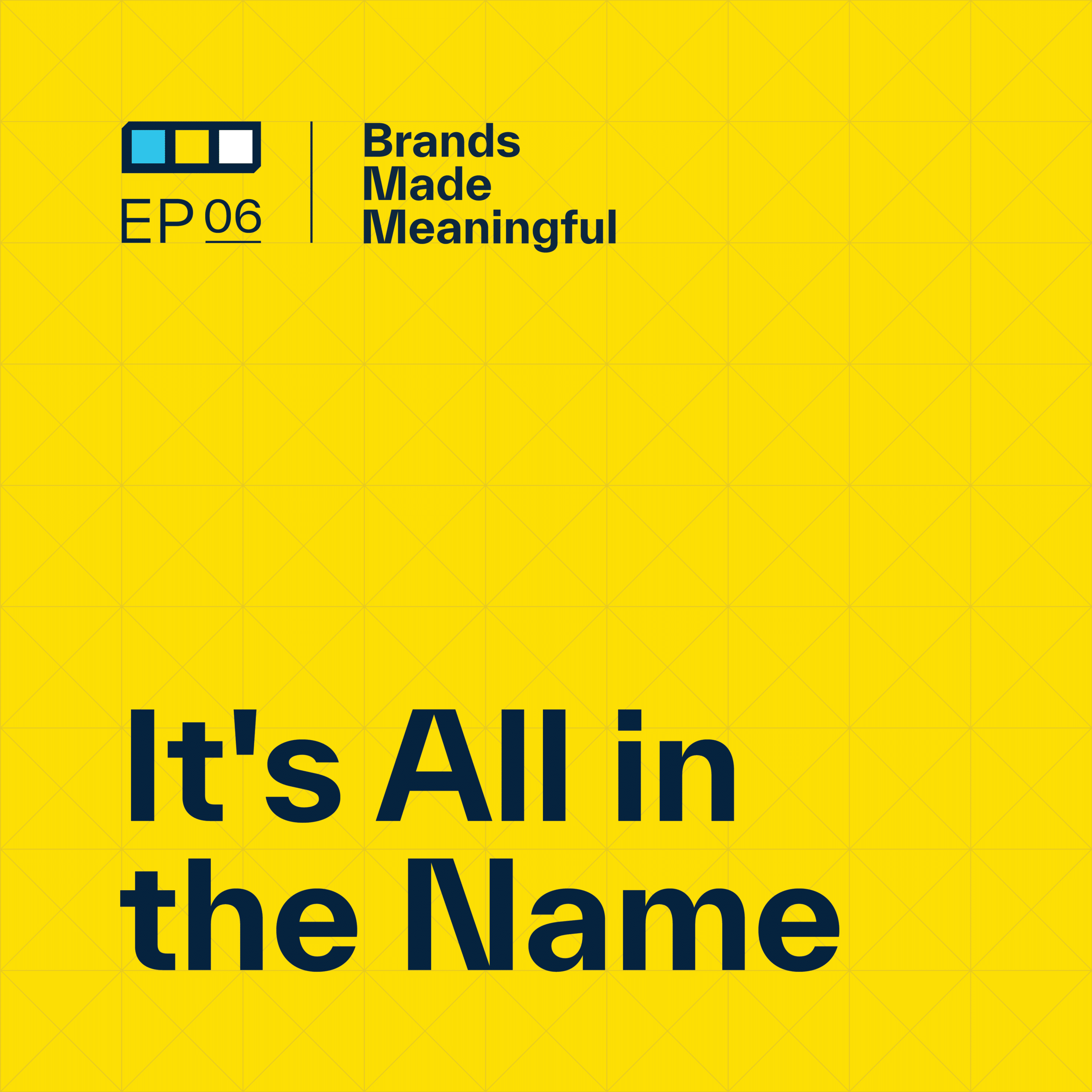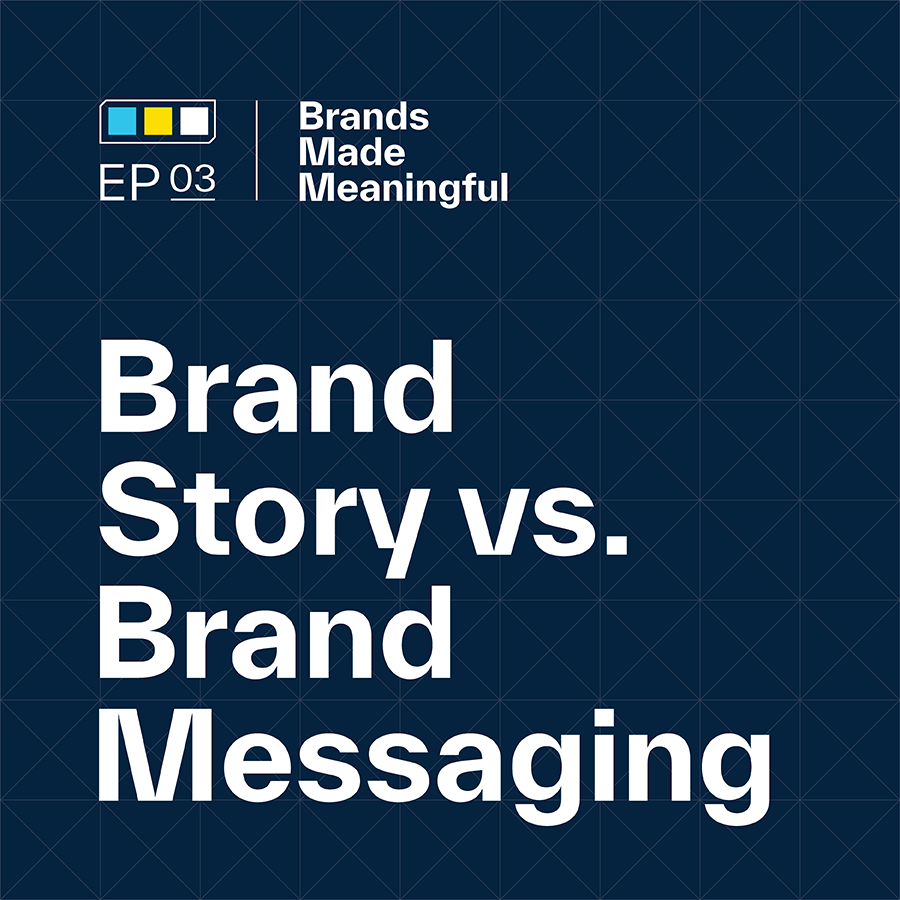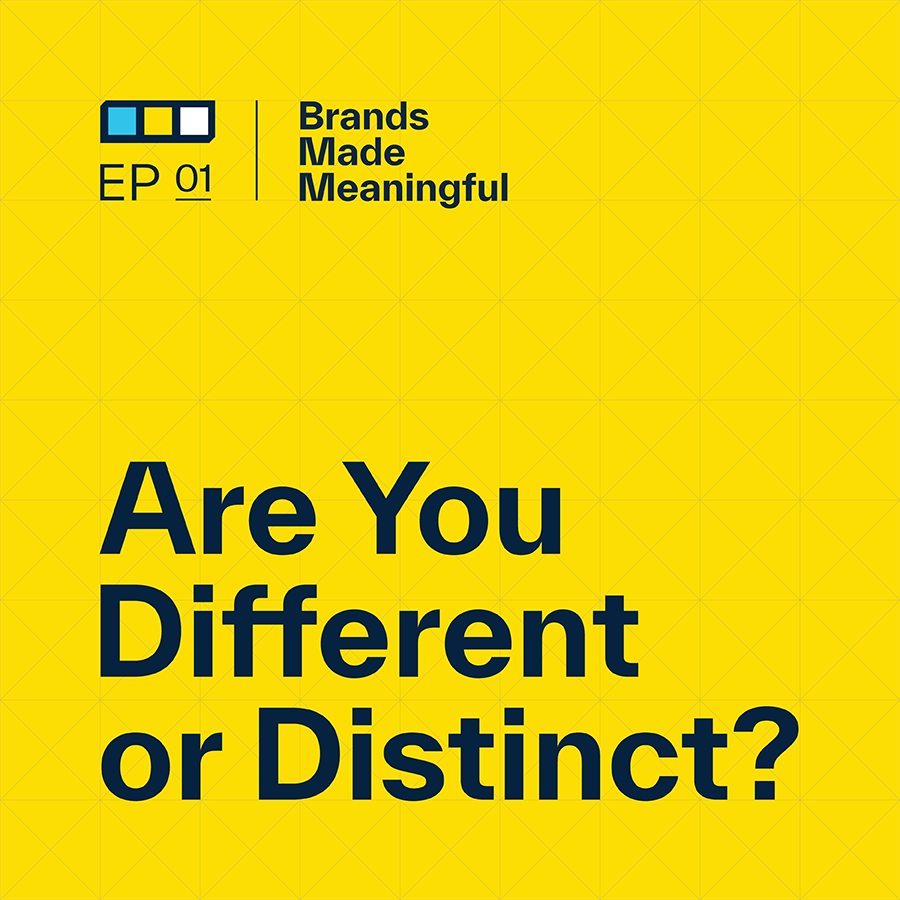EPISODE 58
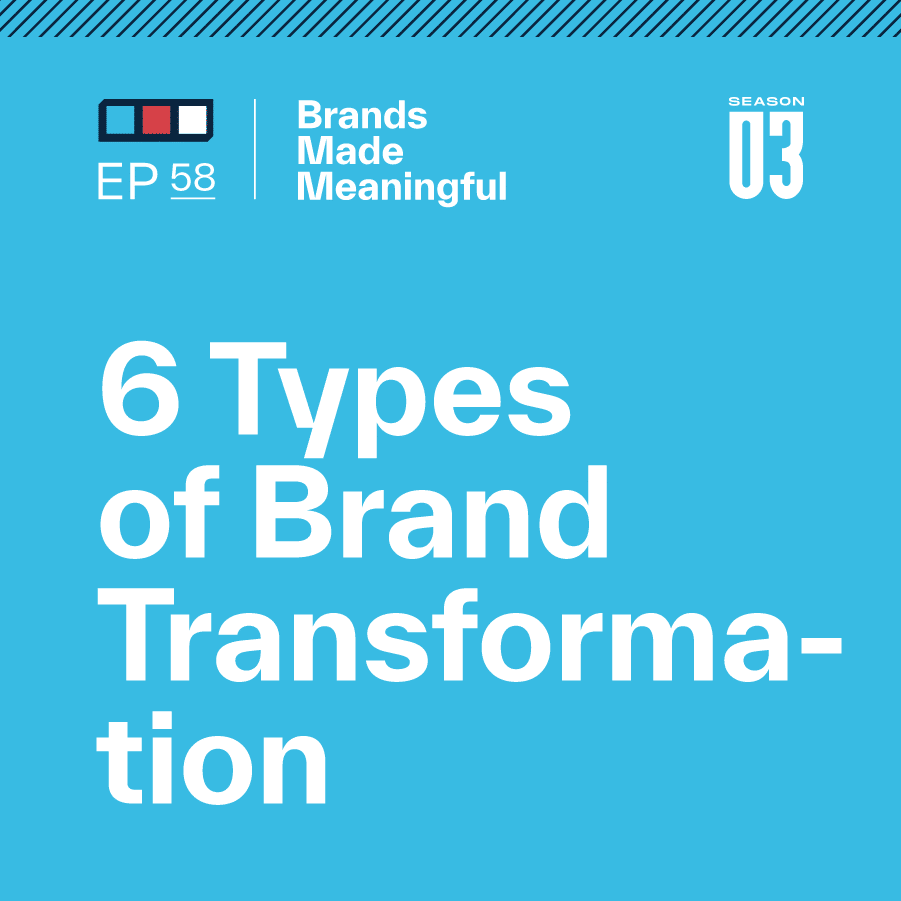
6 Types of Brand Transformation
Episode 58
Derek and Tucker dive into 6 distinct types of transformations for a wide range of brands.
EPISODE TRANSCRIPTION
Change is hard
Tucker It’s that big overarching sentiment that I think I would tell every single client. But even determining how you should change might be even harder.
Expand Full Transcript
Derek If an organization is having some sort of issue and they realize that the status quo isn’t going to get better or isn’t going to solve whatever that issue is, whether it’s growth or financial or it has to do with their customer base or memberships, then change is required.
Tucker I think every brand encounters obstacles that make you feel like you’re just not realizing your full potential. And what you should do next is that big question – how are we going to approach this? So over the last 25 years, you and our team have had this extensive experience in helping organizations overcome that fear right there. We’re not realizing our potential. How do we do this? What should we do? There is this idea that there is no situation for an organization that is the same. I don’t think I’ve ever encountered one since being here where this is exactly the same situation as this one. But what we’ve tried to do is pull them into ways where we can identify them to help people understand that if they are trying to make this type of transformation, this is what that looks like, and here’s what needs to be done to make that transformation happen.
Derek The solutions and the recommended approach to each individual organization’s challenge, issue, or opportunity are absolutely customized to help them specifically. But at a high level, when we step back and look at all of the sports organizations, the sports teams, the clubs that we work with, we’ve literally identified six different reasons – the most common reasons and situations that we see them struggling with the most that is the common thread through all of them.
Tucker I call them transformation strategies. Here’s the way that they’re trying to go about it. How do we articulate that in some kind of capacity? And so today what I want to do is walk through those six and what they mean and what that looks like and then maybe give them an example. I want to use ones that are on our website too. So if someone’s listening to this and hears the type of transformation that they think they might need, going to our website and looking at this case study that we’re talking about would really help them visualize what that type of transformation looks like.
Derek If you’re new to this podcast, we mean brand transformations. So we’re coming at this from a brand identity/brand strategy approach, not a transformation within how you make your sports products or the journey. It’s kind of the business operations behind the scenes, although, a lot of times, the brand strategy can impact that.
Tucker They go hand in hand. So whatever your brand strategy is, it is either influenced by or does influence that business strategy to say what perception we are trying to create. It depends on what kind of business you’re trying to make and what type of products or services you’re trying to offer. So they absolutely go together.
Derek So let’s run through all six. These are really interesting to me. This is what we do. This is what we talk to clients about all the time. So I think it could be fun to break each one of these out into its own episode and have its own conversation.
Tucker People are interested in it. I think that they want a conversation about each going into what a project looks like for that. As in what are the deliverables? How long does that take? So some things like that. There are nuances between all of these. It would help to go on a deep level but we just can’t do that in this conversation because I would talk all day. It just wouldn’t be good. So let’s dive into the six starting with brand refresh. So this one is all about updating, but not necessarily changing, the current strategy in place.
Derek Updating the visual elements of your brand, refining the messaging, updating or adding to or enhancing the overall brand identity using the strategy that you already have in place. You’re not starting from scratch. You’re taking the things that are working and making them better.
Tucker And modernizing them to say, This storyline that we’re leaning into works really well. This relevance, this differentiation that we’re leaning into, here’s why we’re competitive in our current market. How do we lean into that more versus completely changing our strategy? This is what a refresh is like. We’re trying to make sure that we don’t lose any equity that’s out there. A project that really resonates with this is Lemon Bay Golf Club, and that’s on our website. It goes through here’s where we are today, we’re already this type of people, how do we show that in a modernized way?
Derek Lemon Bay has a 30-year history of delighted members, healthy membership, and a waiting list. Note that in any of these six, we’ve never used the word rebrand. Rebrand is almost the equivalent to me in starting over – starting from scratch. And the keynote that you just said under the refresh example is there’s existing equity. There are a lot of things that are going right, but we have the opportunity to find out those things, update that story, and modernize it. This is a great way to talk about what this looks like.
Tucker So we want to go after the same people with the same product core offering with all of these same things. We just feel like we look a little tired, or maybe we sound a little tired, and we just need to update that and modernize that. How does that come to the fold? So for them, it did come back in a new logo and new colors and all these other things. But they have the same story. They have the same way they go about it. They didn’t change their service. They haven’t really changed the core offering of the club and what they’re all about and who they’re really for. It’s just a matter of how we tell that in something that was built today versus something that might have been originally created in the late 80s or early 90s.
Derek 30 years can go by in the blink of an eye. And next thing you know you need a refresh.
Tucker The second one is a brand evolution. So I say evolution. People might say that repositioning might be another thing to talk about. This is really about having an opportunity to change our offering, or change our market, or change our category altogether, as in we’re going to go after someone different. We’re going to be versus other people, or we’re going to bring something different to that market. That’s going to require us to probably reposition ourselves and tell a different story. So not the same story in a modern way, but a completely different story with a similar name or some of those components so it’s like there’s still a little equity here, but we need to evolve ourselves.
Derek There is equity. There’s absolutely something going on, something right. This isn’t a startup. So this is an organization that’s been around that’s been doing something right for long enough that you’ve got to a place where you are. But an evolution is a more meaty, more substantial, type of project.
Tucker We sometimes call this a brand pivot. We might not be going in this direction anymore. We’re going to take a 30-degree shift or we’re going to move. It’s not 180. We’re not a completely different company than we were, but we’re going to go after maybe a different set of people. Maybe we’re a sporting goods company and we’re going to go after a younger audience versus an older audience that we currently go after. That repositioning, that pivot, or that evolution of our brand is going to require us to change our strategy in some way and leverage some of the equities to tell a nuanced story that’s different but not completely unauthentic to what we are today.
Derek The example that we list that we can link back to on our website is McDavid USA – the sporting goods company that we’ve talked about before on this podcast and the evolution that they went through. It was a substantial repositioning. It was a step back to say that up until now, we’ve been for an older, aging male audience with a message of pain relief and sports medicine. Given the trends in the market and all of the opportunities that they’ve identified, they realized that without alienating that audience, they could reposition their brand to be about performance and about helping youth sports and youth and younger athletes crush it in whatever they are trying to do and become about opportunity and not about pain. So that was a substantial shift.
Tucker So maybe not a 30-degree shift – maybe more like a 60-degree shift.
Derek I think 60 is pretty good.
Tucker If you boil that down to the situation, they were changing their audience, but they were not changing their product. They were still offering the exact same products, just with a different visual aid. And they weren’t changing their industry. They’re still going. They’re still in the sporting goods, the sports medicine industry. They weren’t changing any of those things, but they were changing that audience. So how do we tell a new story? How do we leverage that name, because their name had great equity in quality and those kinds of components, and still tell a different story to a younger audience? That is the challenge that we had to help them come through.
Derek And this was a brand that had also been around for about that 30-year mark. Because this was a little bit more substantial when it had that dramatic of a pivot, it required re-addressing the mission. Who are we for? What is the world that we’re trying to create? It wasn’t just a cosmetic change. The core values of the organization didn’t change. The purpose didn’t change. But the mission and how they were going to achieve what they needed needed to be updated and redefined.
Tucker Resetting your sights. That’s a really good point. The first one we talked about was just refreshing a brand. Normally all those things like the positioning, the core values, the mission, vision, and purpose stay the same. It’s to say we are the same company. We are just now trying to modernize ourselves. With this one it’s more something is changing with us, whether it’s that product or something else. But we need to shift our brand to evolve to this new offering, this new audience, whatever it is, to meet that need. The next one is brand creation. So when people go, you’re going to build a brand from scratch, this is what it is, right? It’s creating a brand, and establishing a new identity. Our clients come to us and say, Here’s this new product, here’s this new idea, here’s this new something that hasn’t ever been seen anywhere. What do we do? How do we build it from scratch? This is where brand creation comes in.
Derek And if this is brand new or if it’s a start-up, that’s where we get into having to establish a lot of the brand strategy and core components upfront. If this is a subset brand or a new offering like the internal team member brand for Lifetime Fitness that we worked on, we didn’t touch the Lifetime Fitness master brand.
Tucker Not at all.
Derek That was our North Star to then help us determine strategically how a member, an internal employee-focused brand, would ladder up and support that.
Tucker And that’s a tricky kind of conversation. Is it a new brand or sub-brand? We’re working on a sub-brand right now for a client, and they’re building out a product offering that is completely different than anything else that they do. So what we do is we look at that master brand as a North Star. It’s a North Star, but it’s not a completely hard and fast rule because we’re speaking to a different audience, we’re having a different product, and we do a different thing. So there are nuances in there. It should feel like a part of the ecosystem.
Derek It should be authentic to the master brand. But it needs to be relevant to this other initiative.
Tucker And surprising to this new audience. So how we build that out is that creation aspect. Like you said, we’re building a new strategy. We’re understanding a new landscape. We’re trying to do something that has not been done for our company in a long time, and it doesn’t involve our core offering, or our core audience, or any of those other things. The next one is brand expansion. So this happens when a brand that we’re working with wants to expand into a new territory whether that’s geographic or maybe it’s a new industry. Maybe they’re expanding their offerings to say, We do offer this now, and now we’re going to add these product lines, and what does that look like from our master brand standpoint? Because now we’re not as narrowed as we used to be. We have to be a little broader. So how do we make sure that when we expand we’re doing so meaningfully and not losing the equities with our current offerings, our current audiences, our current markets? But we are trying to go after these new ones. The one that comes up for me is Uneekor. It’s a really good example.
Derek Uneekor is a golf technology business that had about a decade of really impressive success in the Asian golf markets with a golf simulator, golf launch monitor, and technology product. They did well enough in a golf-hungry area of the world that they then looked at the next largest, fastest-growing golf market which is the United States in North America. So for them, it was specifically about introducing not only their brand but a product line that was in addition to what they already carried into the United States market. We’re not determining what those products are. But in that ecosystem of their master brand, to determine from a marketing standpoint if we’re going to introduce something in a brand new place to a brand new audience who might want a nuanced difference from what your current audience or market has, how do we put that story together in a meaningful way?
Tucker It’s a good conversation – how we take advantage of some opportunities without losing our current success.
Derek You’ve proven that it works. But what people in one part of the world want might be different than what other people in the world want. So there’s there’s some strategy.
Tucker And I think their story is probably the easiest to understand when you talk about expansion. Obviously, the Korean markets are very different than the American markets in consumer preferences. But when we look into maybe you’re a private club and you’re starting to say, well, we were a golf club forever, but now we’re trying to expand ourselves more into a country club. And what does that look like? Because now we have a bigger audience, a little broader audience. How does our master brand change because we’re expanding and we’re trying to get larger? That’s the same as if you were to look at anything else.
Derek For private clubs, I see public golf clubs that go private or attempt to go private where they try to raise enough members to then say we are now for a different audience than what we have been.
Tucker And I would say that that’s more of a brand evolution because now we’re doing a pivot. We’re saying we’re offering similar things, but right now we’re into a completely different audience. So we’re not expanding our offerings. We’re not changing who we are. We’re now just changing who we are for or what we’re going to offer them.
Derek Good point.
Tucker It’s super tricky because then you go, Okay, what’s going on here and why is it important to identify these? It helps us make sure that we’re going about it in the right way so that we’re not just slash and burn. They think that you say that a lot – not the slash and burn part – but when there’s equity here, we can’t just lose that. Understanding what type of transformation we want to try to achieve helps us understand how much equity we need to maintain because that keeps us relevant to certain people or not.
Derek And not all history is relevant either. Not all the equity is relevant to what this opportunity might be. The equity for Uneekor was to say we’ve had enough success in Korea. We see how many Korean golfers are in the United States, especially on tour. It’s a massive shift in the demographic of who we are watching play golf, especially on the LPGA. So that was enough strategic leverage for them to say, I think this is a viable opportunity for us. Let’s give it a shot. But the gaming equity that they have in their back pocket of where they actually evolved from as engineers, online gaming, that transitioned into the software, not into the strategy of how you penetrate with a brand new brand.
Tucker The next one is a brand merge. Think about when we’re dealing with mergers and acquisitions or when we’re uniting two or more brands. The best example that we have is Game One uniting eight brands into one that is all even set. How do we build one brand out of eight of them? This is a brand merge. We’re going to try to take the best parts of each of these things and make sure we build something that’s authentic to who we are, build something that’s really relevant to one core audience, and then build something that’s surprising and delightful to all the employees and all these current customers for these brands.
Derek If we haven’t done so, we’ll do a stand-alone conversation at some point soon about Game One and the entire sports organization and what that looked like because this now includes creating a new name. For the strategy for this particular client, we determined that the names of the eight existing organizations that came together did not support the goal of unifying all of them under a banner that brought them all together.
Tucker That project’s exciting because we have all eight regional brands and we’re trying to build them into one cohesive national brand that feels like it has the right to win that space. What does that look like to say, here’s eight ways that we can do it regionally, but we’re going to merge these to do it one way. The business strategy there was to say we need to merge these because we’re going to get all of these equities out of it. We’re going to be able to build a national footprint. There were so many business reasons that they had already. And when they came to us and said, here’s what we’re thinking about doing, what does this look like from a brand side, that goes into needing to understand which of these, if any, have the equity to move forward as the master brand. And at the time, none of them really did. So the idea was to build one new brand, one brand architecture, that collects and scoops these all into one that’s really nice, and then a storyline that all of them resonate with. We didn’t want to lose the uniqueness of each of those regional brands. We didn’t want to lose the service levels. We didn’t want to lose all of those components. But that had to come back to say, who are we and why are we uniting? And then how does that come into play from a brand side?
Derek From the business side, they’ve been able to consolidate buying power and purchasing leverage with all the partners and all of the other sports brands and products that they carry and sell. It makes a ton of sense from a branding, marketing, and advertising sense to be able to unify and consolidate all of those efforts to promote one brand instead of dividing that effort by eight into eight different parts of the country. But now to have one focused message, then they can determine what the subsets of messages are that are most relevant to different sports, to different audiences, etc., has resulted in incredible growth for them, and it’s made the marketing team that they’ve put together a lot smarter and more effective and focused.
Tucker That project is so exciting to me because it was super fun. And you’re seeing it behind me in our in our conference room. It’s just set up on the boards. And so I love that project because of how complex and how nuanced and then how successful it all was. It was a really ambitious idea. And it worked. And that’s the thing that gets me super excited about it. [00:21:18][20.8]
Derek: Again, that’s on our website too. Feel free to check out some behind-the-scenes of Game One. Love that project.
Tucker The last one, which I would say is probably one of the more common ones that we do out of all of these six, is brand clarity. So this is about clarifying our current position, our current values, and our current messaging, and simplifying it so that we understand what we are connecting with. What’s really good here? What ways are we currently marketing ourselves that are really effective so that we have clarity? This involves maybe putting guidelines to things. This involves just putting a North Star out there to say, you guys are already doing this. Just make sure that you understand here’s what makes you different. Here’s what makes you unique. Here’s what makes you really surprising. Keep going after that.
Derek We look at the overall work that we do into three different buckets. First is brand strategy. Second is brand development, which is where the creative happens. And then third is brand activation and how all that comes to life. And, for me, this really leans in hard in that strategy component. Oftentimes, like the work that we did with the Minnesota Vikings recently was a completely internal deliverable to that team. It was never going to be about their fan-facing brand palette, logo, or graphics.
Tucker Most of these larger brands that we’ve worked with have creative teams inside. And they have really good ones. Going back to the Minnesota Vikings – they have a great creative team. It is not our job to come in and say, here’s what you need to do from a creative side. But what most of them don’t have on their team is someone who thinks about it from a third-party strategic lens to say, what are we doing right now that’s really great? I think that there are a lot of people who get lost in the weeds because they do so much work. Think about some of these large brands. They put out so much stuff.
Derek Oh, it’s incredible.
Tucker It’s incredible. They are engines of content. And what you get lost in is the nuance between just because we’re putting out a lot doesn’t mean it’s all great. And understanding where our core relevance is, and where our core surprise is, can be really helpful for those teams to go, You know what? You’re right. It just kind of keeps us on track. Maybe we have gotten off track here or there, maybe we’ve moved a little bit, but this keeps us on track to where we’re going. It’s not changing our strategy, but it’s just saying that you want to do this. Here’s the clarity that helps you do that a little bit better.
Derek Their internal brand team and creative team created so much content that what they were craving was reasoning and guideline structure to help them be more efficient and thoughtful and smarter about the type of content that they were producing so that it was more effective for the various audiences that they identified not only as fans but as corporate partners also.
Tucker Just to say who is relevant to us still, that’s clarity. Just to say, are we still working with the same people, working with Sprocket, and understanding their personas? Our research partner, April at Sprocket, is great because she’s going to say here are all of our opportunities from a persona standpoint for the Vikings. And for us to come back and go, here’s the nuance, here’s what they all gravitate towards. And how do we build that master brand? Not us building it like designing it, but to say, what our guiding North Stars are that are going to align us with what we need to be. That’s really all they needed because they have a great team and they have a great marketing department. They have amazing people that work over there. All they wanted was for a third party to come in and give them a gut check. Are we doing this right? Are we going down the right path here or do we need to realign where we’re going?
Derek I think brand clarity is the results and the deliverable is part validation and part inspiration.
Tucker And we’ve worked with other clients with this too. It’s not just the idea of pulling in all of this information and then giving you a new idea every single time. Sometimes people just want to know if they’re doing what they think they’re doing, or if they’re just aimlessly wandering down this path of doing a lot of work just to do a lot of work.
Derek Are we heading in the right direction, intentionally and purposefully to where we believe we need to go to help us achieve the goals that we’ve set? Or have we strayed a little bit? And it’s a great realignment and refinement of that strategic plan.
Tucker Takeaways. So I’m just going to run through them quickly from a high level again. So the six that we talked about today for the brand transformation strategies are we’re going to do a brand refresh, brand evolution, brand creation, brand expansion, brand merge, or brand clarity. And those ladder up to say, what is our business strategy, what do we want out of this, and what do we need right now? We might not need to do a completely new refresh. Maybe we just need clarity on what’s wrong, or maybe what the opportunity is in the market right now that can help. For me, this whole conversation around branding is complex and difficult to navigate. I think that that is such a theme with most of our clients. They don’t come to us and say, Hey, I would like to do a brand evolution. And we go, Okay, sounds good. And we just move on. This is not like a menu item. We use these to help bridge the gap when you’re talking about this challenge that you’re in right here. It sounds a lot like this type of transformation is what is in store. Does that sound right to you or not? And that just helps us have the conversation with them and gets them to go, Okay, I get what you’re talking about. It gets them out of their day-to-day language and moves into something that might help clarify where they’re going.
Derek While it is nuanced and challenging and complex, being able to have a conversation with a prospective client, whether we work with them or not, to help them identify what this issue is for us to be able to give them a little bit of peace of mind and to say, I get what you’re dealing with is complex and may be frustrating for you, but it’s not that unique. The nuance is how it would be solved for you, and would be customized to you, but you’re not the first organization in the world to have this specific problem, challenge, or opportunity.
Tucker If someone comes to us and we have a conversation where they need brand clarity, that doesn’t mean that we have a templated approach to how this works. It would be, what do we need to know and what can we do to make sure we understand that? Like I said, these aren’t individual. There isn’t a project plan that meets that exact thing, but it just helps everyone on our team and your team really get a good picture of what we are trying to do. It’s like our big objective. We’re trying to understand where we’re going off the rails and where we’re not. So we’re talking about having some brand clarity. That’s our overarching objective for the project.
Derek But when in doubt, start with that one.
Tucker That is the easiest one to understand because you can make a decision on everything else afterward.
Derek In the meantime, if any of these sound interesting to you, if you’d like more information, or if you’d like to see examples of any or all of these, please check out Sussner.com. Go to our capabilities page. We have a description and a little bit more elaboration on each of these. And stay tuned for upcoming conversations where I think we’re going to dive into these one by one.
Tucker And if you heard this and you go, Oh my God, we need to go through this type of transformation right now, call us right away.
Derek Give us a shout.
Tucker I’d love to talk to someone who goes, I heard your podcast about this and I really, really want to talk about it. That sounds awesome.
Derek That would be great.
Tucker All right, till next time.
Derek See you soon. Sussner is a branding firm specializing in helping companies make a meaningful mark, guiding marketing leaders who are working to make their brand communicate better, stand out, and engage audiences to grow their business. For more on Sussner, visit Sussner.com.
More Episodes Like This
Reclaiming Reputation Through Brand RevitalizationEpisode 85
Derek and Tucker discuss the potential that a branding initiative can have to restore a club’s reputation.
Branding The Club with Don KovacovichEpisode 84
Don Kovacovich, GM of The Club at Golden Valley, joins Derek & Tucker to discuss the impact that rebranding has had on his club and the opportunity it presents for other clubs
Changing a Club’s Membership ModelEpisode 83
Derek and Tucker discuss key considerations and challenges when changing your club’s membership model.
Connecting a Club with its Story with Jackie CarpenterEpisode 82
Derek and Tucker are joined today by Jackie Carpenter, author of People First.
Branding a Club AnniversaryEpisode 81
Derek and Tucker discuss the unique opportunity presented by milestone and anniversary dates for private clubs.
Private Club Storytelling with Ricky L. Potts, Jr., CCMEpisode 80
Derek and Tucker have the pleasure to speak with Ricky L. Potts Jr. about how powerful storytelling can be for your club members.
Opportunity in Club Facility RenovationEpisode 79
Derek and Tucker discuss pivotal key moments in your legacy and how to transform your story through renovation.
The Evolution of Club Members with Jon LastEpisode 78
Derek and Tucker are joined by Jon Last from Sports & Leisure Research Group to discuss the evolution of club members.
Member Branding vs. Product BrandingEpisode 77
Derek and Tucker discuss the challenges their client's have moved through when approaching differing styles of branding.
The Role of a Private Club's LogoEpisode 76
Derek and Tucker take a look back on private club logos they've designed over the years and explain the strategic reasons behind their choices.
Club Brand GovernanceEpisode 75
Derek and Tucker divulge the steps to evolving your brand while retaining your core values.
Seasonal Member MerchandiseEpisode 74
Derek and Tucker take a look at crafting specific merch to celebrate landmarks and special times of the year.
Who is Sussner?Episode 73
Derek and Tucker take a break from talking shop to talk about who they are and what they stand for.
Club Identities Beyond AmenitiesEpisode 72
Derek and Tucker discuss what it takes to stand out in unique ways for your club.
Little Things Mean EverythingEpisode 71
Derek and Tucker take a look at the often missed and easy to overlook.
Build Flexible Brand SystemsEpisode 70
Derek and Tucker break down the building blocks for long lasting branding.
The Club at Golden ValleyEpisode 69
Derek and Tucker take a close look at one of their recent rebrands.
When to Launch a Club RebrandEpisode 68
Derek and Tucker break down how to find the perfect timing when launching a club rebrand.
Steps to Launching a Club RebrandEpisode 67
Derek and Tucker break down the steps to take and the reasons why you should consider a club rebranding.
Brand Marketing vs. Brand DesignEpisode 66
Derek and Tucker define the line between marketing and design and how they intersect to inform one another.
Building Brand GuidelinesEpisode 65
Derek and Tucker show us how to build infrastructure guidelines to unify your brand experience across the board.
Club Identity SystemsEpisode 64
Derek and Tucker cover what Identity Systems entail and how to discern between internal and external methodologies.
Navigating Branding With a BoardEpisode 63
Derek and Tucker bring clarity to uniting your company under one cohesive vision.
Putting a Committee TogetherEpisode 62
Derek and Tucker assemble your need-to-know facts when putting together your committee.
The Guiding Principles of Private ClubsEpisode 61
Derek and Tucker go over the top ways private clubs can find the balance between pleasing old members while attracting new ones, all while making moves towards the future.
How Color Affects PerceptionEpisode 60
Derek and Tucker cover how to best convey your business with color.
Brand EcosystemsEpisode 59
Derek and Tucker break down how to craft effortless experiences when considering your brand as a whole.
6 Types of Brand TransformationEpisode 58
Derek and Tucker dive into 6 distinct types of transformations for a wide range of brands.
Tournament Branding For ClubsEpisode 57
Derek and Tucker discuss designing and delighting your club members with tailored events.
Brand Promoters & DetractorsEpisode 56
Derek and Tucker discuss how high level promoters increase your NPS and how to turn the tides on your detractors.
The Loudest Voices in the RoomEpisode 55
Derek and Tucker talk about gathering feedback while prioritizing every voice.
Determining A Primary AudienceEpisode 54
Derek and Tucker discuss if and when you should be honing in on your audience vs. casting as wide a net as possible.
Branding For ExclusivityEpisode 53
Derek and Tucker discuss the intricate process of naming your brand.
Measuring Brand SuccessEpisode 52
Derek and Tucker discuss how we measure our success in branding and a few key KPIs that help us understand our impact.
Branding For ExclusivityEpisode 51
Derek and Tucker breakdown how brands can create the perception that they are exclusive and only for a certain type of consumer.
What Makes A Brand SurprisingEpisode 50
Derek and Tucker break down the Sussner formula that we believe leads to a surprising brand.
Breathe Life Into Brand TraditionEpisode 49
Derek and Tucker discuss the intricacies and common pitfalls of branding for Private Golf Clubs.
They Key of Visual DifferentiationEpisode 48
Derek and Tucker break down the importance of differentiating your brand on a visual level.
Branding For Private GolfEpisode 47
Derek and Tucker discuss the intricacies and common pitfalls of branding for Private Golf Clubs.
Dealing With An Identity CrisisEpisode 46
Derek and Tucker breakdown how to identify and remedy a brand's identity crisis throughout thoughtful and intentional brand management.
Branding vs MarketingEpisode 45
Derek and Tucker discuss the differences between Branding and Marketing and how to make the two compliment each other.
Build Your Brand's FoundationEpisode 44
A brand's foundation is a critical element in being successful in the long-term.
Building a Constructive Branding ProcessEpisode 43
Derek and Tucker break down the steps required to build the most constructive and meaningful branding process.
What Makes a Brand Relevant?Episode 42
Relevance is a key piece of a brand's identity for creating clarity and connection.
Your Right to WinEpisode 41
Derek and Tucker discuss the “Right to Win” and the odds of your brand's success within your target market.
An Intro to Sub BrandingEpisode 40
Derek and Tucker discuss the nuances of developing sub-branding and strategies.
Conquer Branding FearsEpisode 39
Derek and Tucker dive into how to overcome the fear of change and the nature of constant refinement of your brand.
Balancing Strategy & DesignEpisode 38
Great strategy is a necessary foundation for great design—and great design brings great strategy to life.
Branding PrioritiesEpisode 37
Branding priorities are the actions and initiatives that shape or enhance a brand's identity, perception, and market position.
Invest in Your BrandEpisode 36
Investing in your brand benefits your company as a competitor in the marketplace, builds trust with customers, increases perception of quality, and drives employee engagement.
Why is Positioning Scary?Episode 35
Narrowing the brand's position is really a strategic decision to focus the brand's offerings, messaging and target audience on a specific niche or segment within the market.
What Are Brand Consultants?Episode 34
Derek and Tucker discuss the importance of hiring expertise with a wider breadth of knowledge than just visuals.
Hire for Brand FitEpisode 33
Hiring people that fit your brand is key in order to maintain brand authenticity, positive culture, and consistent messaging.
Your Brand’s Stance MattersEpisode 32
Your stance can help define your brand from a core level and make branding, hiring, and marketing not only easier, but more meaningful.
Levels of Executing a Brand RefreshEpisode 31
If you have a brand strategy in place, how do you execute it?
The Role of Features & BenefitsEpisode 30
Derek and Tucker discuss the importance of features and benefits within the context of branding, selling, and marketing your products and services.
Should You Listen To or Lead Your Customers?Episode 29
Within the challenge of any rebrand is the challenge of managing customers' perception of change.
Managing a Brand TransformationEpisode 28
Episode 28 discusses the highlights and challenges of rolling out a new brand, both internally and externally.
Living Your BrandEpisode 27
Your brand is not this shiny trophy on the shelf. It is something that you are molding every single day.
What Makes a Brand Authentic?Episode 26
Season 2 starts off with a discussion about building authentic brand experiences, both internally and externally.
Reviewing your Competition's CreativeEpisode 25
Derek and Tucker discuss the process of reviewing your competitors' creative strategy to better position your brand within the market.
Interviewing your Audience for InsightsEpisode 24
This episode details the process and benefits of interviewing your audience as part of the branding process.
Assumption ReversalEpisode 23
Derek and Tucker discuss how we change our thoughts and get into a different mindset to refine and revise our branding.
Developing vs. Amplifying a BrandEpisode 22
Another way to say it is, development is building and crafting your brand story, and amplification is then telling it.
Refreshing a Sporting Goods BrandEpisode 21
This episode shares the steps behind Sussner’s work in refining the Shock Doctor brand.
Defining PerceptionEpisode 20
Derek and Tucker discuss the positive and negative impacts of brand perception.
What is a Brand?Episode 19
Derek and Tucker discuss what defines a brand and what makes them successful.
Branding Golf Courses vs Golf ClubsEpisode 18
Derek and Tucker further hone in on golf course design.
Refreshing a Golf CourseEpisode 17
Derek and Tucker discuss the bar for golf course design – and how to push past it.
Let’s Talk Taglines Episode 16
Derek and Tucker talk taglines in today's episode.
Refreshing an Athletic DepartmentEpisode 15
Derek and Tucker sit down today to discuss what logos mean within branding.
Branding a Club Episode 14
Derek and Tucker discuss how to brainstorm branding a club.
An Intro to Internal Branding Episode 13
Derek and Tucker discuss the power behind internal branding.
The Value of Stereotyping Episode 12
Derek and Tucker sit down today to discuss the meaning of stereotyping within the branding world.
We’re on a Mission Episode 11
This episode digs into the rallying cry for the greatness your team is going to accomplish.
Aren’t Brands Just Logos? Episode 10
Derek and Tucker sit down today to discuss what logos mean within branding.
The Business You Are Really In Episode 09
Derek and Tucker sit down today to discuss how to discover what business you are really in to better understand your mission statement.
Clarity of Vision Episode 08
Derek and Tucker discuss the importance of looking ahead towards the big picture to better hone the purpose behind what we do in the now.
Branding B-2-B Environments Episode 07
Derek and Tucker discuss the Branding of Spaces.
It’s All in the Name Episode 06
Derek and Tucker discuss what a name can say - and not - about your company.
Delving Into Branding Data Episode 05
Derek and Tucker jump into the discovery phase of branding before it hits the drawing board.
Content Made Meaningful Episode 04
Today Derek and Tucker discuss the concepts within content and its common misconceptions such as the phrase "Content is King."
Brand Story vs. Brand Messaging Episode 03
Your story matters.
Visuals That Take The Cake Episode 02
Derek and Tucker sit down to discuss visual impact and what that could mean for your brand.
Are You Different or Distinct? Episode 01
It's not about being the only option, it's about being the right option. Join Derek and Tucker as they discuss Differentiation & Distinction.



